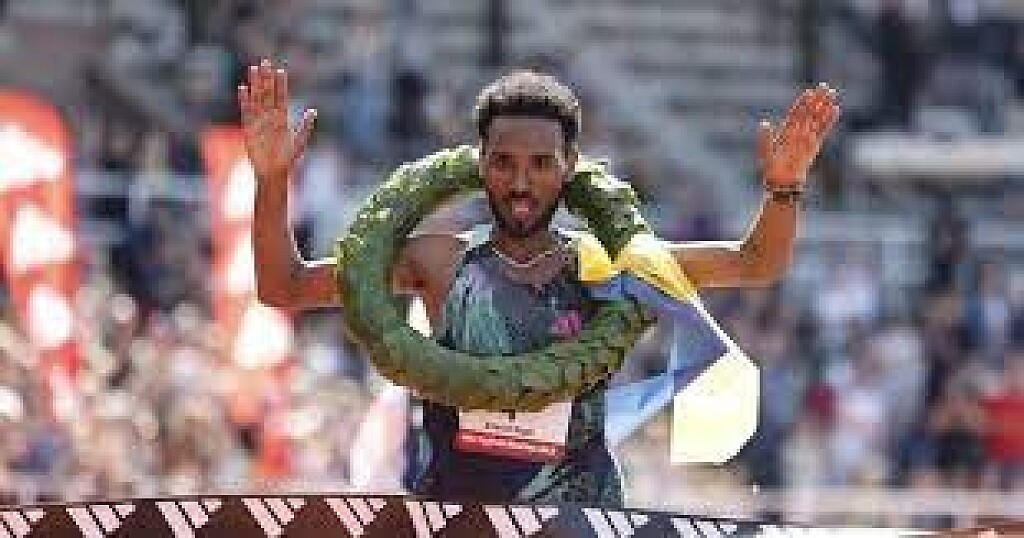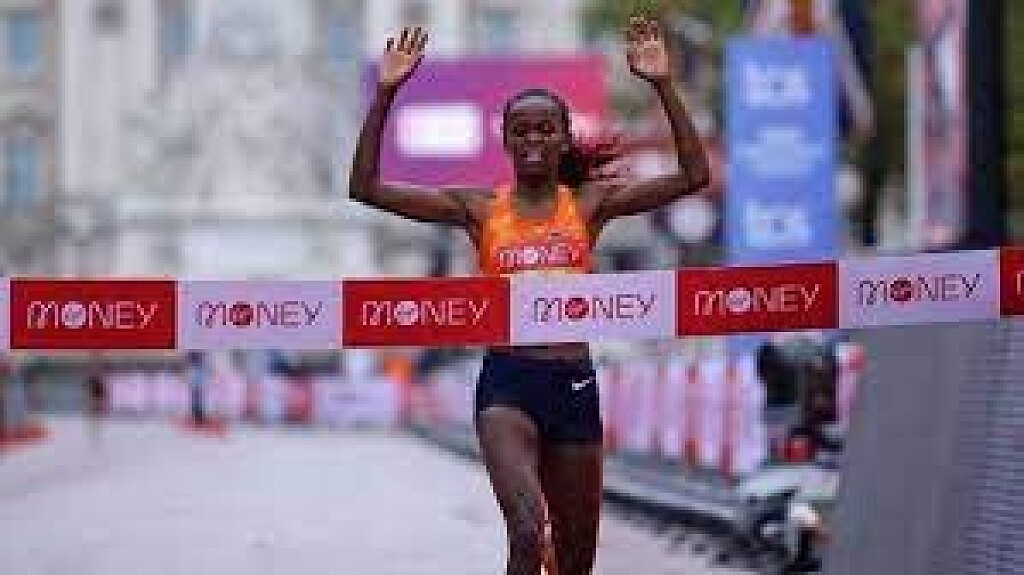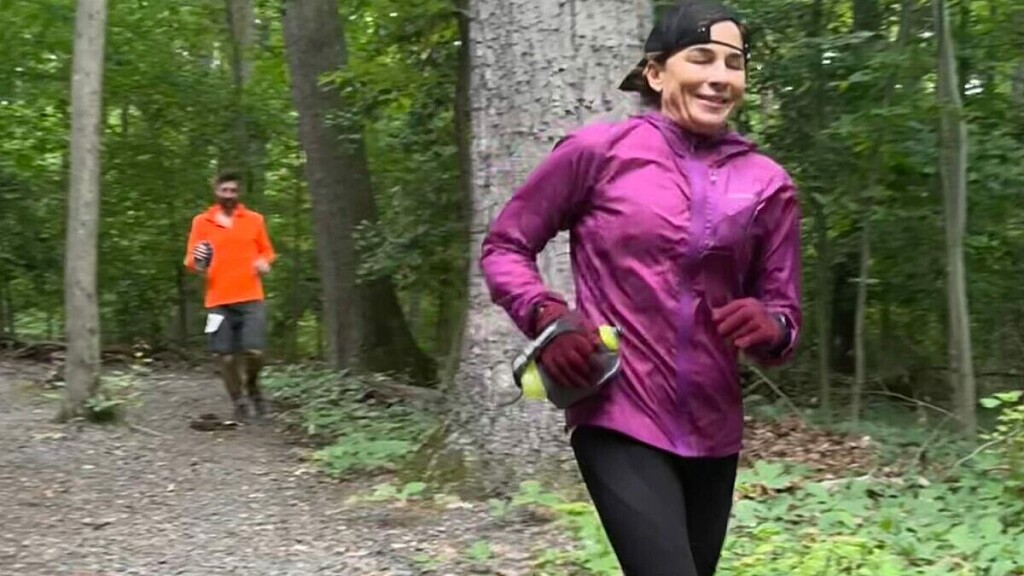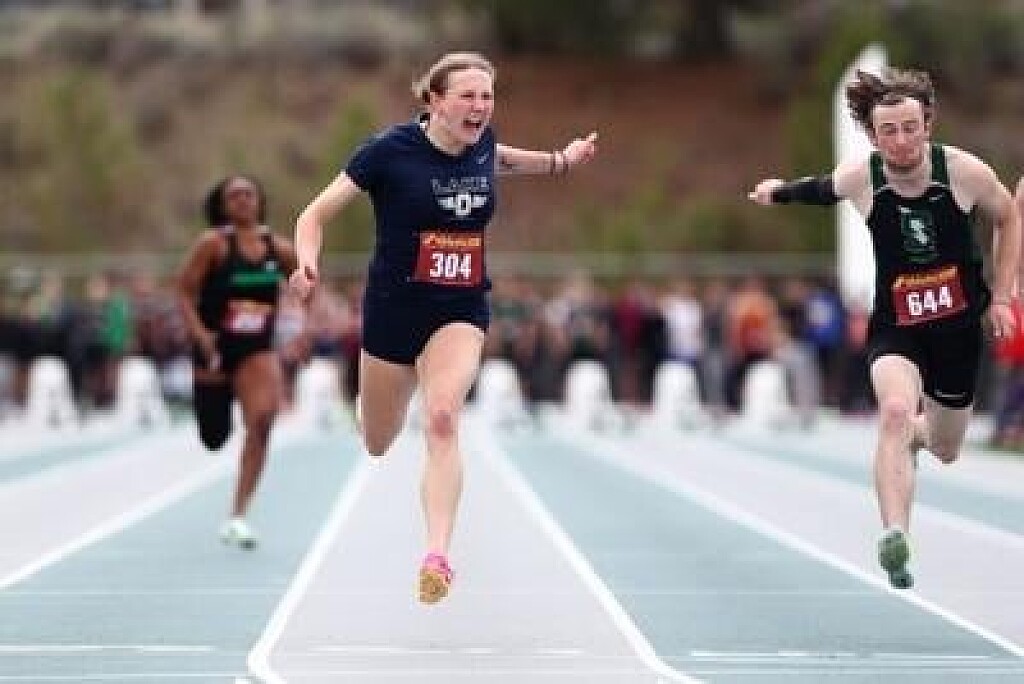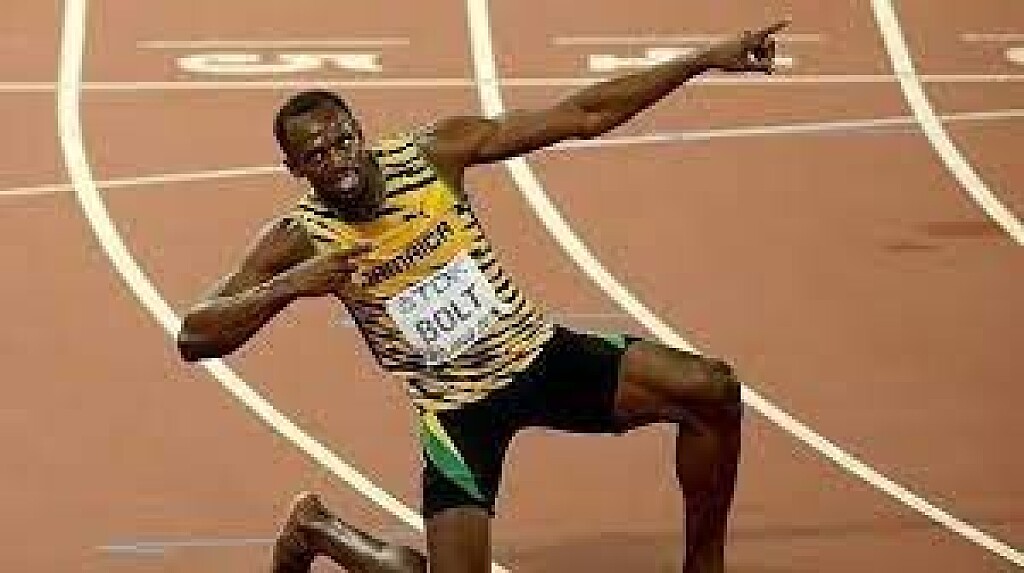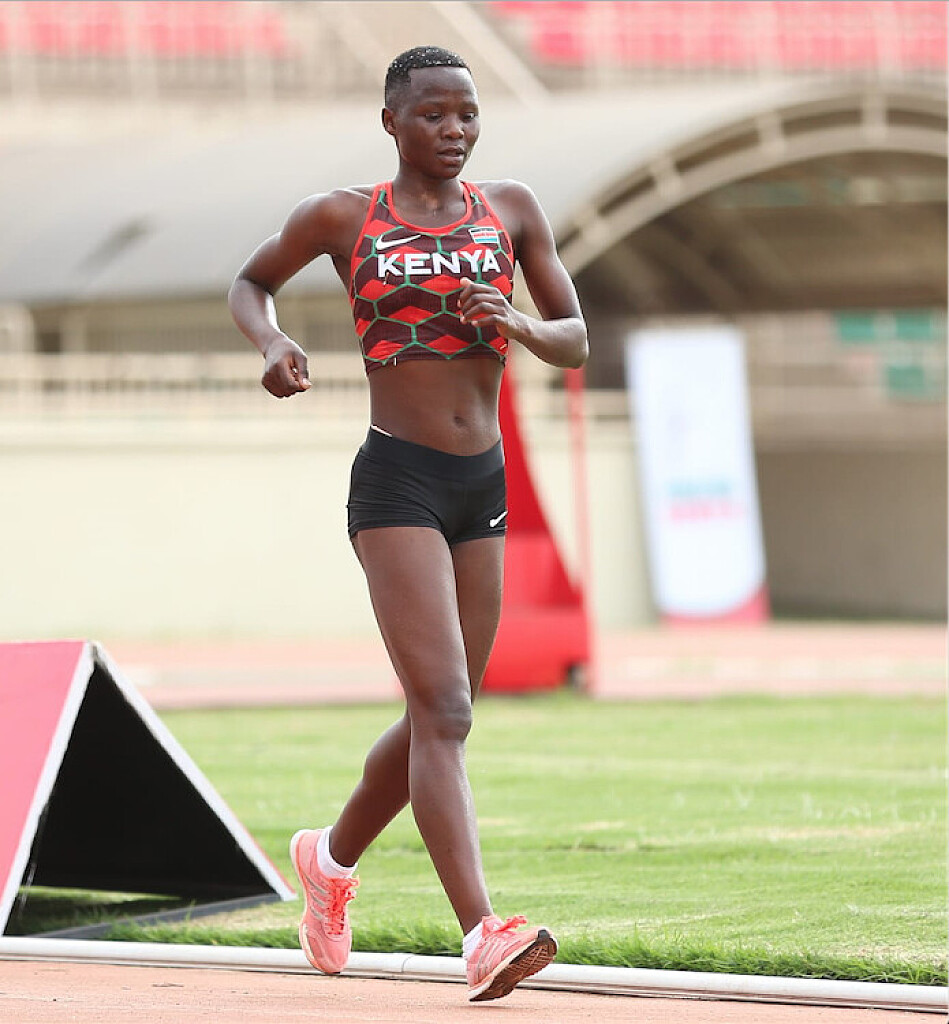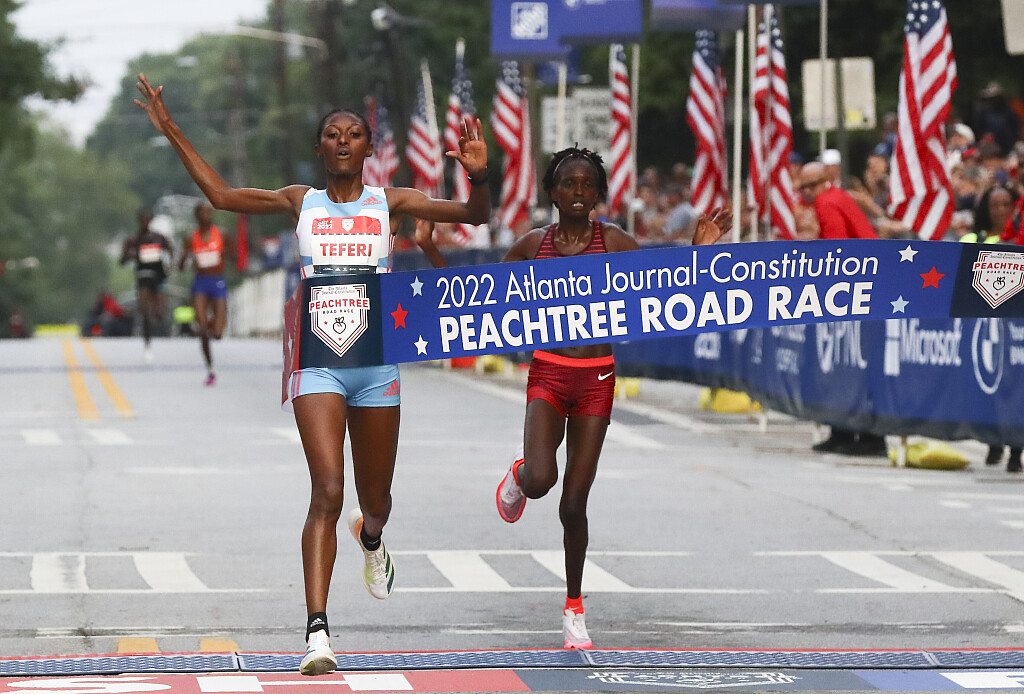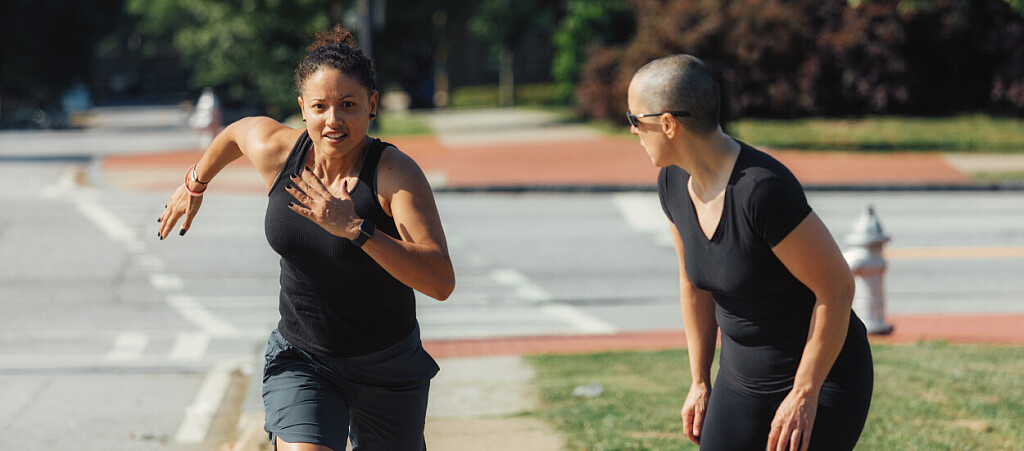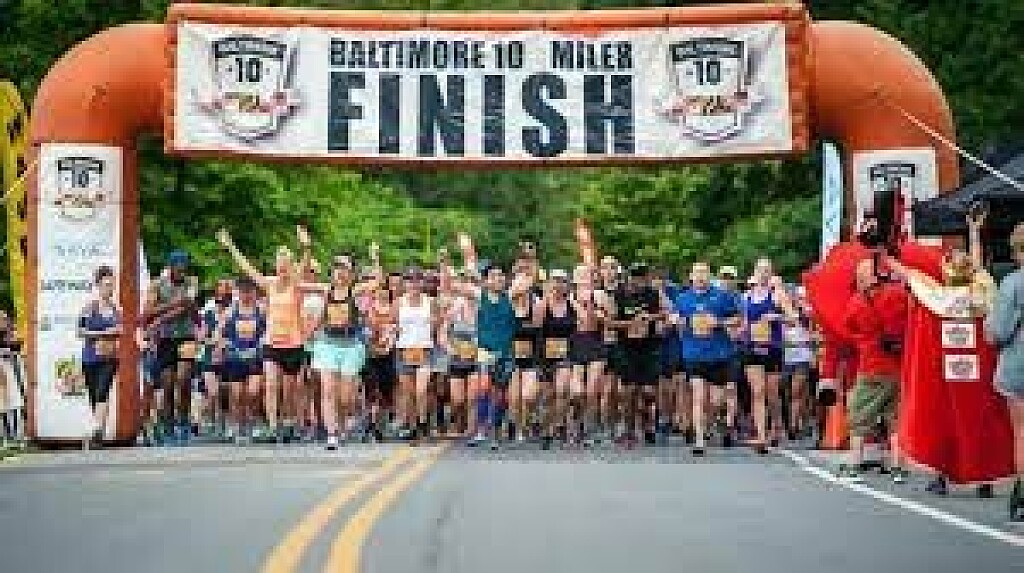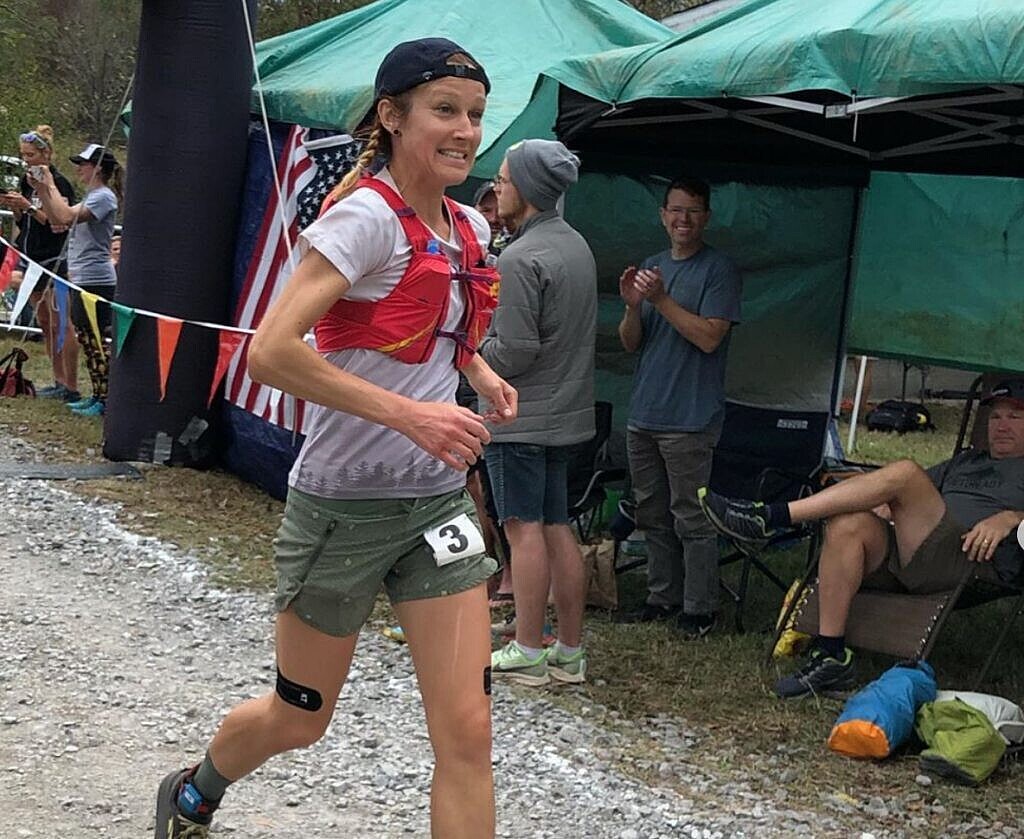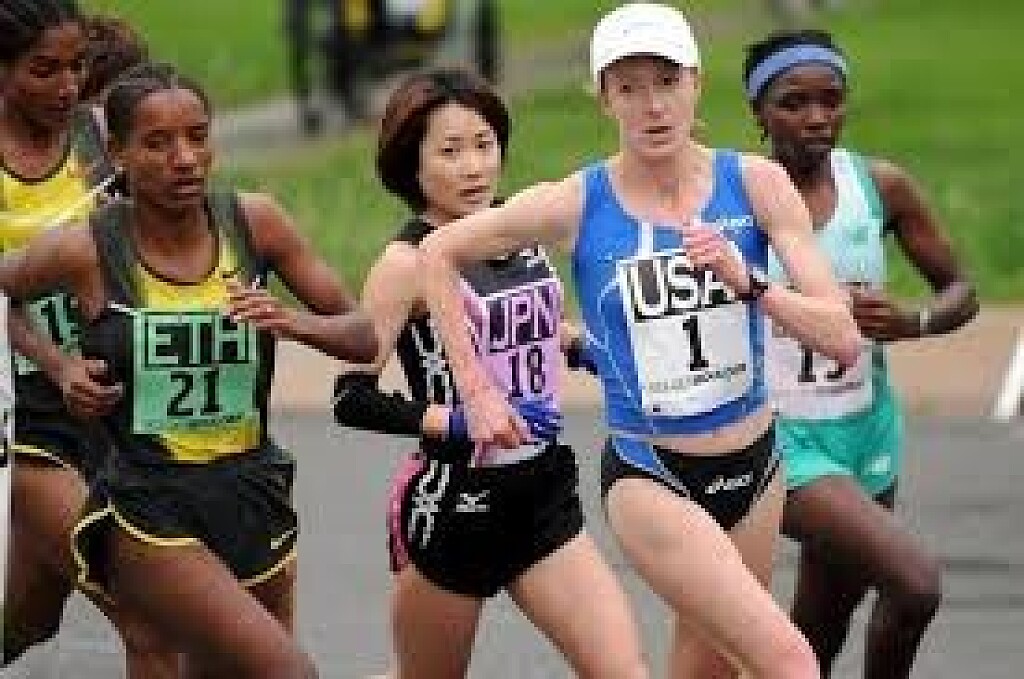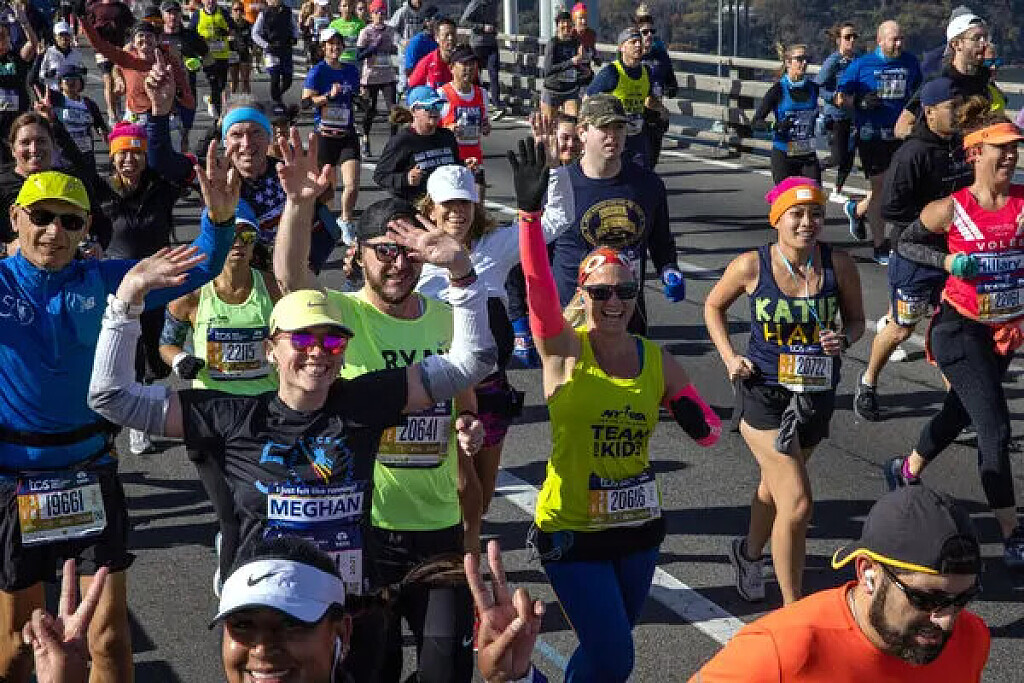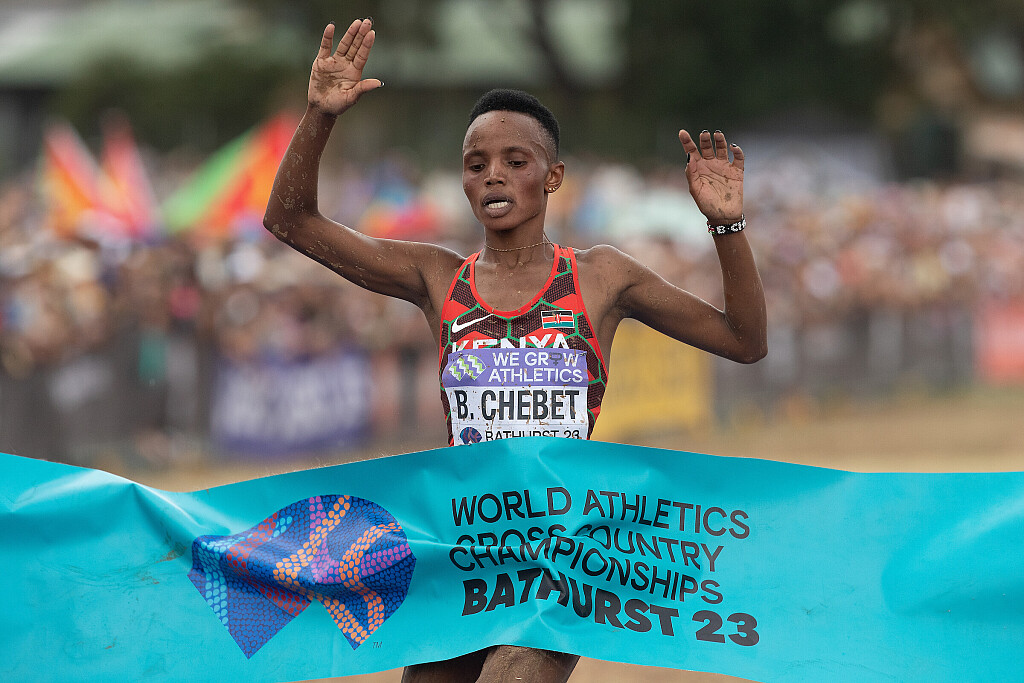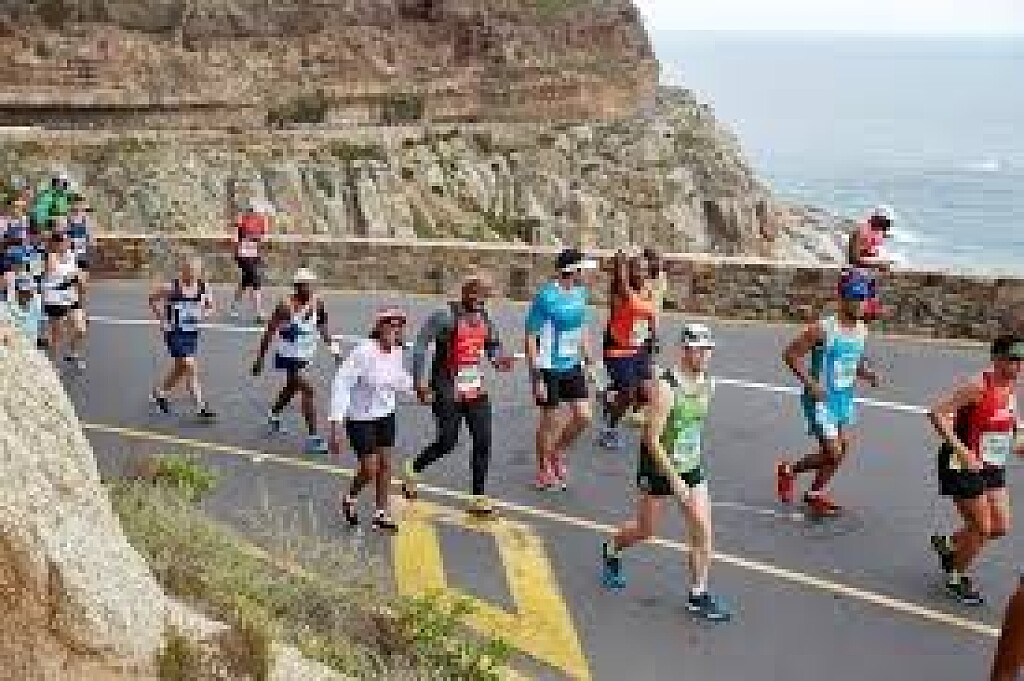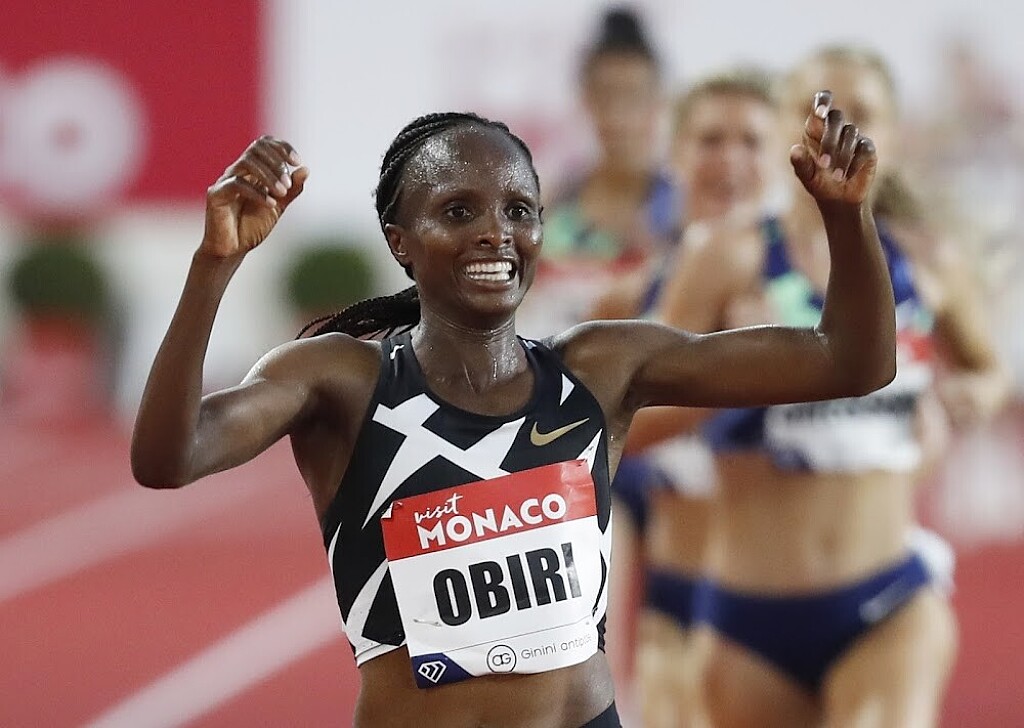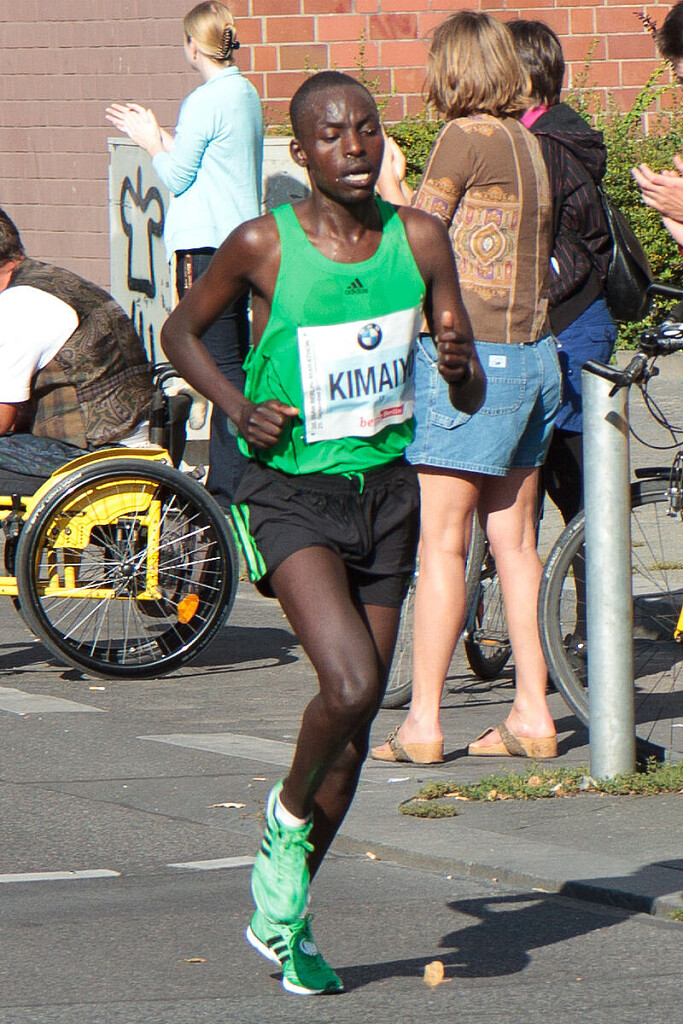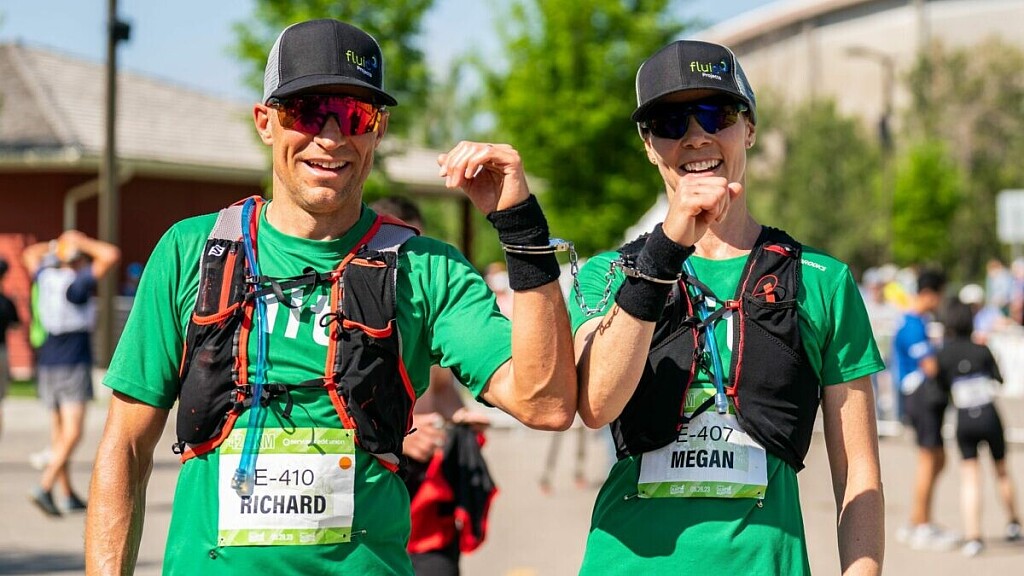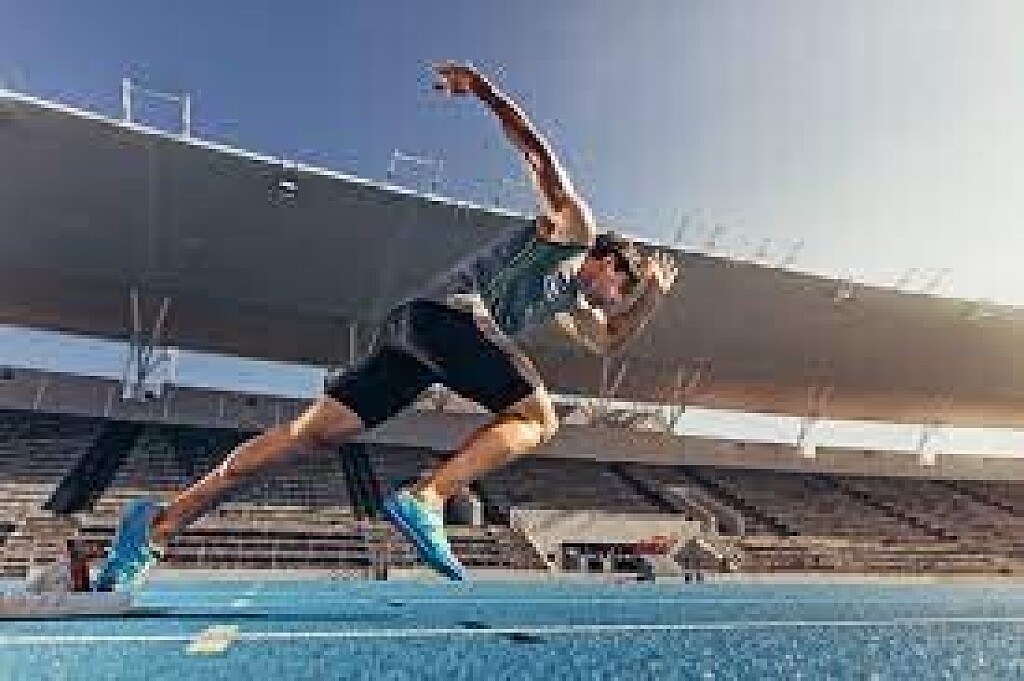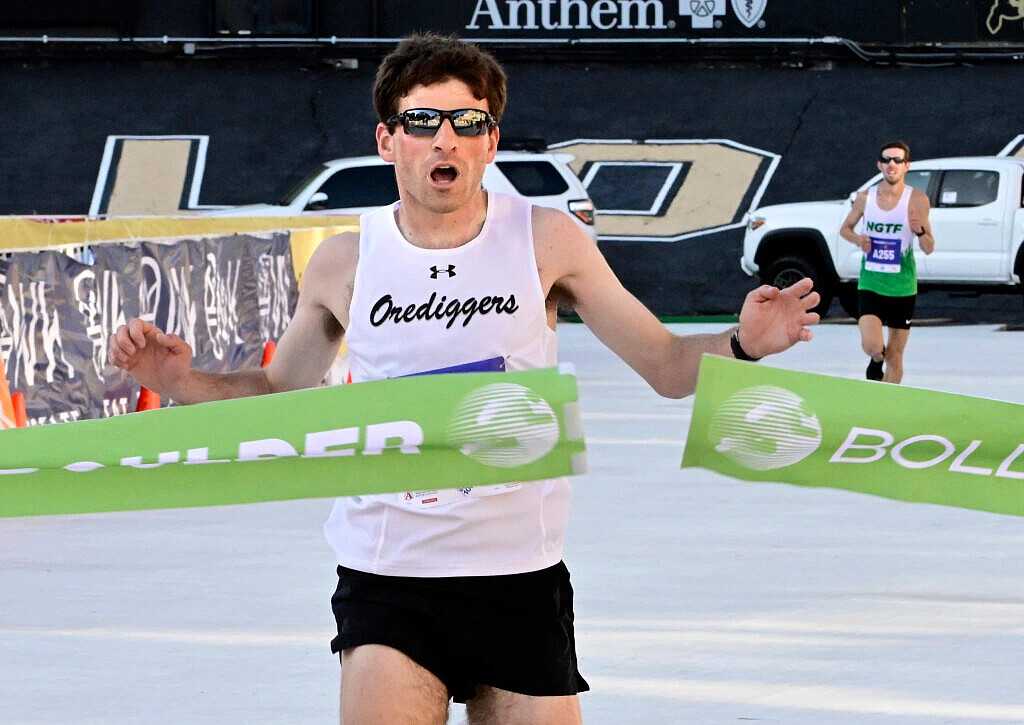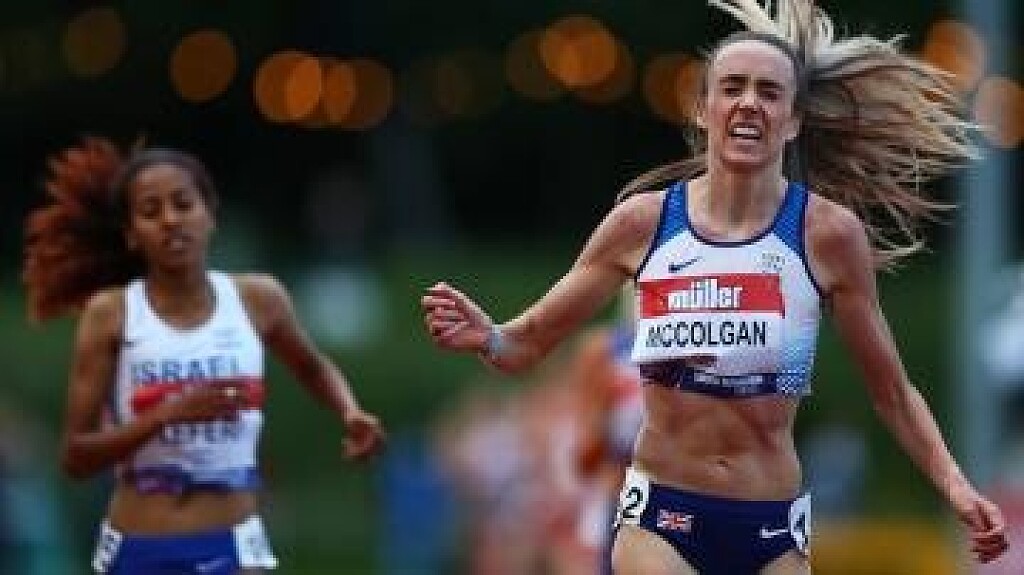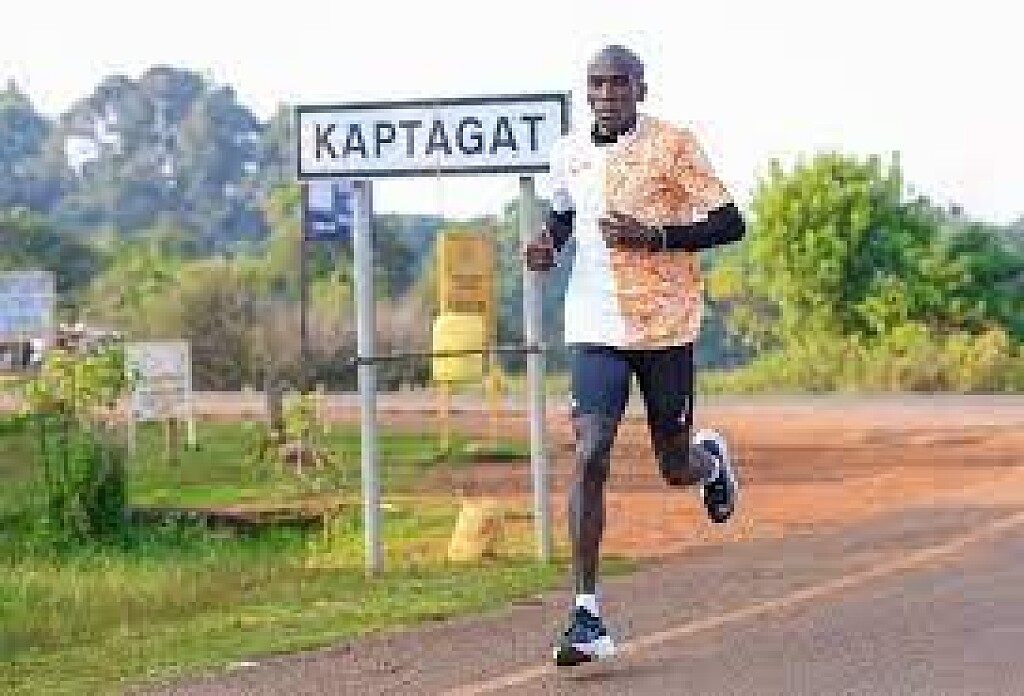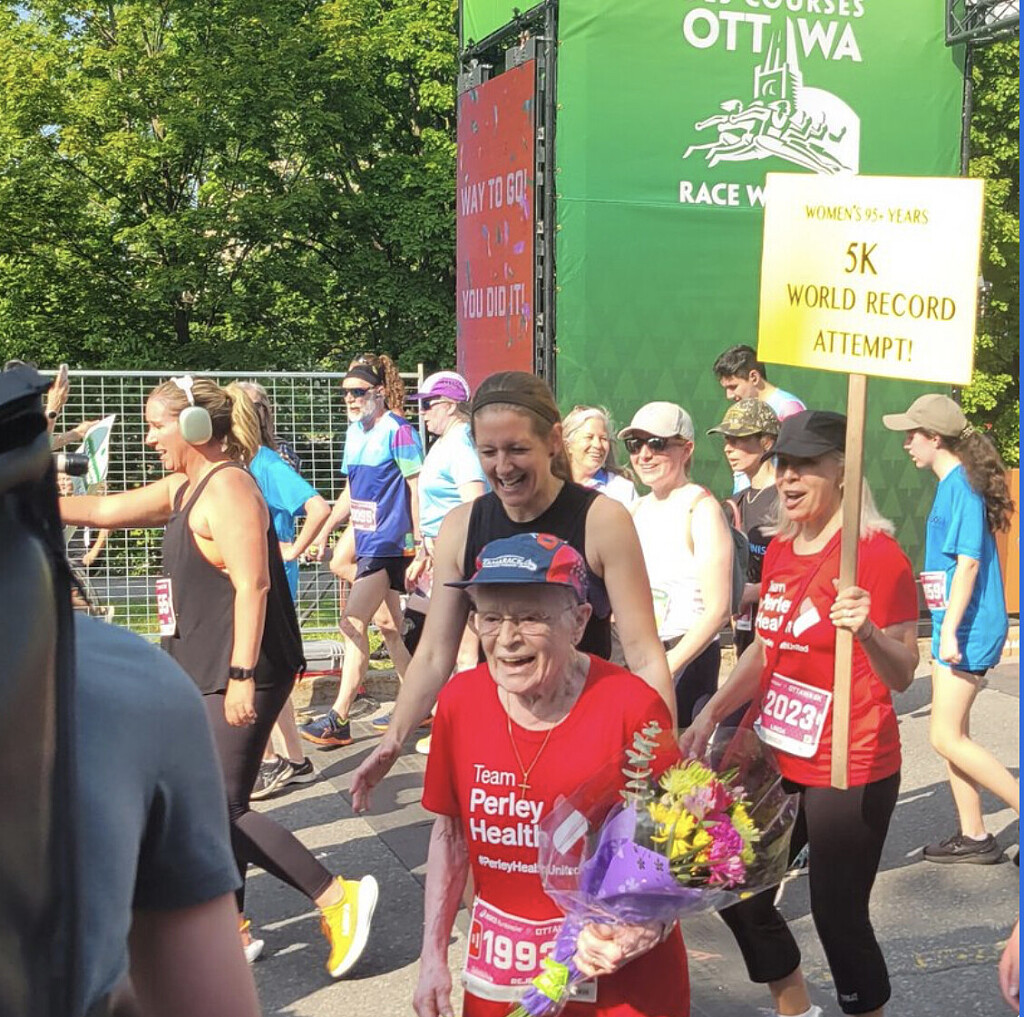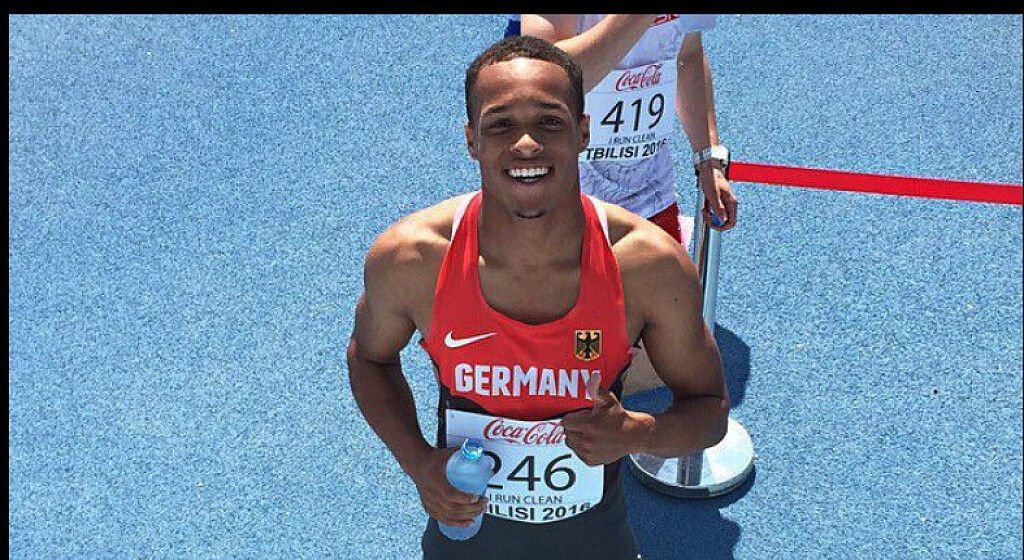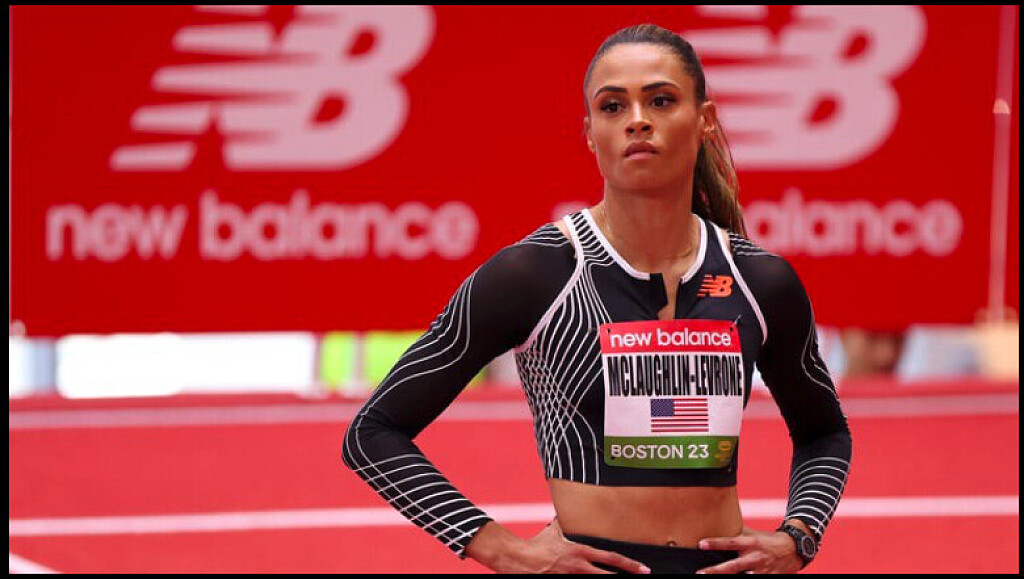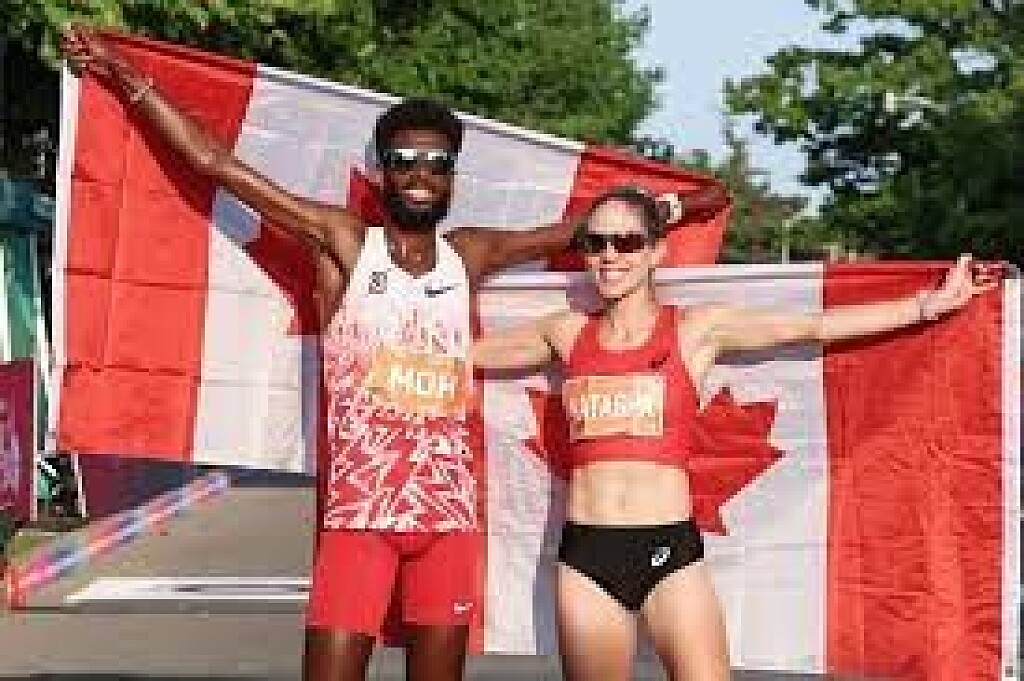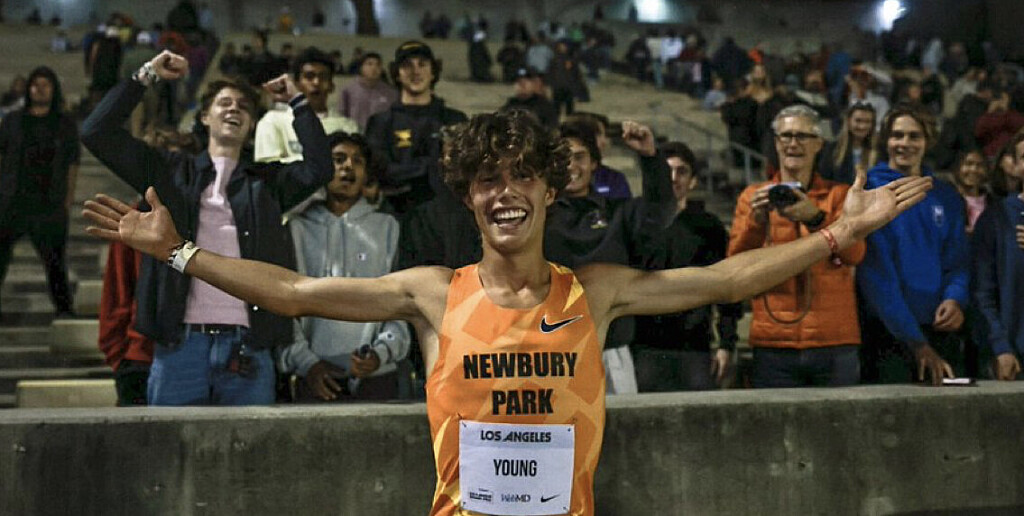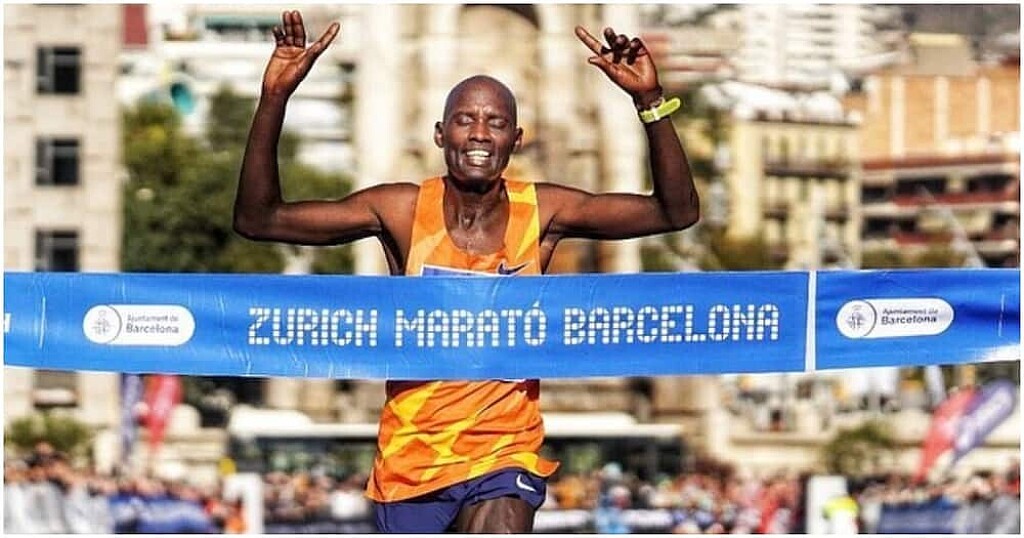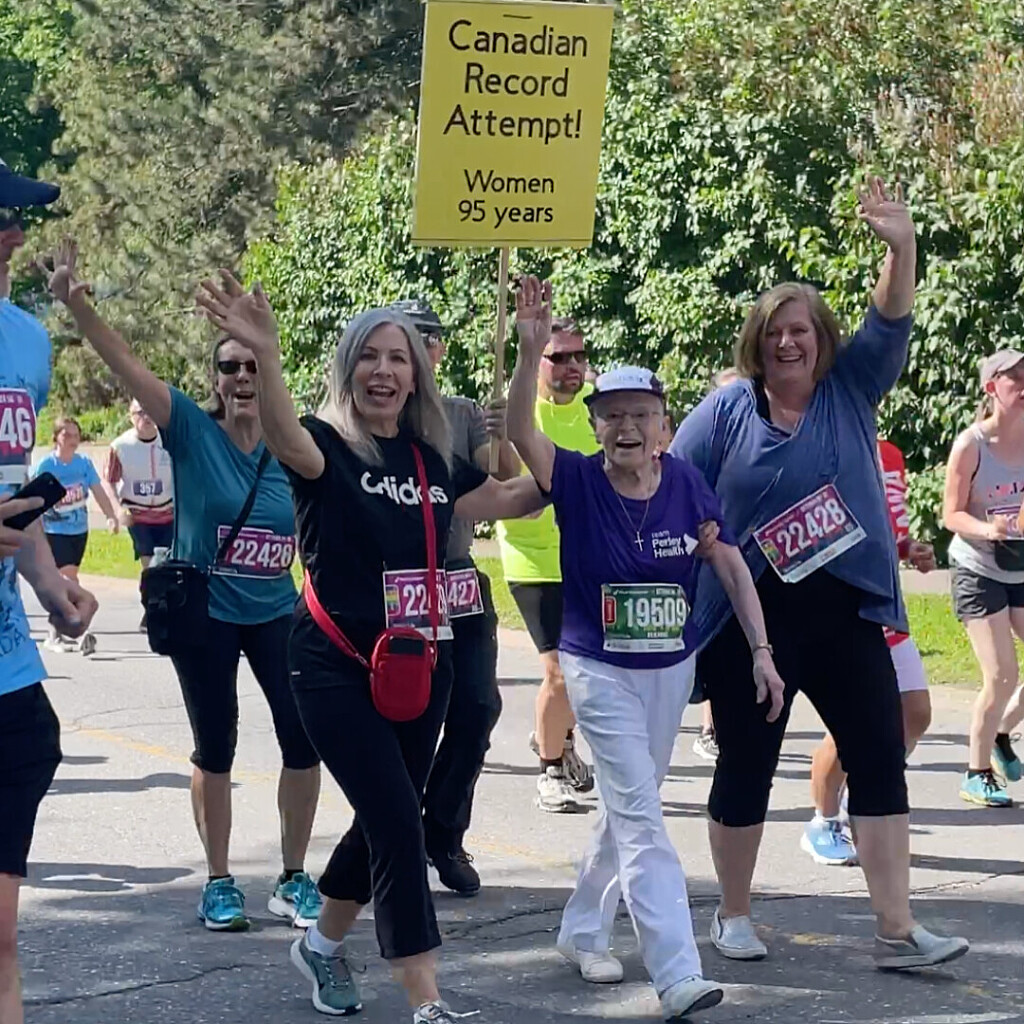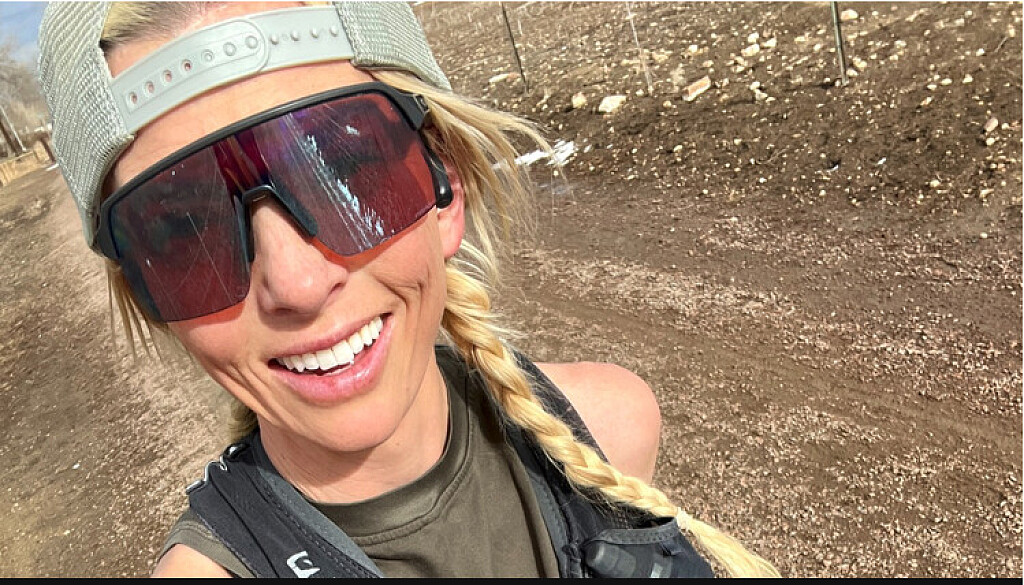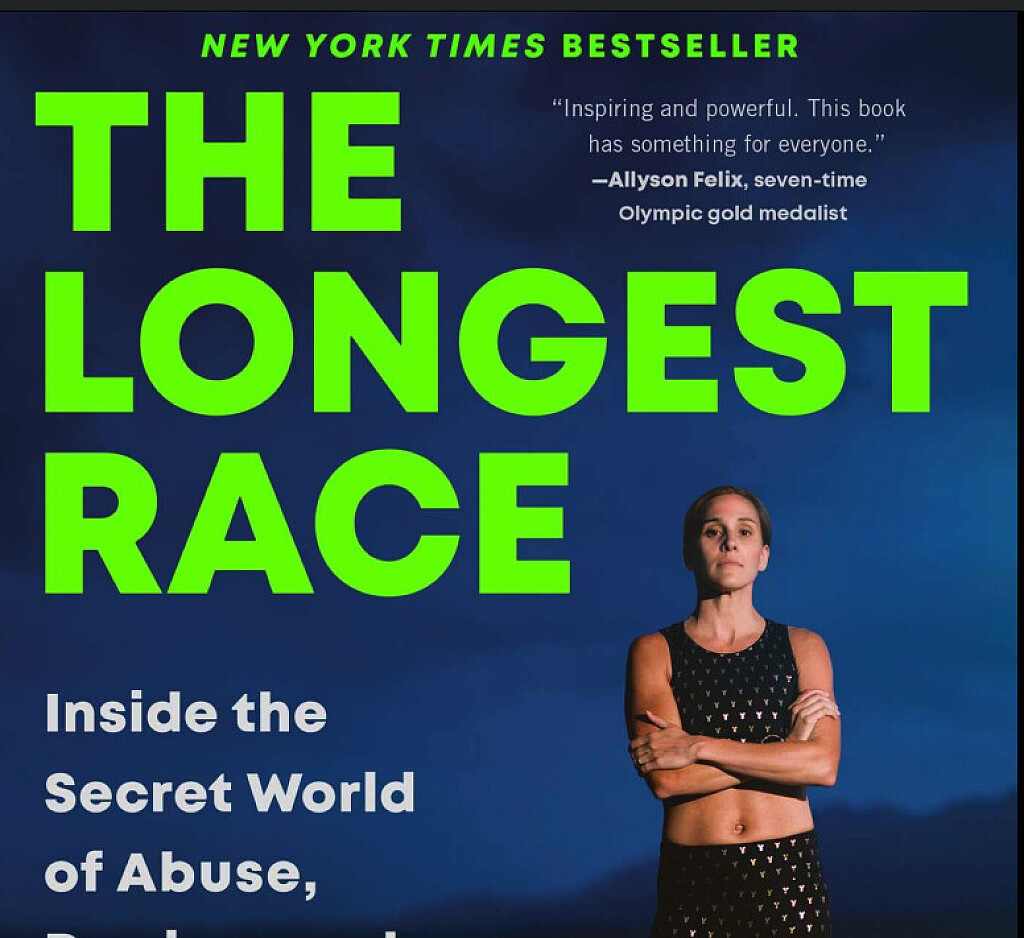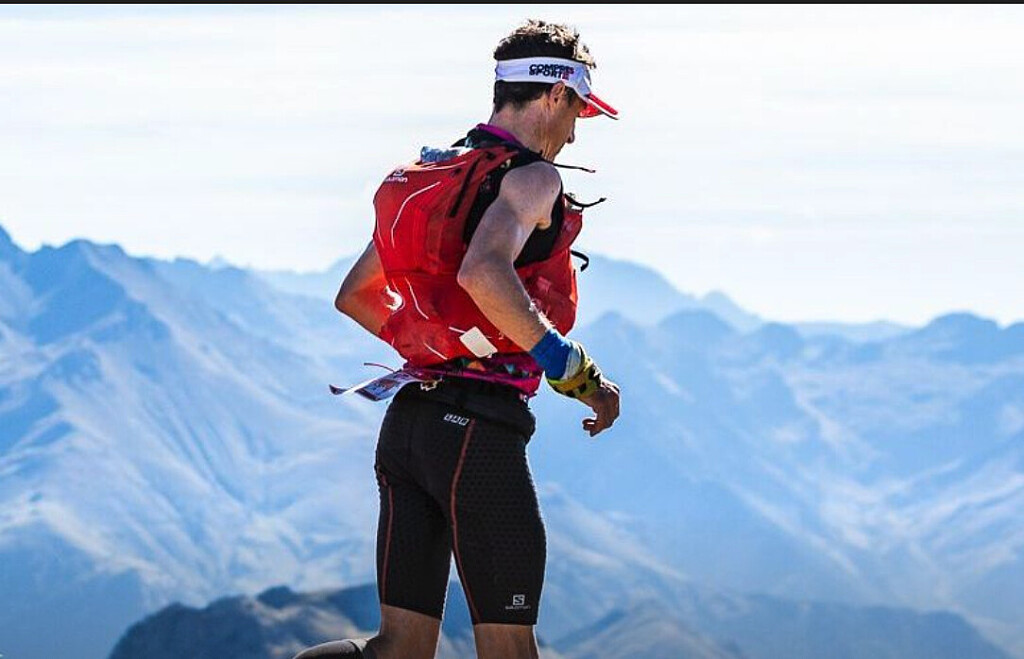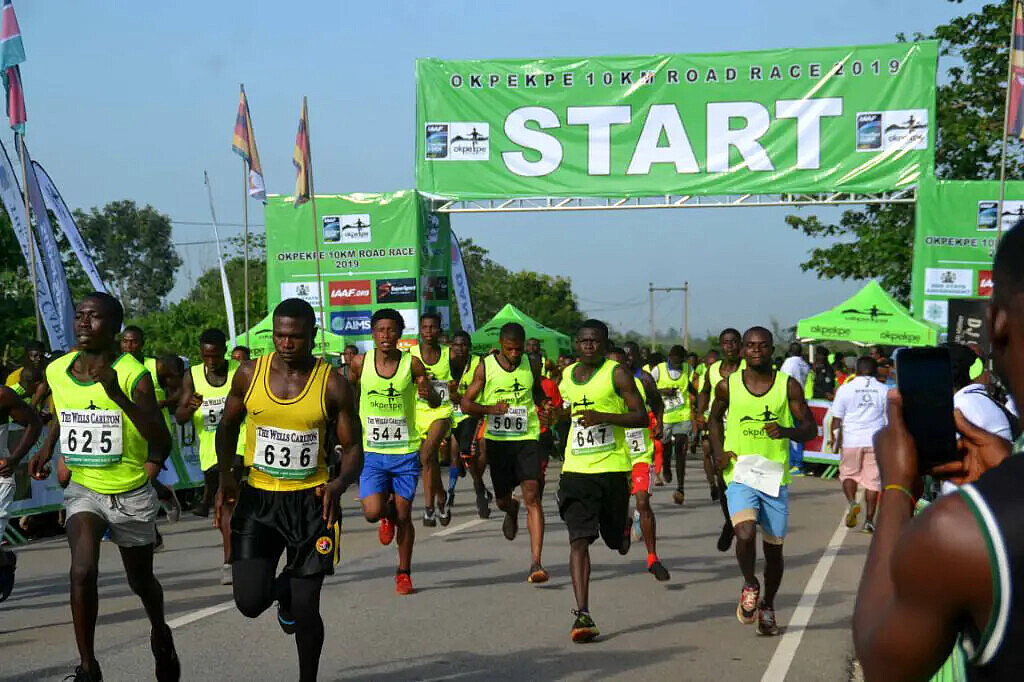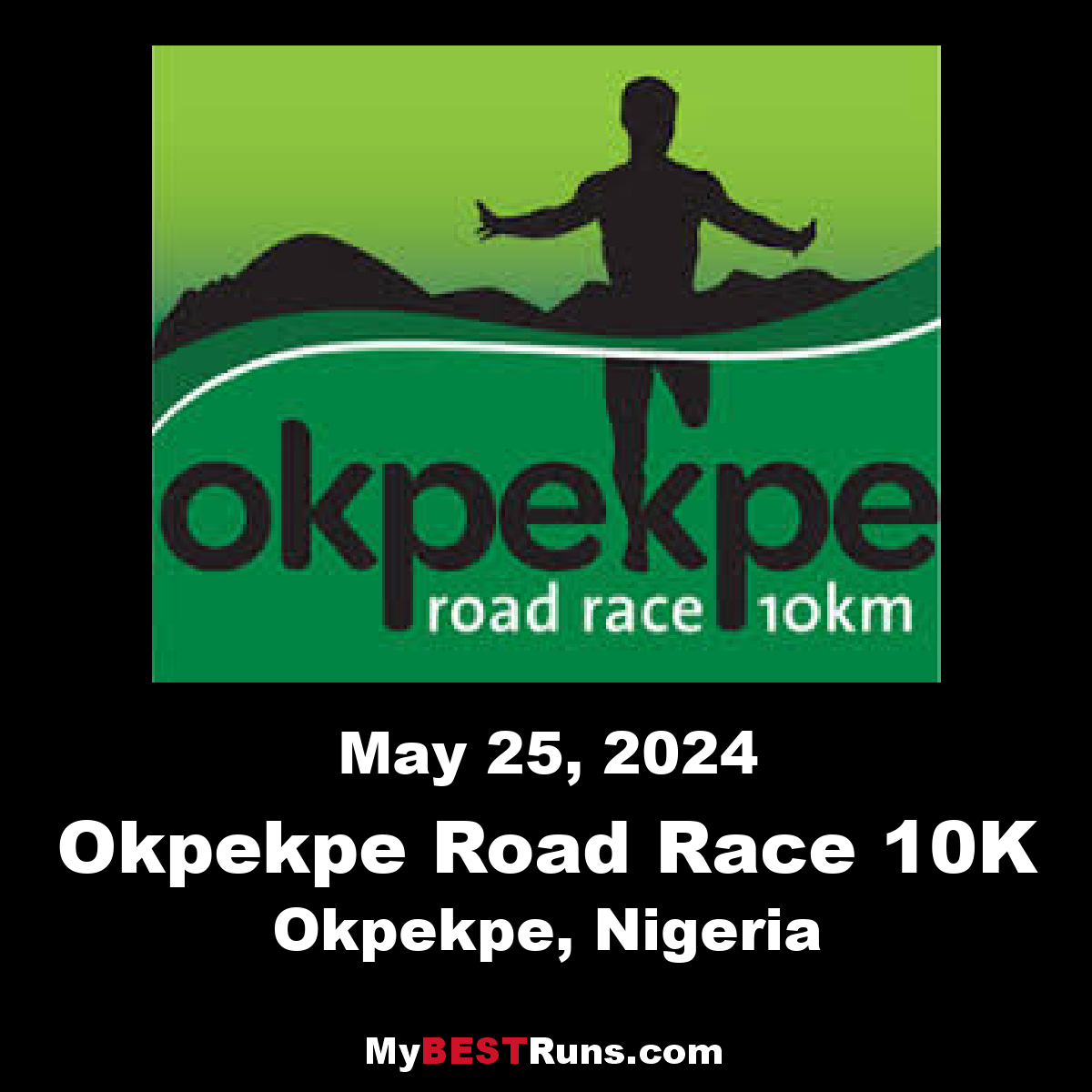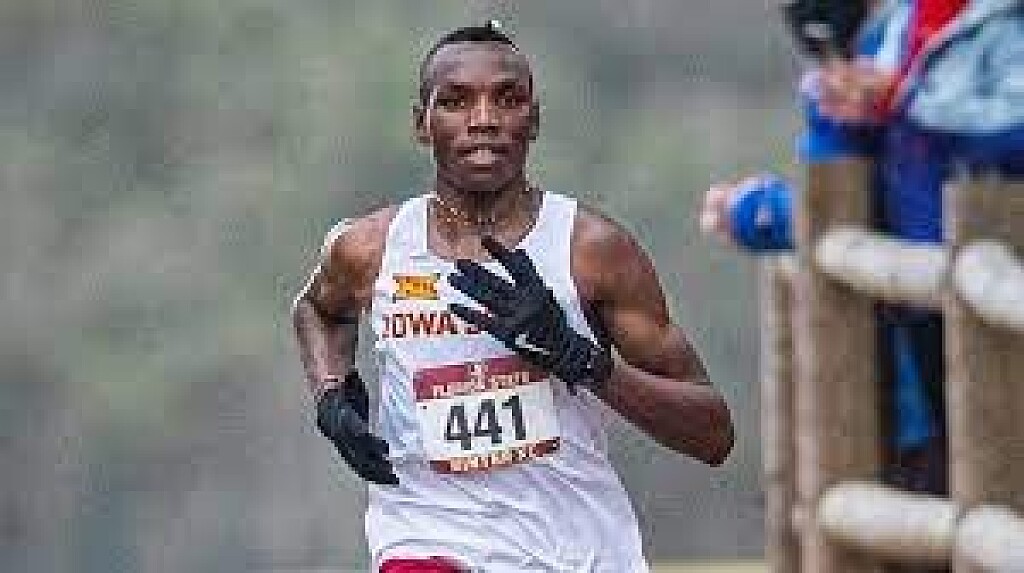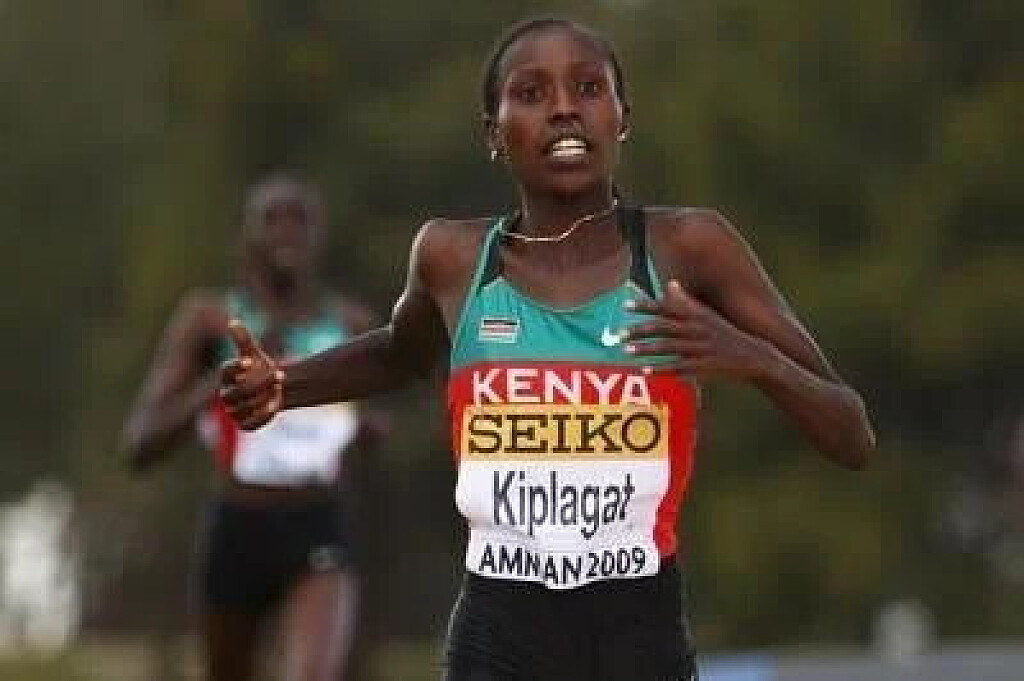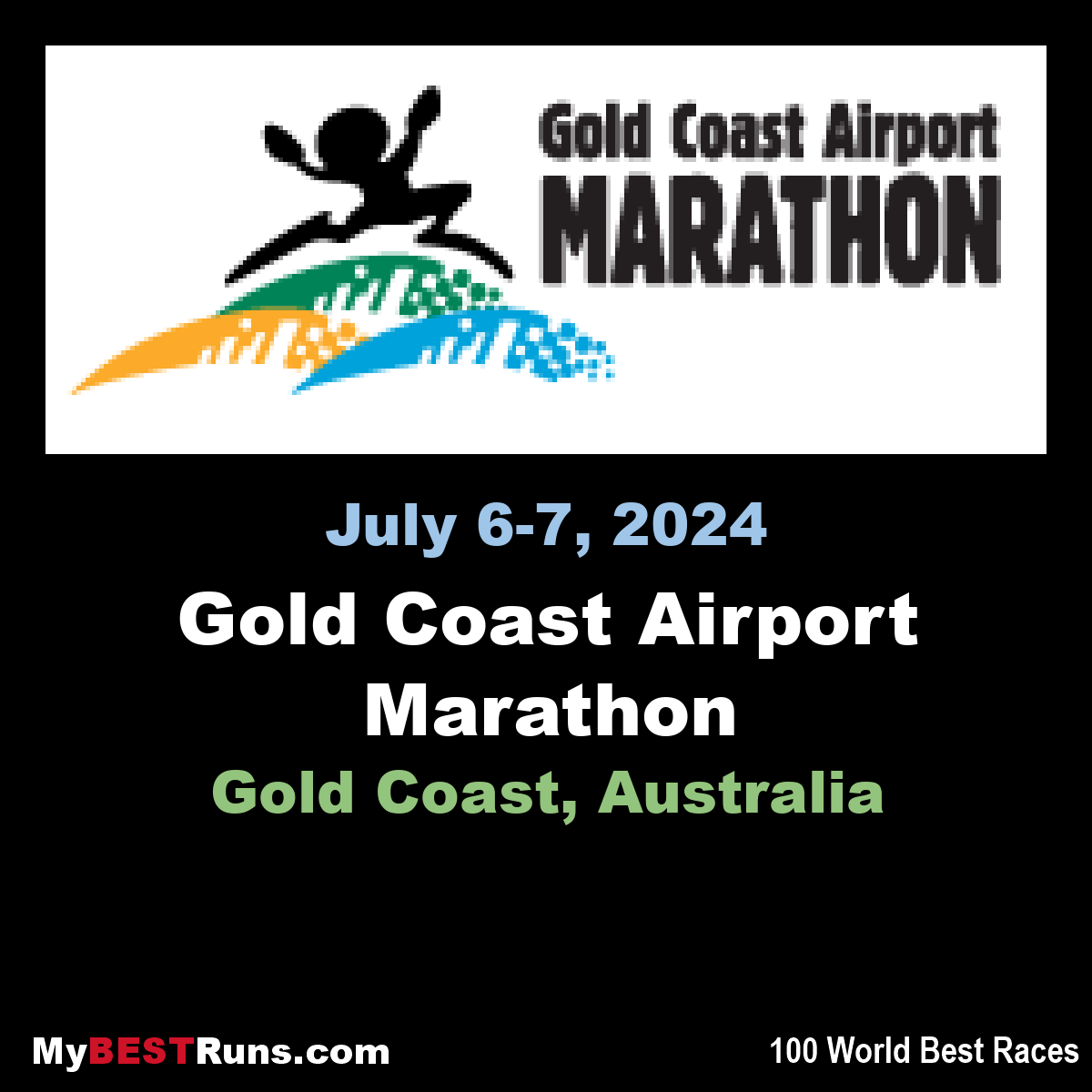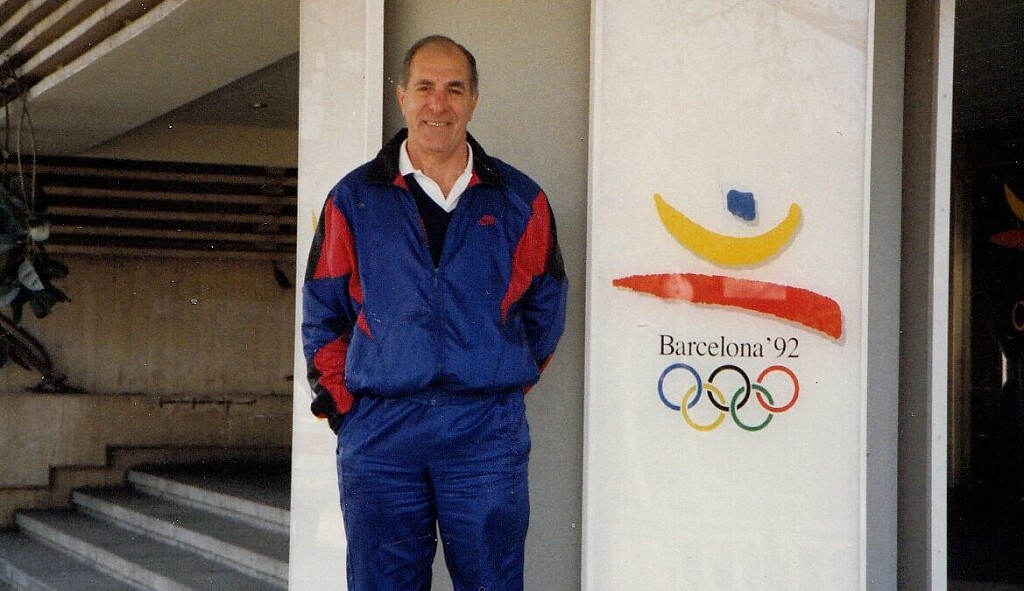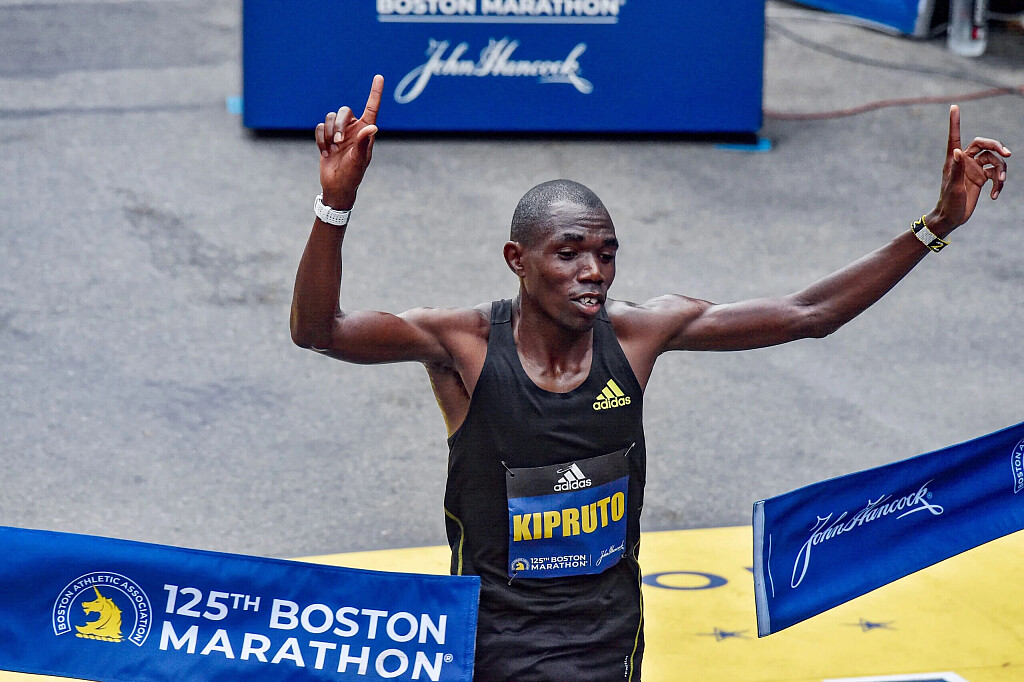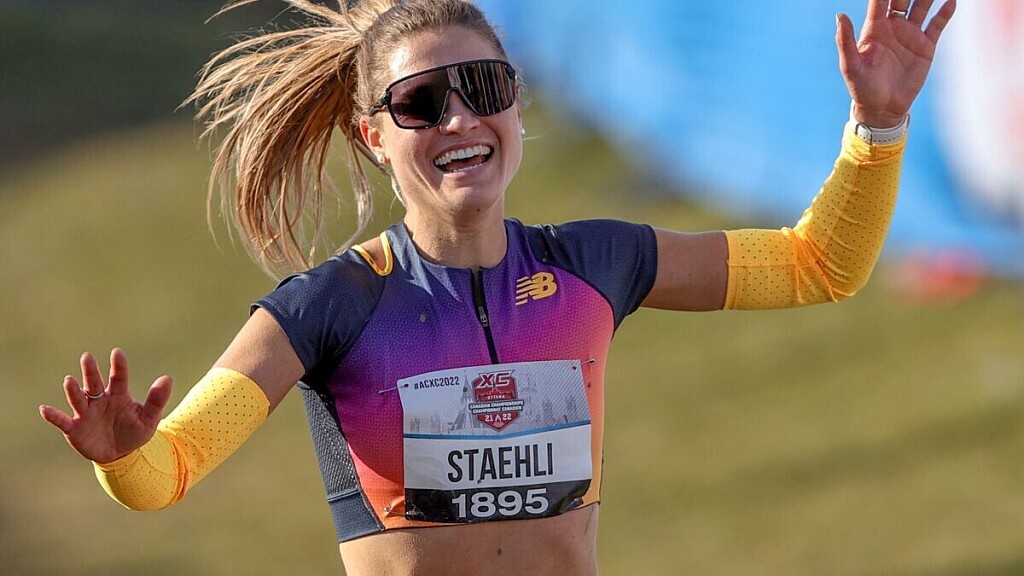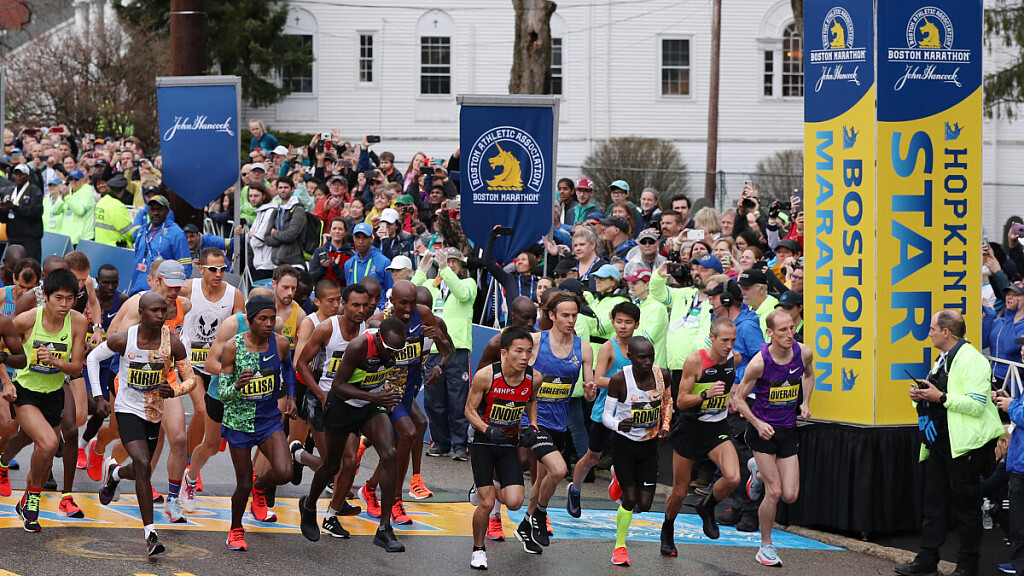Running News Daily
Running News Daily is edited by Bob Anderson. Send your news items to bob@mybestruns.com Advertising opportunities available. Train the Kenyan Way at KATA Kenya and Portugal owned and operated by Bob Anderson. Be sure to catch our movie A Long Run the movie KATA Running Camps and KATA Potato Farms - 31 now open in Kenya! https://kata.ke/
Index to Daily Posts · Sign Up For Updates · Run The World Feed
Teen Runner Gives Over 600 Pairs of Shoes to Elementary School Kids
He organized a 5K run to raise money, and partnered with a nonprofit to outfit them with new kicks
Last year, a high school sophomore in Atlanta spent his daily commute home from school brainstorming ideas for his Eagle Scout project. An avid cross country and track runner whose 4x400-meter relay team won at Nike Indoor Nationals this winter, Collin Maher knew he wanted to give back to his community with a running-related project.

Everyday, he drove past an elementary school attended primarily by economically disadvantaged students. What if he combined his passions to help those kids?
Maher came up with a two-part plan. He organized a 5K race to raise money to give new shoes to every student at Lake Forest Elementary School. He secured permits, requested road closures, and registered the race so it would be USATF-certified and an official qualifier for Atlanta’s premier annual running event, the Peachtree Road Race. He even managed to get a sponsor for the 5K, which he called the Cocoa Classic.
Maher’s event raised $18,000, and he partnered with the nonprofit Shoes That Fit to outfit all 629 students at the elementary school with new shoes. On the charity’s website, the Boy Scout said, “The families there, their priority is not buying new shoes, it’s making sure they have food on the table. I drive by that school every day. And I know a new pair of shoes can boost your confidence. A bad pair of shoes can hurt your feet.”
Teachers sized their students, and last week, Maher arrived on the school’s campus with hundreds of shoe boxes in tow. A Fox 5 reporter wrote that some children yelled, “I love you, Collin,” as they opened their boxes.
“They’re overwhelmed with emotion, I am too just to see this,” said Principal Laryn Nelson, “I’ve never experienced this in my career, and I’ve been doing this 30 years.”
(06/04/2023) ⚡AMPby Runner’s World
New Jersey Runner Saves Family From Fire
She and an 85-year-old neighbor banged on doors and windows to wake the sleeping family
An unnamed runner in South Brunswick, New Jersey, was getting in her early morning miles on Wednesday when something made her pause. She noticed smoke and fire coming from a home in the residential area.

An 85-year-old neighbor named Santo Livio was going about his morning routine and had also noticed “fog” coming from the house, according to ABC7 New York. Together, Livio and the runner sprung into action and helped save the family inside from the fire.
She starts to run, she was banging on the door, I was banging on the window,” Livio told the news station. “I said I’ll go home and call 911. Police and firefighters started coming and the smoke became a blaze.”
Fire alarms didn’t go off inside the home, and the family sleeping inside had no clue that they were in danger until hearing Livio and the runner banging on their door and window. A father and four children were rescued, according to fire officials. The mother wasn’t at home because she was working an overnight shift.
The fire chief, Raymond J. Hayducka, expressed gratitude to Livio and the South Brunswick runner, saying that it was “their quick thinking and heroic actions” that saved the family.
(06/04/2023) ⚡AMPby Runner’s World
Ethiopians Ashenafi Moges and Sifan Melaku runs away with titles at 2023 Stockholm Marathon
Ethiopia’s dominated the 2023 Stockholm Marathon, a World Athletics Label Road Race event, took place on Saturday, June 3. The following are top 20 results from 2023 Stockholm Marathon with Ashenafi Moges and Sifan Melaku running away with the tiles.
On the men’s, Moges away late to win with a time of 2:10:32 pulling away from his countryman Derara Hurisa (Ethiopia) who finished second in a time 2:11:01 ahead of Tsegaye Mekonnen (Ethiopia) who ran 2:12:32 for third place.
The Sweden National Senior Marathon Championships went to Samuel Tsegay after finishing fifth overall with a time of 2:14:28.
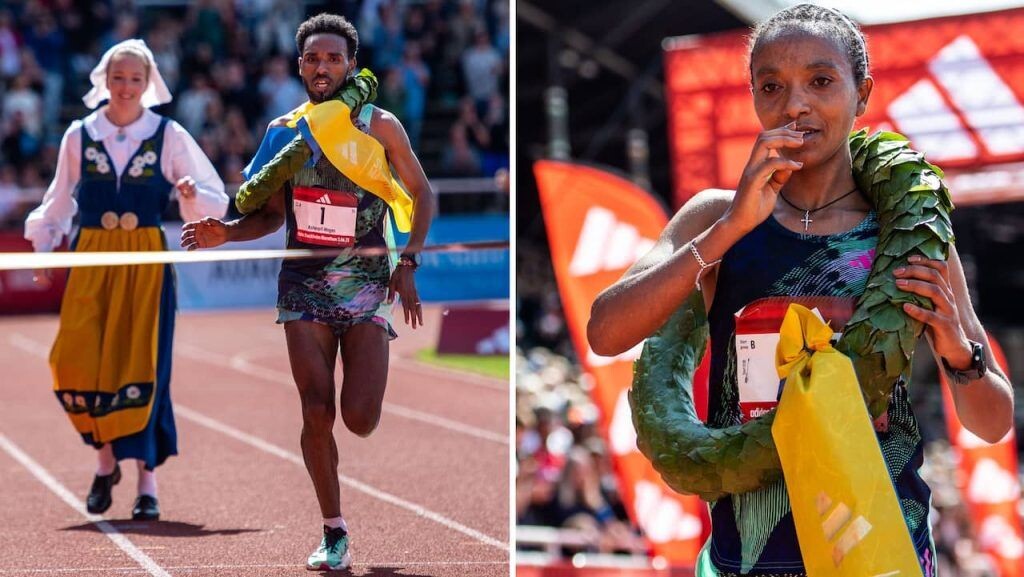
On the women’s side, Ethiopian athletes swept the competition with Sifan Melaku running 2:30:39 for the victory. Her compatriot Sorome Negash (Ethiopia) clocked 02:33:26 for second place with Yenenesh Dinkesa (Ethiopia) getting third in 2:36:39.
The Sweden national title went to Carolina Wikström (Sweden), who finished fourth overall with a time of 2:36:52.
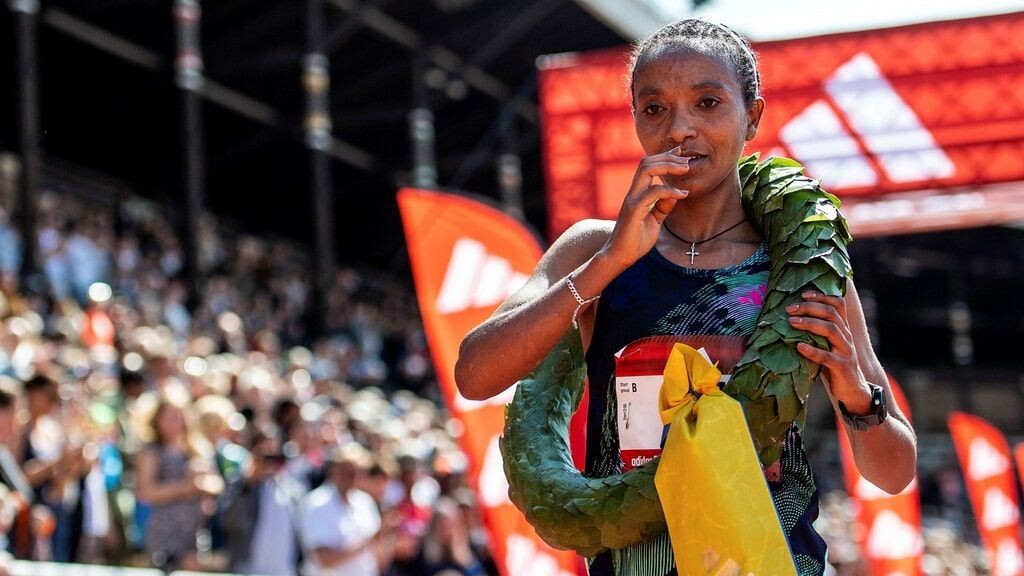
by Glen Andrews
ADIDAS Stockholm Marathon
ASICS Stockholm Marathon is an exciting race in a beautiful city with runners from all over the world. This is one of the major sporting events in Sweden with hundreds of thousands of spectators along the route cheering the participants. The race takes you through Stockholm, one of the world’s most beautiful capitals. Built on 14 islands around one of...
more...Kiptum, Kosgei to lead Kenya Marathon team in Budapest
The second fastest man in marathon history, Kelvin Kiptum and women's world marathon record holder Brigid Kosgei will lead the Kenyan marathon team at the World Athletics Championship in Budapest, Hungary, scheduled for August 19-27.
Kiptum, the 2023 London Marathon champion will team up with Geoffrey Kamworor and Titus Kipruto.
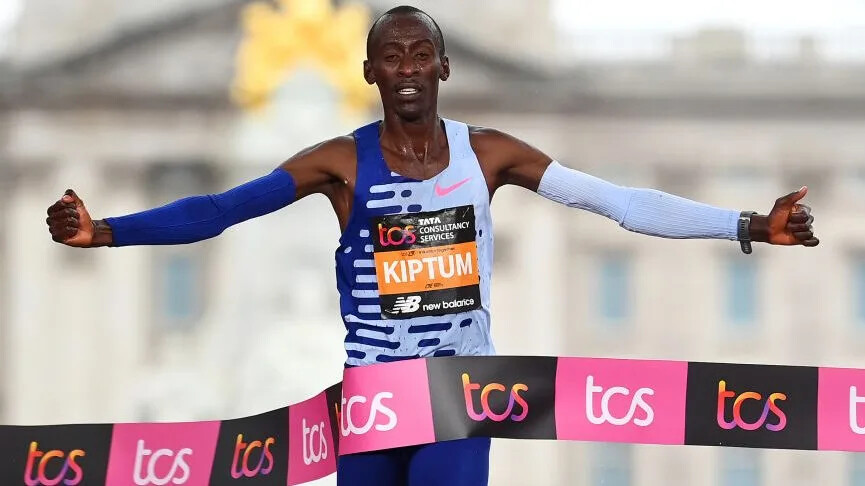
The 2023 Rotterdam Marathon silver medalist Timothy Kiplagat and the 2022 Commonwealth Games bronze medalist Michael Githae are the reserve runners.
Double Chicago and London Marathon champion Kosgei will have company from the 2023 Tokyo Marathon winner Rosemary Wanjiru and the 2016 5,000m African champion Sheila Chepkirui.
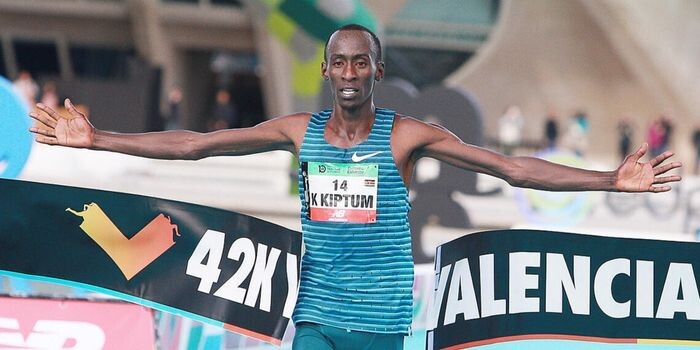
The 2022 Commonwealth Games silver medalist Margaret Wangari and the 2014 World Half Marathon bronze medalist Selly Chepyego will be the reserve runners for the women's cadre.
The men's team will be targeting reclaiming the world title that Kenya last won in 2017 through Geoffrey Kirui.
Kenya was last victorious in the women's category in 2019 when Ruth Chepngetich was crowned in Doha. Kosgei and Co will be on a mission to recapture Kenya's lost glory.
The team was named after Athletics Kenya held a meeting with a panel of coaches in Eldoret on June 1.
The panel consisted of Patrick Sang, Richard Metto, David Leting, Julius Kirwa, Joseph Cheromei and Peter Bii.
Athletics Kenya director for competitions, Paul Mutwii disclosed that the line-up was based on the willingness and availability of the athletes.
(06/03/2023) ⚡AMPby Samuel Nganga
World Athletics Championships Budapest 23
From August 19-27, 2023, Budapest will host the world's third largest sporting event, the World Athletics Championships. It is the largest sporting event in the history of Hungary, attended by athletes from more than 200 countries, whose news will reach more than one billion people. Athletics is the foundation of all sports. It represents strength, speed, dexterity and endurance, the...
more...Too Mentally Fried on a Run? Here’s How to Motivate Yourself to Keep Going
New research shows that motivational self-talk can counter brain drain.
Susanna Sullivan is no stranger to mental fatigue. From late August until early June, the 2:24 marathoner teaches pre-algebra to 104 sixth-graders—which, if you’ve ever dealt with middle schoolers, you’ll know can be exhausting.

“If a student asks, ‘Can I go to the office?’ I immediately have to make all these other considerations: Who else is out of the room? Do I trust the kid to go directly to the office? Are they distressed?” says Sullivan. “By the end of the day, my brain is toast.”
While her non-athletic colleagues may be able to go home and recharge after a long day, Sullivan needs to find a way to rally. Her coach, who is the head coach at George Mason University, holds practices in the evenings. Given that Sullivan is expected to make the American marathon team for the World Championships in August, these workouts matter... whether she’s mentally drained or not.
Much of the prevailing advice recommends doing your best to prevent mental fatigue. For runners like Sullivan, however, prevention isn’t a viable option. In that case, science suggests motivational self-talk might be the solution.
The Problem With Mental Fatigue
Anyone who has had a “long day” knows what mental fatigue feels like: you’re drained, you can’t concentrate, your self-regulation is trashed, and you probably have no interest in going for a run, never mind a hard workout. This comes from putting in the effort to pay attention to something while blocking out distractors—which research shows is tiring and kills your ability to self-regulate.
“There are a certain amount of effs you can give in a day. And if you give them all up, by the end of the day you’ve got none left to give,” says Shannon Baird, Ph.D., a certified mental performance consultant who works with the United States Army Special Forces.
Typically, Baird and others recommend finding ways to pause and recharge throughout the day to avoid creating a mental fatigue “deficit.” If you become mentally fatigued, the most common recommendations are to put off a hard workout or adjust your pace or intervals. Sometimes, however—as in Sullivan’s reality—mental fatigue is unavoidable, and you can’t reschedule. If you hit traffic on your way to a race, for instance, you can’t just move the race to a different day, and you probably don’t want to give up on your goals. In that case, according to a recent study published in the Journal of Applied Sport Psychology, try some motivational self-talk.
Why Motivation Is Important
According to Gleber Pereira, Ph.D., an associate professor in the physical education department at Universidade Federal do Paraná in Brazil and the lead author on the study, motivation is a key contributor to whether or not you’re willing to continue exercising, particularly at a given intensity.
“We have two reasons to explain how you stop or continue exercise: potential motivation, or your willingness to keep exerting yourself in exercise, and motivational intensity, which is how you perceive effort during the exercise,” he says. According to this model, a runner will slow down or stop when their perceived effort matches their level of willingness.
Mental fatigue has a double-whammy effect when it comes to potential motivation and motivational intensity:
First, researchers theorize that it may decrease your potential motivation before you ever start exercising.
Second, it makes you perceive the effort as more difficult sooner than if you were mentally fresh.
Therefore, Pereira and his colleagues hypothesized that if they could manipulate athletes’ motivation levels, they could offset these performance-impairing effects of mental fatigue. They decided to test an intervention that is freely available to every athlete: self-talk.
Testing Motivational-Self Talk
The researchers took 12 men who typically exercised three to five days per week and had them perform three identical cycling tests to exhaustion several days apart. In the first two sessions, participants spent 30 minutes prior to the cycling test either relaxing in a comfortable chair (the control condition) or performing a mentally fatiguing activity called the Stroop task.
During this task, participants identified the display color of words that appeared on a computer screen while ignoring the color that the letters spelled out. (So if the word “red” appeared in green ink, the participant was supposed to press the green button.) The researchers then used a brainwave-measurement technique called electroencephalography and asked participants to self-report their level of fatigue to confirm that, in the mental fatigue condition, they were in fact mentally fatigued.
In the third session, participants were trained how to perform motivational self-talk—essentially redirecting negative thoughts by using short motivational phrases such as “Let’s go!” and “You can do it!” They then performed their final cycling test, which used the same setup as the mental fatigue (Stroop task) condition; this time, however, they were instructed to use motivational self-talk cues whenever they had negative thoughts, felt tired, or otherwise wanted to stop.
It Works!
When the subjects were mentally fatigued, their endurance performance worsened (i.e., they quit sooner) by approximately 19 percent compared to the control condition. However, when the subjects were mentally fatigued and practiced self-talk during exercise, their endurance performance remained similar to the control condition—meaning that despite being mentally fatigued, they were able to maintain their effort for longer.
Pereira and his colleagues speculate that motivational self-talk works in two ways. First, it helps you maintain or increase your potential motivation, i.e., your willingness to exert yourself.
“Mental fatigue may decrease your potential motivation from before you exercise,” says Pereira. “But when you use motivational self-talk, you might increase your willingness to exert.”
Second, it affects your perception of effort. The researchers found that while mental fatigue increased participants’ ratings of perceived exertion (RPE) and feelings of displeasure at the outset of the test (compared to control), the participants reached their peak RPE and feelings of displeasure—which would lead to slowing down and stopping—later in the test when they used motivational self-talk than when they didn’t.
Put another way, motivational self-talk helped them to delay feelings of maximal exertion (“This is so hard, I can’t keep going”) and displeasure (“I hate this, it isn’t worth it”), which improved their performance.
How to Develop Motivational Self-Talk
According to Baird, motivational self-talk is all about manipulating your internal environment.
“Your body is crying for attention because you’re pushing your body. But you don’t have to listen to the thoughts. You don’t have to board that train.” Instead, she says, “you want to facilitate your brain to be an asset, not a detriment.” One way to do that is through motivational-self-talk.
ID Your Negative Thoughts
To replace debilitating thoughts with ones that will enhance your performance, start by identifying the thoughts that are your most common detractors from performance. Maybe they have to do with physical sensations (“This hurts”), boredom (“When will this be over”), or despondency (“I’m a terrible runner; I’m never going to achieve my goal”). Wherever your brain tends to go, you want to be able to quickly recognize these thoughts when the arise.
Choose Motivational Phrases
Once you are prepared to recognize your negative thoughts, write down several motivational self-talk cues that resonate with you. Some examples from Pereira’s study include “Do your best,” “Go to your maximum,” and “Keep going.” He recommends keeping the sentences short and referring to yourself as “you” rather than “I.”
Sullivan finds her motivation in comparing the task at hand to other hard things. “You only have to run for two more minutes” or “Just make it up this hill” works because, as she says, “That seems so much more manageable than 104 sixth graders. A hill is nothing compared to them.”
Practice
Finally, it’s time to practice using your phrases. “Every time your thought goes to some wish to stop or decrease the pace—that’s when you need to use it,” says Pereira. “If you can do it in practice, you can be ready to do it in a race.”
(06/03/2023) ⚡AMPby Runner’s World
Jennifer Russo Shatters Courtney Dauwalter's Backyard Ultra World Record
The 57-year-old’s new record also makes her the first American female to cover 300 miles in 72 hours.
A mom of three, the 57-year-old from New Richmond, Ohio, completed the multi-day race, which began on Saturday and finished with 74 laps (also called “yards”) of the course, totaling a whopping 311 miles. In the backyard ultra race format, runners must run one 4.167-mile loop, or yard, every hour until one runner is left.

Russo’s new record makes her the first American female to cover 300 miles in 72 hours in any race format, a record that unfortunately won’t be ratified since the course was not USATF-certified. Russo’s performance also ties her for 16th place in the all-time longest distance covered in the backyard ultra format, surpassing the former record of 68 yards set by fellow American ultramarathoner Courtney Dauwalter at Big’s Backyard Ultra, in Bell Buckle, Tennessee, in 2020.
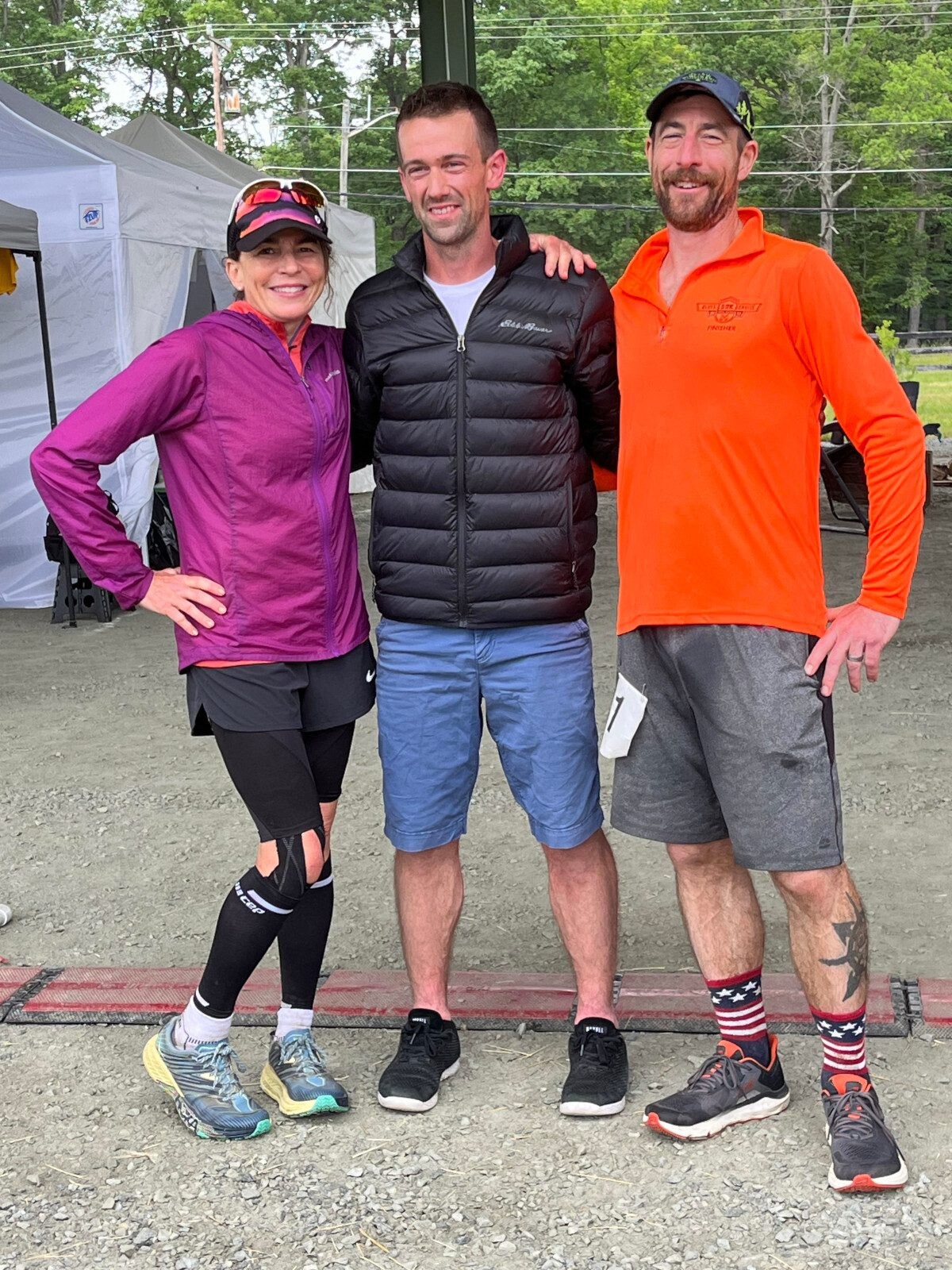
After nearly six hours of competition between Russo and New Jersey’s Scott Snell, Snell emerged as the victor, running 75 yards. Levi Yoder of Dundee, Ohio, finished in third with 63 yards but couldn't complete his 64th.
Elsewhere in the competition, Canada’s Viktoria Brown of Ontario picked up the second-highest number of yards among the six female racers, with 49, finishing the race in the top six. She fell seven laps short of Amanda Nelson’s women’s Canadian backyard ultra record set in Rettert, Germany at the Race of Champions-Backyard Masters.
In addition to (clearly) logging loads of miles, Russo herself is also a race organizer and co-founder of Empower Ultras, which puts on multiple ultra and endurance races throughout the country.
(06/03/2023) ⚡AMPby Runner’s World
Man Discovers Prehistoric Mastodon Tooth While Out on a Run in California
The Santa Cruz resident handed it over to a local museum to study.
On Tuesday, Jim Smith of Santa Cruz discovered a mastodon tooth while running on a California beach. Mastodons (large, prehistoric elephants) roamed North and Central America in the Ice Age. Scientists believe they went extinct over 2,000 years ago.
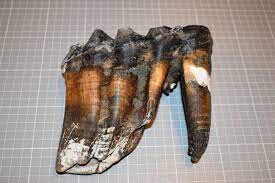
Smith wasn’t the first person to spot this particular mastodon tooth. A tourist found the sizable chomper on Rio Del Mar Beach last week. After photos circulated on social media, Wayne Thompson, a paleontology collections advisor for the Santa Cruz County Museum of Natural History, reached out to the woman. “I practically hit the floor. It was a mastodon tooth, right in the same area where we know mastodons lived in Santa Cruz County,” Thompson told KRON 4.
The next day, the tooth was gone. Santa Cruz County Museum of Natural History workers and volunteers combed the beaches for the gigantic tooth over the holiday weekend but came up with nothing. Then, Smith went for a run.
Smith had heard about the search for the mastodon tooth on the news. So when he found it on the beach, he quickly turned it into the museum. “He was so excited to hear it was a mastodon tooth and was eager to share it with the Museum,” said Liz Broughton, visitor experience manager at the Museum.
The museum will take some time to study the fossil before the public gets to see it. The tooth will be added to a host of mastodon fossils discovered in the area. In the meantime, Smith will probably be looking out for a mastodon rib or pelvic bone. After a few thousand more miles, Smith might be responsible for discovering a whole prehistoric elephant.
(06/03/2023) ⚡AMPby Runner’s World
Mia Brahe-Pedersen just became the third-fastest U.S. high school female athlete of all time
Mia Brahe-Pedersen, the 17-year-old star in the making from Lake Oswego High School in Oregon is the fastest female runner in the state in 100 and 200 meters. Her personal best time of 11 seconds in the 100 meters makes her the third-fastest U.S. high school female of all time—the boys never had a chance. Among her competition in the race? Brahe-Pedersen’s prom date, Ethan, who she said has been a gracious runner-up. She recently posted a video of the triumph to her TikTok page, garnering support and praise from women as well as challenges from many more men.
“I’ll take whatever competition I can get,” she told KGW8. “I don’t care if they’re boys or girls or whatever. I really don’t care. If I can get to my goals while racing you, I will do it, and I’m appreciative that you want to be in a race against me.”John Parks, Brahe-Pedersen's coach, has plenty of experience coaching runners at the highest level. Upon seeing her, he knew Brahe-Pedersen possessed the potential to become an Olympian.
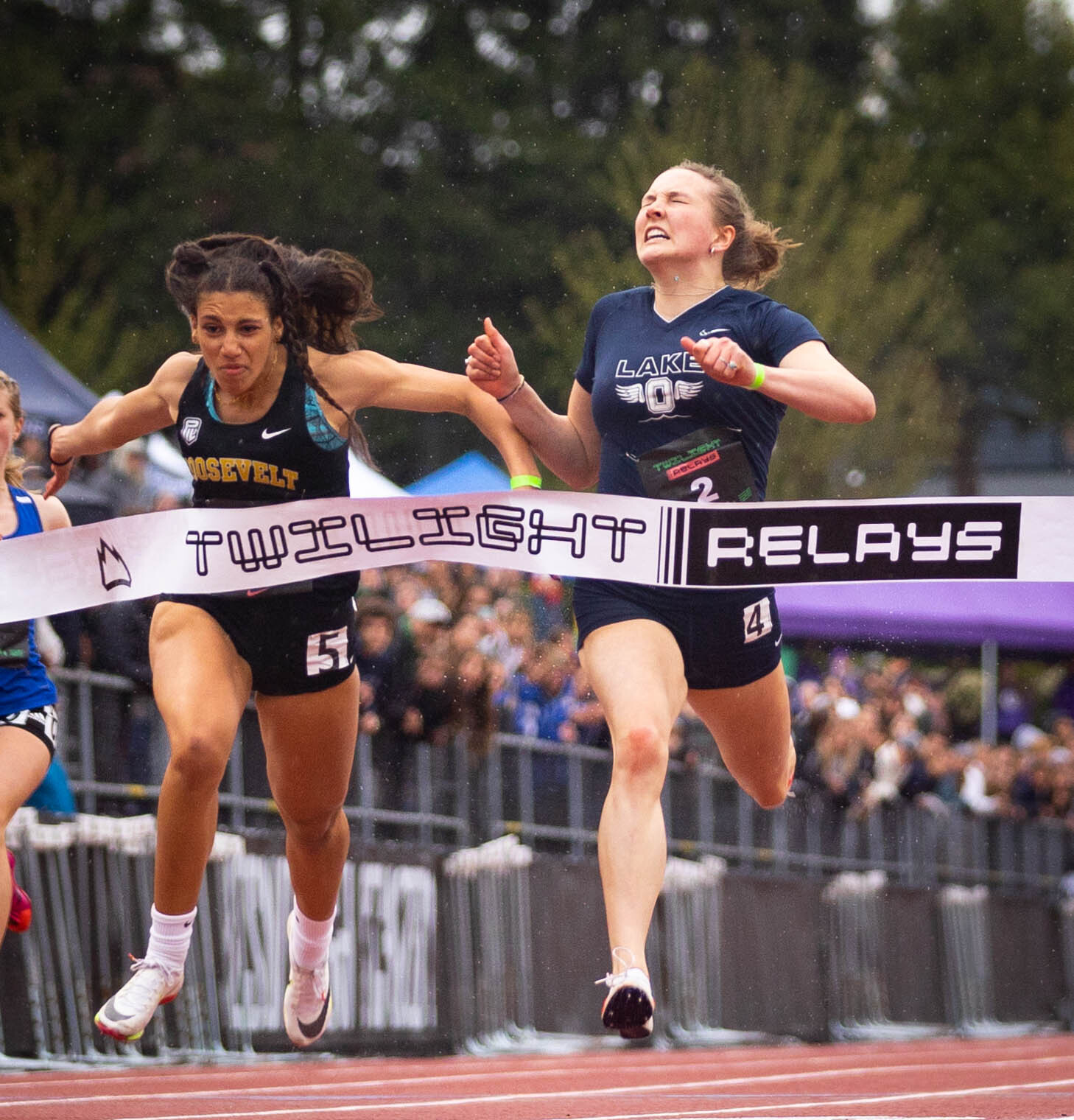
“She’s better than the top American collegiate in the 100,” Parks told KGW8. “Taking down Marion Jones 100 record, Allyson Felix record indoors, Sonya Richards Ross.” Parks knows a thing or two about what it takes to be an Olympic runner; he’s worked with talented runners at every level, including fellow Oregonian Ryan Bailey, who introduced the pair.
"She is eager to learn and wants to work," Bailey said in an interview with RunnerSpace. "I want to see her destroy every record possible. Everything I've learned in my career I can put into her, from avoiding injuries, being in a good mental space, things I wished I would have known."
The next record for Brahe-Pedersen to shatter? A sub-11 time. Parks thinks she has what it takes to get there.
"She's so driven and as tough as a competitor as I've ever seen. She works harder and is more dedicated. She's the coach's dream."Mia Brahe-Pedersen, fresh off of setting a new 100-meter record at the Nike Portland Jesuit Twilight Relays with an 11.07 run, has crushed even more competition by recently winning a 100-meter mixed-gender race.
(06/03/2023) ⚡AMPby Runner’s World
Faith Kipyegon smashes women’s 1500m world record in Florence
Kenyan Faith Kipyegon smashed the women’s 1500m world record, clocking 3 minutes, 49.11 seconds at a Diamond League meet in Florence, Italy, on Friday.
Kipyegon, a two-time Olympic champion and two-time world champion, took 96 hundredths of a second off Ethiopian Genzebe Dibaba‘s world record from 2015. Kipyegon began the day as the second-fastest woman in history at 3:50.37.
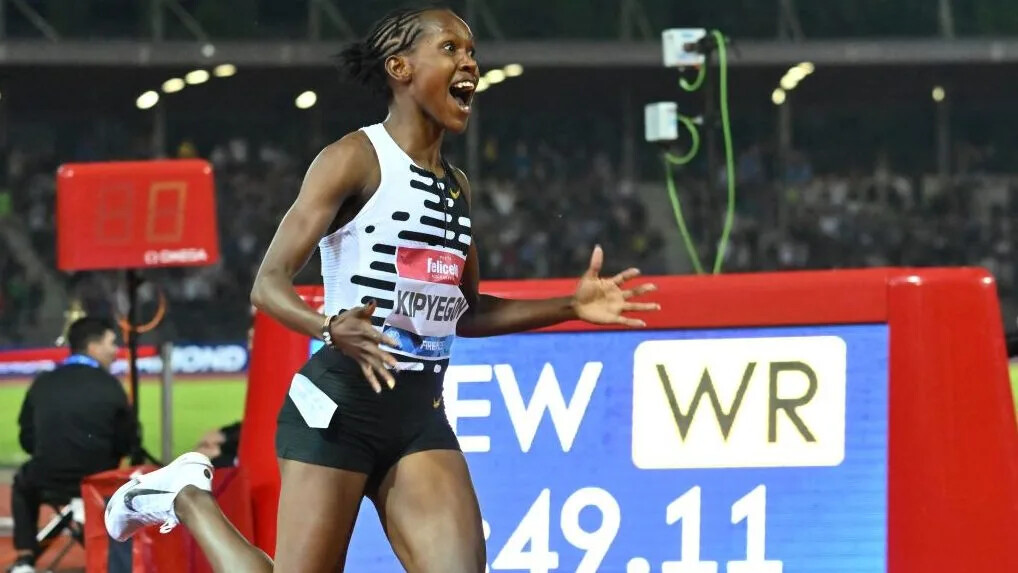
The 29-year-old was already the most decorated female miler in history, the only one with four global 1500m titles. Her Olympic gold medals in 2016 and 2021 were separated by a 22-month maternity leave from competition (that included 12 months without running).
Kipyegon was the eighth of nine children growing on a farm in the Kenyan Rift Valley. She was a soccer player at age 14 when she lined up for a one-kilometer run in PE class, according to World Athletics.
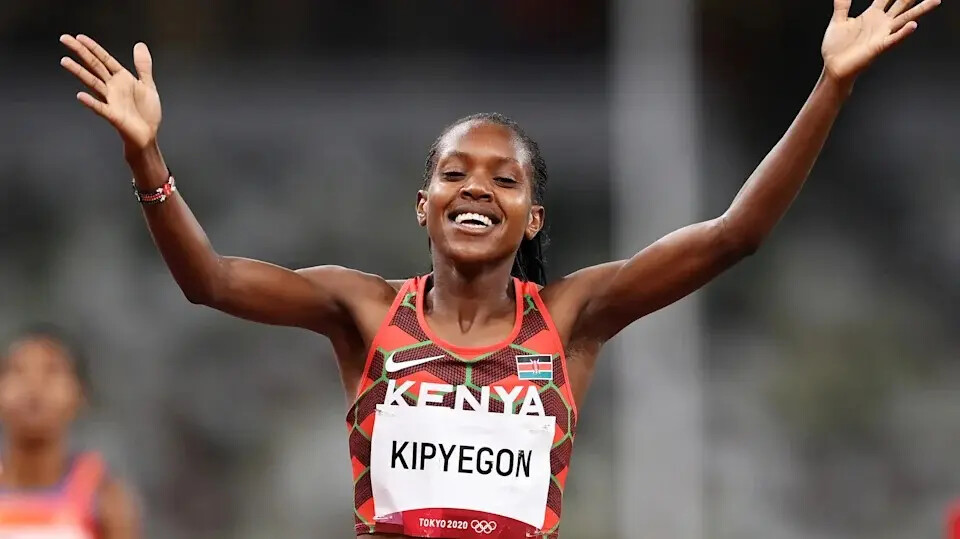
“I won that race by 20 meters,” Kipyegon said, according to World Athletics in 2016. “It is only then I knew I could run fast and be a good athlete.”
In 2010, a barefooted Kipyegon placed fourth in the world cross country championships junior race as, at age 16, the youngest finisher in the top 21. The next year, she won it. The year after that, she made her Olympic debut at age 18. By 2015, Jenny Simpson, arguably the best American miler in history, had a nickname for her: “The Sniper,” for her ability to run people down in the final lap.
She ran her last lap on Friday in under 59 seconds.
Next year, Kipyegon can become the second person to win the same individual Olympic track race three times, joining Usain Bolt. She said last year that she may shift to the 5000m after the 2024 Paris Games, according to Olympics.com.
Also in Florence, world champion Fred Kerley extended a year-plus win streak in the men’s 100m, prevailing in 9.94 seconds over Kenyan Ferdinand Omanyala (10.04) and American Trayvon Bromell (10.09).
(06/02/2023) ⚡AMPby Olympic Talk
Five ridiculous workouts from ultrarunner Aleksandr Sorokin
Lithuania’s Aleksandr Sorokin has five ultrarunning world records to his name, and it is his grueling training sessions and mileage that set him apart from other endurance athletes. Leading up to his recent 100km world record in Vilnius, Lithuania, the 41-year-old averaged 300 kilometers per week, with some ridiculous training sessions. Here’s a glance at a few of them.
1.- 40 reps of 1,000m with 1-2 minutes’ rest
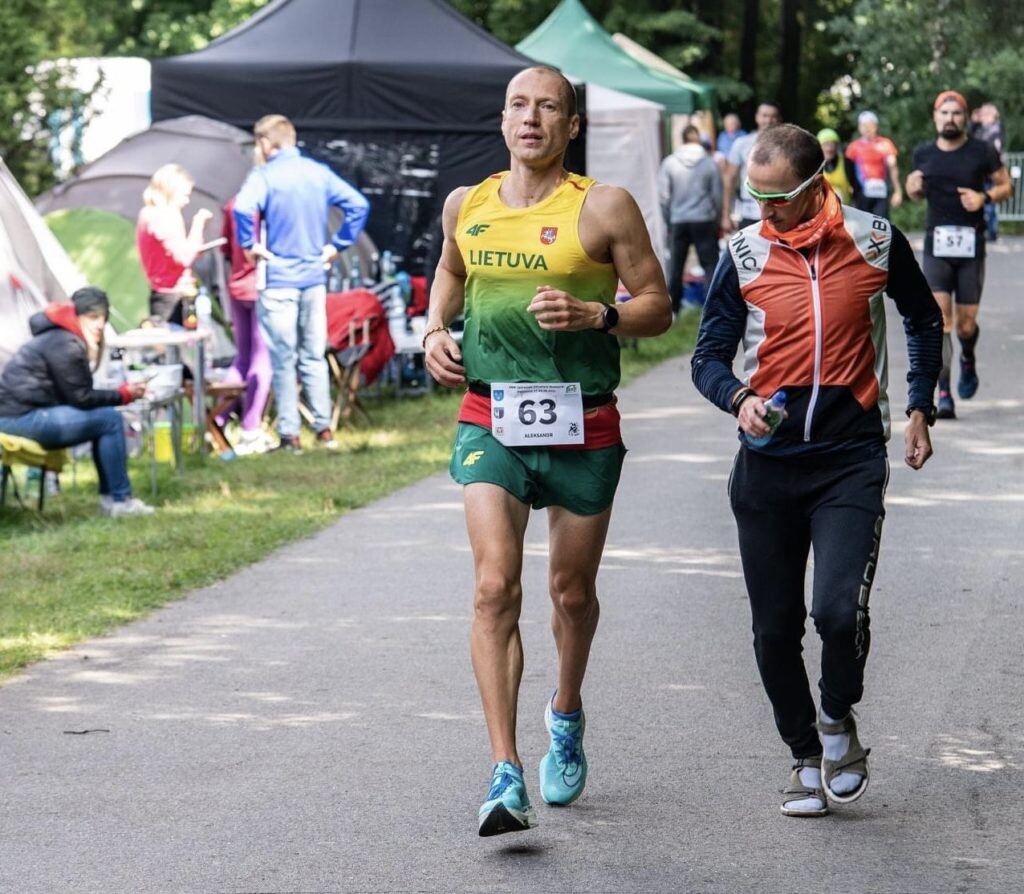
Kilometer repeats can feel long for most runners; now imagine doing 40 of them. This workout from Sorokin is mind-boggling. He averaged three minutes and 28 seconds per kilometer over the 40 reps. According to his Instagram post about the workout, he told his long-time coach Sebastian Białobrzeski that he wanted to cry after finishing rep #20. (Sania, we don’t blame you.)
2.- Three reps of 10K progressions off 1K
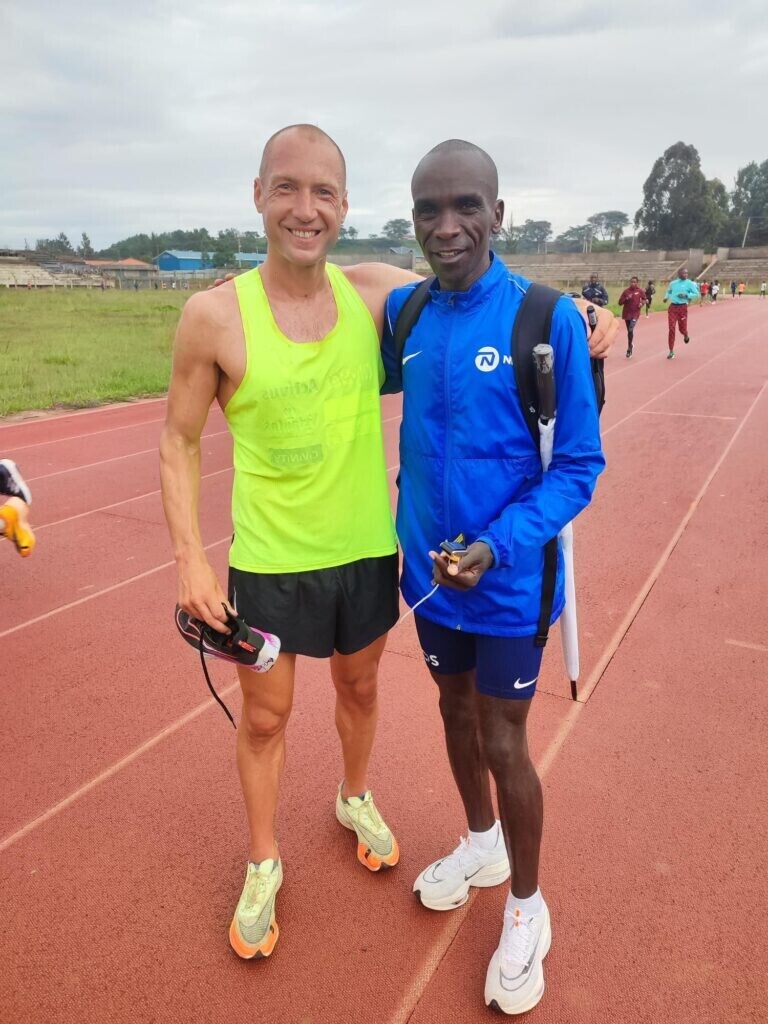
Adding progression runs to your training is a great way to improve your endurance and help your body adapt to running longer distances and sustaining higher intensities. It also plays a role in building mental stamina. In Sorokin’s case, this 30K progression workout is to help him get familiar with world record paces when fatigued. This can be a good session for someone training for a marathon, but the workout would be way too much mileage for any distance under 30K.
3.- Five reps of 5K with three minutes’ rest
In the lead-up to the 2023 Seville Marathon in Spain, Sorokin threw down this wild 5K session, averaging 3:15-3:20 per kilometer off three minutes’ rest between reps. The 41-year-old ended up placing 118th overall in a time of 2:25:33.
If you switch the workout to three or four reps with the same amount of rest, it can be a good workout for those training for a half-marathon or marathon, as it simulates your race effort.
4.- 10 reps of 2K, off 1K float
This might be the least ridiculous Sorkoin workout of the five, but it’s still 30 kilometers of volume and done at a fast pace. Similar to the 5K workout above, this can be done at your goal half or marathon pace. The thing about float rest is, you have the ability to mark the workout as hard as you want. The faster you float (faster than a jog), the harder the workout will be, and vice-versa.
5.- 42-kilometer steady run
A week after breaking his 100K record by six seconds in 6:05:35, the Lithuanian star celebrated his achievement on his Strava in typical ultrarunning fashion, heading out for a casual 42.2-kilometer steady run in two hours and 50 minutes.
Sorokin hasn’t always been a runner; he did not start until 2013, at 32. In a 2021 interview with Canadian Running, Sorokin told us that he began running to get in shape, when he weighed 100 kg (220 lb.). “At the time I wasn’t playing any sports, just drinking and smoking a lot,” he said. After a few months of training, he entered a half-marathon, and a few weeks after that, he saw an advertisement for a 100 km race in Lithuania and began his ultrarunning career. (And the rest is history.)
(06/02/2023) ⚡AMPby Marley Dickinson
Usain Bolt wants to return to track and field
The fastest man in history, Usain Bolt, who dominated men’s sprinting for nearly a decade, has expressed interest in reviving the sport that brought him worldwide fame.
In an interview with Reuters, the 36-year-old Jamaican sprinter revealed he has aspirations to make a significant impact in track and field, highlighting a need for charismatic personalities to inspire and bring back the sport’s glory. He disclosed he has reached out to World Athletics on multiple occasions, expressing his willingness to make a larger impact in the sport if given the opportunity. Bolt said the discussions are ongoing, but he eagerly awaits a position where he can actively contribute to the growth and development of the sport.
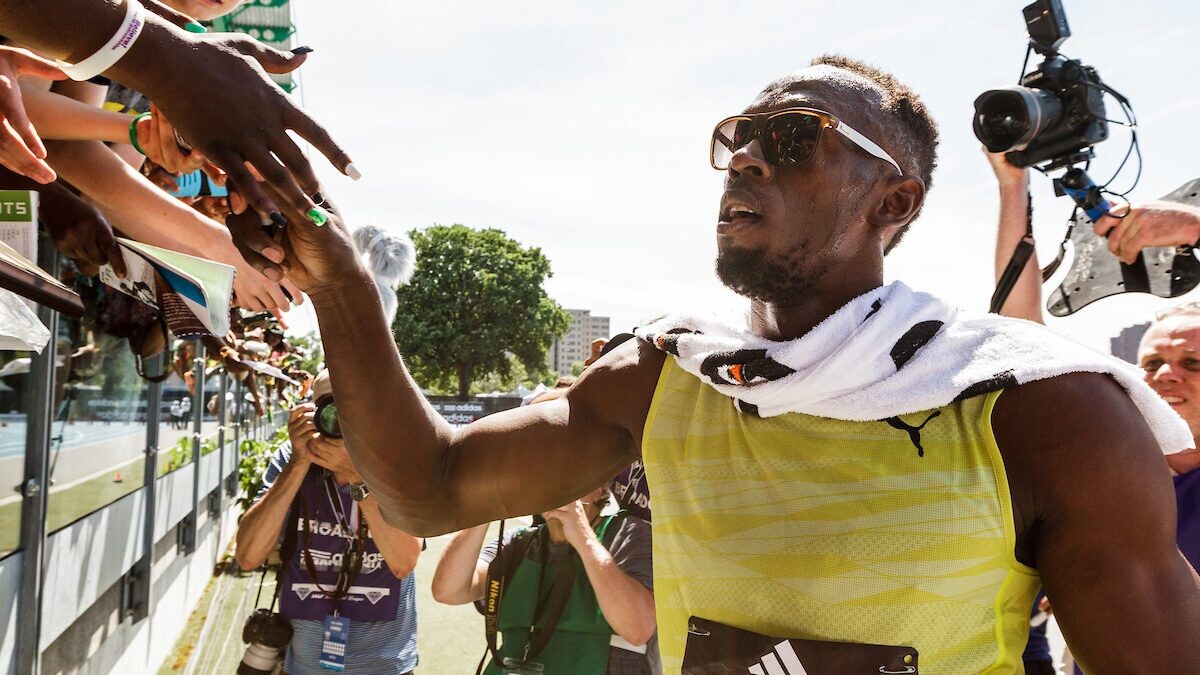
Bolt acknowledged that the sport experienced a slight decline after his departure. However, he sees promising signs in young athletes like U.S. sprinter and 200m world champion Noah Lyles. “Lyles has the charisma and big personality required to engage and captivate audiences,” said Bolt to Reuters. He believes emerging personalities (like Lyles) will help fill the charisma gap, leading to a resurgence of interest in track and field.
The eight-time Olympic gold medallist also reflected on the lack of popularity of the sport in the U.S. and on the disappointing crowd turnouts at the 2022 World Championships in Eugene, Ore. “Sometimes it’s all about where it is, America is not the biggest track and field place,” he said. But he anticipates that the upcoming 2024 Paris Olympics will be a significant moment for the sport, citing its accessibility, historical presence and talented athletes as contributing factors.
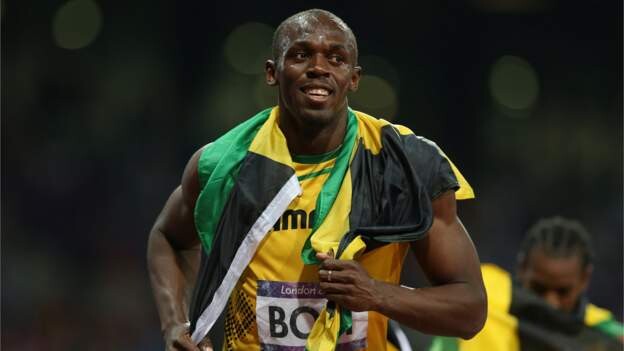
While Jamaica’s men’s team has struggled to replicate its success since Bolt’s departure, the 100m world record holder also sees a resurgence in the nation’s sprinting program in young sprinters Oblique Seville, who finished fourth in the 100m at the 2022 World Championships last year, and Ackeem Blake, who ran a personal best of 9.89 seconds at the L.A. Grand Prix last weekend.
“Hopefully, these two will motivate other youngsters to step up and want to train harder and dedicate themselves,” Bolt said.
(06/02/2023) ⚡AMPby Marley Dickinson
Margaret Gati said the end game for her is to make Team Kenya to the World Championships in Budapest
Junior sensational race walker Margaret Gati will be the star attraction at Friday’s Athletics Kenya (AK) Nandi County track and field meeting at the Eliud Kipchoge Sports Complex in Kapsabet.
Gati said she will use the event to gauge her readiness after suffering a knee injury during the Kenya Secondary Schools Sports Association (KSSSA) games last April in Eldoret.
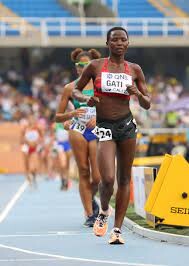
Ambitious Gati said the end game for her is to make Team Kenya to the World Championships in Budapest Hungary in August.
The Form3 student at Cheptononi Secondary School in Nandi County will be competing in the senior category, in search of a ticket to the Central Rift and National Championships.
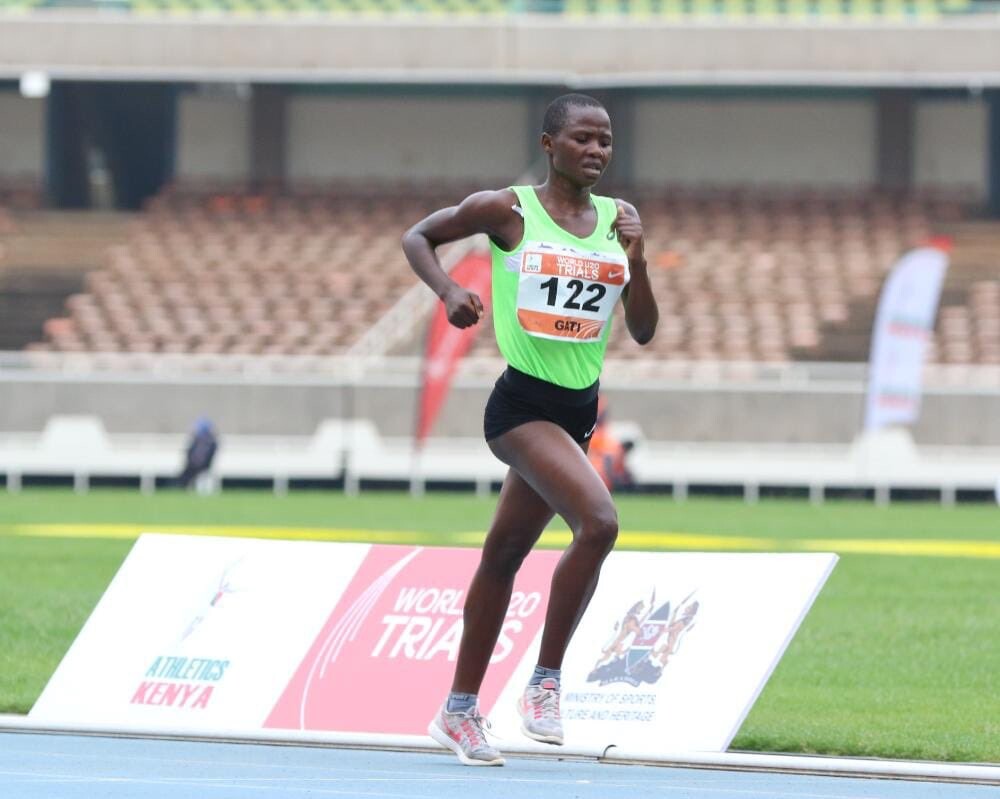
“I left school on Monday to treat my leg ahead of the championships. I managed to get a good massage and medication and I feel much better. Initially, I could not fold my leg but now I am fine, and come Friday, I will be good to go,” said Gati, who trains under coach Robert Ngisirei.
The youthful athlete, who convincingly won the KSSSA 5,000m race walk, said she has been out of the competition because race walking is not popular in Kenya.
She, however, hopes to represent the country at the East Africa Schools Championships set for August in Bujumbura, Burundi.
After representing the country at both the 2021 and 2022 World U-20 Championships in Nairobi and Cali, Colombia, respectively, Gati said she has been trying to switch to track. She, however, said she will focus on race walking for now.
(06/02/2023) ⚡AMPby Emmanuel Sabuni
World Athletics Championships Budapest 23
From August 19-27, 2023, Budapest will host the world's third largest sporting event, the World Athletics Championships. It is the largest sporting event in the history of Hungary, attended by athletes from more than 200 countries, whose news will reach more than one billion people. Athletics is the foundation of all sports. It represents strength, speed, dexterity and endurance, the...
more...Teferi and Scaroni Headline One of the Fastest Fields in History at the 54th running of the Peachtree 10k
The two defending women’s champions of the Atlanta Journal-Constitution Peachtree Road Race will return to Atlanta to defend their titles next month. Atlanta Track Club, organizers of the annual 10K, announced the Susannah Scaroni (Ubrana, IL) will headline the Shepherd Center Wheelchair division while Senbere Teferi of Ethiopia tops the list of contenders in the women’s open division at the 54th Running of the race on July 4.
Teferi – who out leaned Irene Cheptai at the line last year to claim victory before crumpling to the ground in exhaustion – will have to fend off an all-star field including two of the fastest 10K runners of all time − if she wants to retain her title. Six-time world-record holder Joyciline Jepkosgei of Kenya has a personal best of 29:43, third on the all-time list. The winner of the New York City and London marathons, is making her Atlanta debut this summer, in her first 10K road race since 2019. Fellow Kenyan Sheila Chepkirui, who will also be making her Peachtree debut, is the fourth-fastest 10K runner of all time and coming off a fourth place finish at the London Marathon in April.
“I am excited to defend my title in the 2023 Atlanta Journal-Constitution Peachtree Road Race,” said Teferi, the 5K world-record holder for a women-only race. “I look forward to the challenge from the best athletes in the world and am praying for cooler weather than last year; as the heat and humidity was very difficult in 2022″
Another top contender will be 2022 TCS New York City Marathon winner Sharon Lokedi of Kenya. Lokedi will return to racing this summer in a string of 10Ks that include the Peachtree. She was the upset winner in New York last fall, winning her marathon debut by seven seconds.
The Atlanta Journal-Constitution Peachtree Road Race course record in the women’s open division is 30:22, set by Brigid Kosgei in 2019. In the Shepherd Center Wheelchair division, that record is held by Scaroni who won the race in 21:14 to claim a $53,000 bonus. Scaroni said she looks forward to seeing how fast she can race the course in 2023.
“I am really looking forward to competing at Peachtree this year,” said Scaroni, the 2023 Boston Marathon winner. “I am always pushed to have a fun and fast race and plan to give this year’s everything I have.”

Registration for the 54th Running of the Atlanta Journal-Constitution Peachtree Road Race is open through June 4.
(06/01/2023) ⚡AMPby Running USA
AJC Peachtree Road Race
The AJC Peachtree Road Race, organized by the Atlanta Track Club, is the largest 10K in the world. In its 48th running, the AJC Peachtree Road Race has become a Fourth of July tradition for thousands of people throughout the metro Atlanta area and beyond. Come kick off your Fourth of July festivities with us! If you did not get...
more...Eliud Kipchoge thinks Kelvin Kiptum will be next to break the marathon world record
Eliud Kipchoge has tipped Kelvin Kiptum to break the marathon records he has set and possibly become the first man to run under two hours.
Kiptum took the world by surprise in April by shattering Kipchoge's course record at the London marathon. It was only his second-ever race, yet he managed to set the second-fastest time in history.
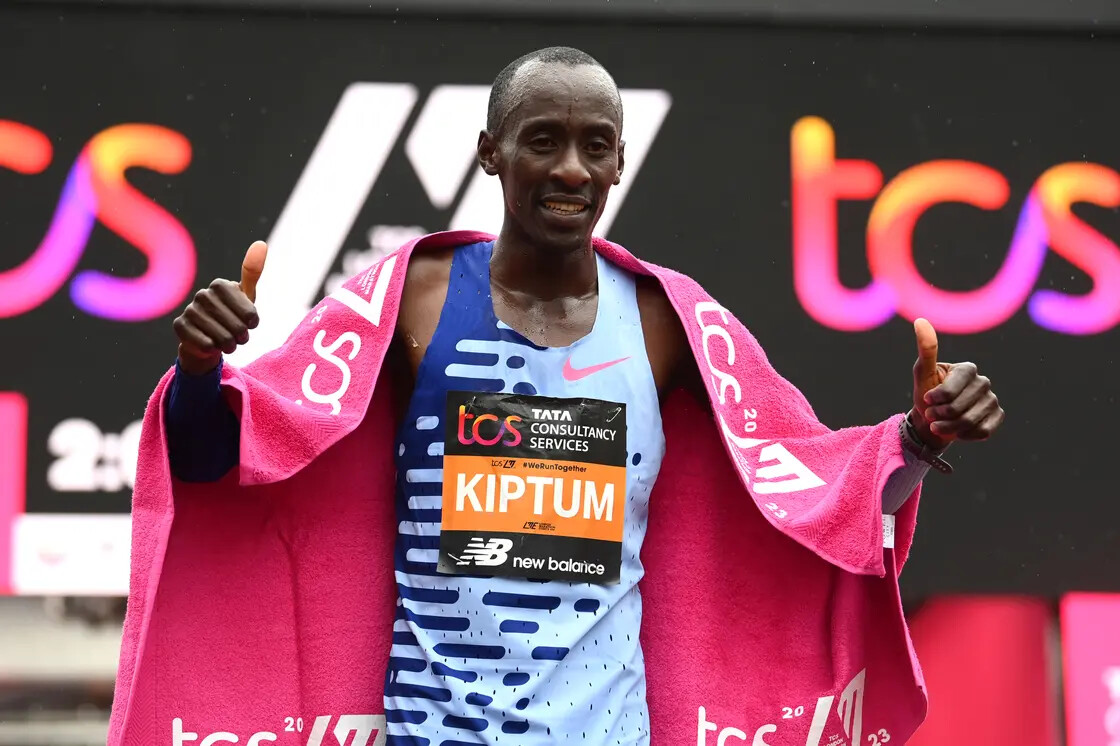
Kipchoge remains the most decorated marathoner in history and holds the current world record of 2 hours, 1 minute and 9 seconds. Kiptum was just 18 seconds away from eclipsing Kipchoge's record in London.
In light of recent events, Kipchoge has now backed Kiptum to even go a step further and run a marathon in under two hours. Kipchoge is the only man to have run a sub-two marathon race, but it was under special conditions and thus not recognized as a world record but remains a huge fete nonetheless.

Why Kipchoge's world record is under threat
Previously, Sports Brief reported that if the 2023 London Marathon is anything to go by, then Kipchoge's world record of 2:01:09 might be under threat sooner than we expected.
Kelvin Kiptum blitzed through an experienced field on April 23 to win the London Marathon at 2:01:26, which is just 18 seconds more than Kipchoge's world record.
Kiptum's major introduction to the marathon world sets up an interesting prospect, especially with the Berlin Marathon this year up for grabs. The Berlin Marathon has proven to be a positive hunting ground for world records, with 12 world records (men and women) having been set in the German capital, including Kipchoge's.
(06/01/2023) ⚡AMPby Martin Moses
TCS London Marathon
The London Marathon was first run on March 29, 1981 and has been held in the spring of every year since 2010. It is sponsored by Virgin Money and was founded by the former Olympic champion and journalist Chris Brasher and Welsh athlete John Disley. It is organized by Hugh Brasher (son of Chris) as Race Director and Nick Bitel...
more...Six tips on finding the right running coach
This time of year is the most popular for running, and challenging yourself to sign up for summer and fall races is a fantastic way to achieve personal goals. If you’re new to the sport or looking to take your running to the next level, working with a running coach can be a game-changer. Finding the right coach can be tough, but it can provide guidance, structure and expertise to help you reach your full potential. But how do you find the right running coach for your specific needs? Here are some essential tips and ideas to help you in your search.
1.- Align your goals
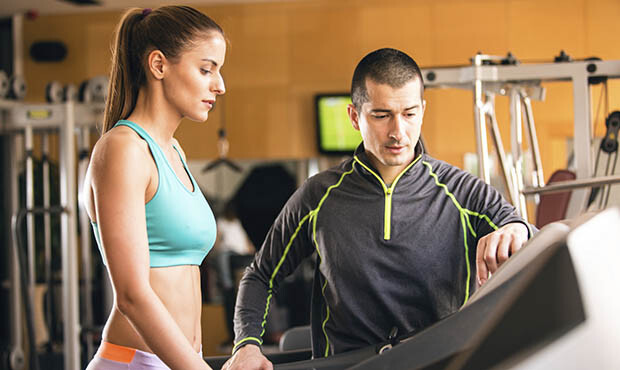
Before you begin your search for a running coach, take some time to write down your running goals. Are you aiming to complete a marathon, improve your speed in a 5K, or simply learn to run? Understanding your goals can help you find a coach best suited for your objectives, since different coaches specialize in various areas of running, such as the marathon, track and field, or recreational running. If you know what you’re looking to accomplish, it can help you narrow down your options and find a coach who can best assist you in reaching your goals.
2.- Do your research
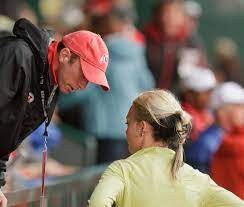
When finding a running coach, it’s crucial to research their experience and ask for referrals from other runners. You should also consider their track record of coaching success, including testimonials from some of their athletes or former clients, to gauge their satisfaction and the effectiveness of their training approaches. The last thing you want is to have someone who doesn’t know what they are doing or crosses personal boundaries. The internet can be an incredible resource when trying to find the right coach-a quick Google search of their name to see accomplishments or reviews can go a long way.
3.- The two C’s
The two Cs might be the most crucial tip of the four. Compatibility and good communication are essential factors in finding a great coach. You want to make sure you find a running coach who understands you as a person and your running goals. The purpose of a running coach is not only to enhance your performance, but also to provide you with motivation, accountability, and valuable insights to help you become a better runner.
It is good to arrange an initial meeting or consultation with a few coaches to discuss your goals, training preferences, and expectations. This meeting will help determine if their personality and coaching styles align. An open line of communication, where you feel comfortable asking questions and providing feedback, is crucial for a coach to understand your needs and tailor their guidance accordingly.
4.- Consider your schedule
Unless you’re a professional runner, odds are you will be training while managing school or a full-time job, so finding time to squeeze in training sessions isn’t always easy. Before hiring a coach, make sure their approach and plan work with your schedule. A good coach should be able to adapt to each individual’s circumstances, considering factors like work, sleep, family commitments, and personal limitations.
Many coaches will offer an initial trial or assessment session to evaluate your running form and fitness level, determining where you’re at in your training. This trial period will allow you to experience the coach’s training approach and assess if their style suits your needs.
5.- Find your budget
It’s important to find a coach who fits your budget. Be sure to ask yourself how much you are willing to spend on a coach. Running coaches may have varying rates, but they usually charge annually, monthly, or per training plan. When inquiring, always ask about their pricing structure and what is included in their coaching services. Some coaches offer different tiers or options, such as one-on-one coaching, online training plans, or group sessions, each with different price points. Consider the level of support and guidance you require and find a coach whose fees align.
6. - Train the Kenyan Way
Kenyan runners have proven that hard work pays off as many races around the world are won by Kenyan runners. What is their secret? Kenyan runners don't only put in lots of miles. It is a whole program guided by a coach. In Kenya there are many running camps helping Kenya runners as well as other runners from around the world. One of the best camps offering an all-inclusive pacakage is the Kenyan Athletics Training Academy (KATA) in Thika just one hour from Nairobi.
Everything is included in their program and the cost is just $375 per week with a four week minimum. A guest runner from England booked a 12 week stay starting July 1. Max ran a 3:45 marathon in Paris and want to get under three hours by October at the Lisbon Marathon. An aggressive goal but one KATA Coach Joseph Ngure and team feel is possible.
KATA has made it easy for runners all over the world to now Train the Kenyan Way in Kenya.
(06/01/2023) ⚡AMPby Marley Dickinson
2023 Baltimore 10-Miler returns to celebrate 15th year
The Baltimore 10-Miler has been on local runners' calendars for 15 years. And for its 15th anniversary, Corrigan Sports is going all out.
The race returns to its location at Druid Hill Park this Saturday, right outside the Maryland Zoo. The course extends throughout the park into parts of the city.
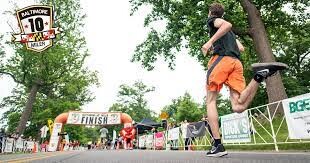
After years of COVID-19 restrictions, organizers said having this event is an important step forward.
"Obviously, we had all stubbed our toe during covid and slowly but surely we're coming back, so we are very excited," said Lee Corrigan, president of Corrigan Sports, the race's organizer.

All runners will get a medal with all the zoo animals that have been featured at the race in its entire 15 years.
If you want to run, there is still time to sign up on the race's website.
(06/01/2023) ⚡AMPby Josh Starkey
Baltimore 10 Miler
Runners will be treated in typical Corrigan Sports fashion. This year's race will feature the same scenic, challenging, yet fun course that starts and finishes at Druid Hill Lake Park near the Maryland Zoo. The course will travel along the North side of town to Lake Montebello and return to Druid Hill for the post race festivities that are second...
more...Hobbs Kessler set the record for the fastest 1500-meter run by an American on U.S. soil as he finished third overall with a time of 3:32.61
Hobbs Kessler has already broken records left and right in his running career and the Ann Arbor native added to that growing list with an eye-popping performance at the Los Angeles Grand Prix on Saturday.
The 20-year-old phenom set the record for the fastest 1500-meter run by an American on U.S. soil as he finished third overall with a time of 3:32.61.
Kessler finished just behind former world champion Timothy Cheruiyot, who won the race at 3:31.47, and U20 world champion Reynold Kipkorir Cheruiyot, who took second in 3:32.01.
He ran a 55.83 in his final lap to past U.S. champion Cooper Teare, who also ran a personal best time of 3:32.74.
Kessler’s finish was the 13th fastest all-time for an American runner and his time is the second best by a U.S. male runner under the age of 21 as Cole Hocker ran 3:31.40 at the 2021 Olympics.
It was a personal best time for Kessler but yet another memorable performance by the former Ann Arbor Skyline standout.
He holds the North American U20 record in the 1500 at 3:34.36 as well as the U.S. high school record in the for the indoor mile with a time of 3:57.66 and was named the Gatorade National Track and Field Athlete of the Year for 2021.
Kessler signed a contract with Adidas and turned professional in 2021. He also won the Boston Athletic Association Invitational Mile in April.
(05/31/2023) ⚡AMPU.S. ultrarunner breaks Courtney Dauwalter’s backyard ultra world record
American ultrarunner Jennifer Russo has set a new women’s backyard ultra world record by completing 496.21 km at the Capital Backyard Ultra in Lorton, Va. The 57-year-old mother of three from New Richmond, Ohio, finished the multi-day race Tuesday after running 74 yards—or 74 laps of the 6.706-km course—in a contest that began Saturday.
The backyard ultra race format requires participants to start one “yard” (loop) every hour on the hour, until only one runner remains. (Backyard racing is designed so that theoretically, runners can complete the 100-mile distance in 24 hours.)
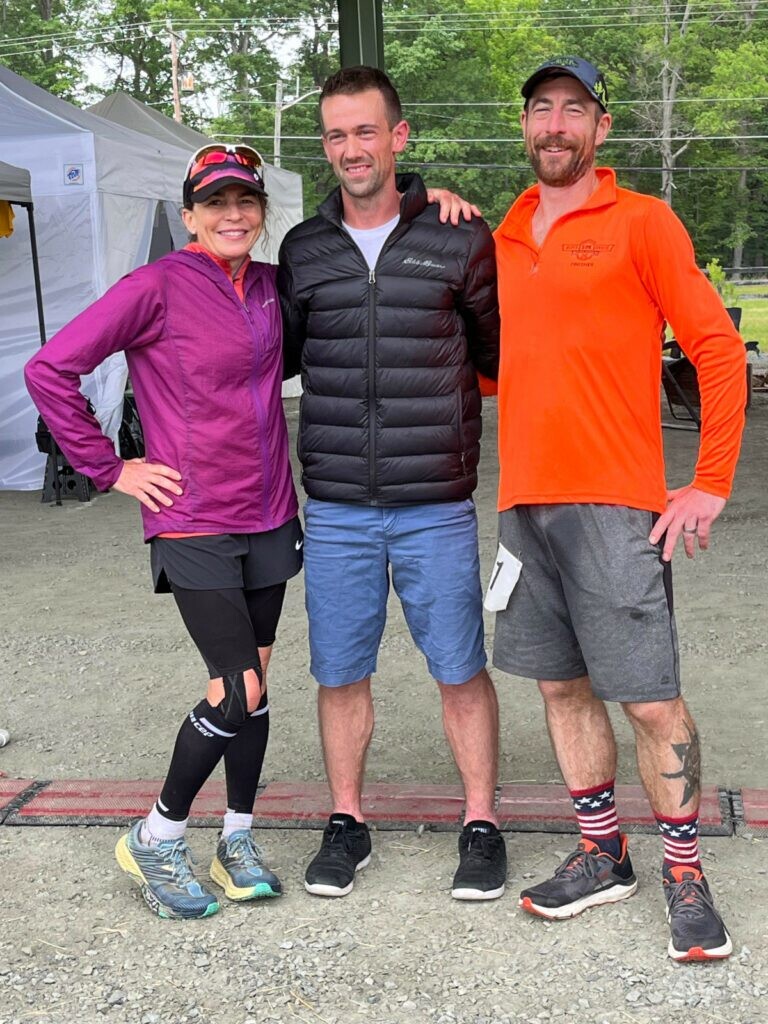
Russo’s latest effort tops the previous women’s world record of 68 yards set by American Courtney Dauwalter at Big’s Backyard Ultra in Bell Buckle, Tenn., in 2020. With this week’s race in Lorton, a suburb of Washington, D.C., Russo also becomes the first American female to reach 300 miles (482.8 kilomtres) within 72 hours in any race format. Her 74 yards also puts her in a four-way tie for 16th for the longest distance ever covered in the backyard ultra format.
These achievements came at the end of a gruelling standoff between Russo and Scott Snell of New Jersey. The pair battled alone on the course for almost half a day after Levi Yoder of Dundee, Ohio, who finished with the third-highest total of yards, couldn’t complete his 64th lap. Snell ultimately outlasted Russo in the showdown, winning the event by running 75 yards, or just under 503 km.
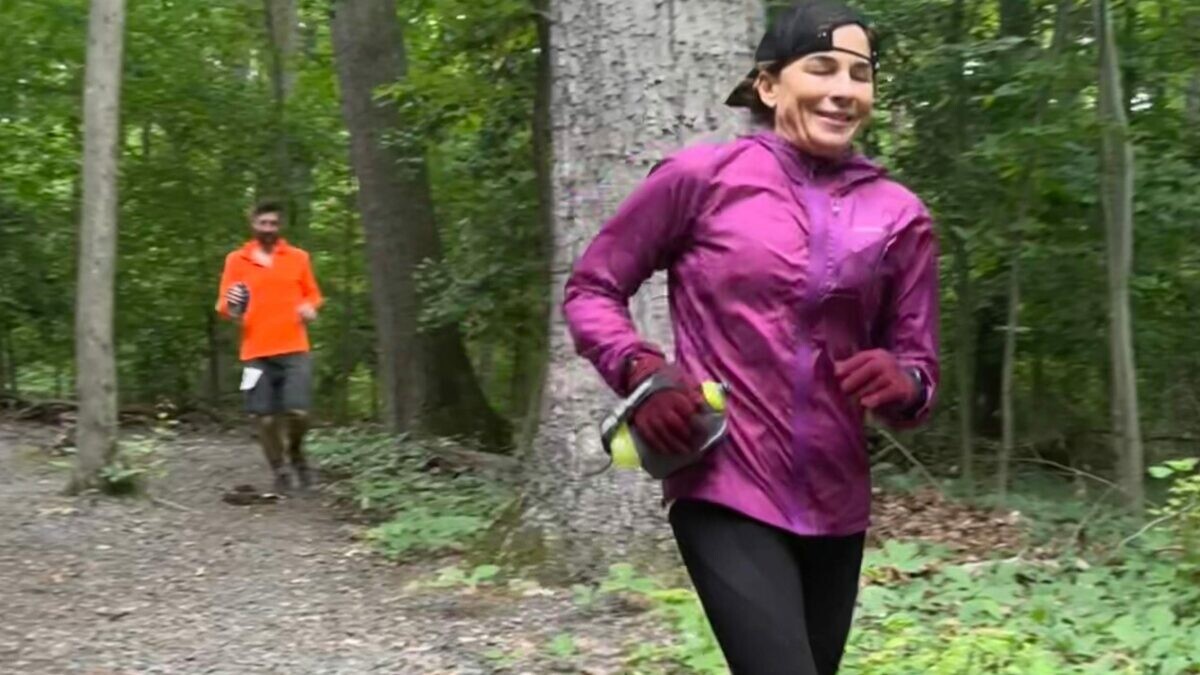
The race also saw an outstanding effort by Canada’s Viktoria Brown. The runner from Whitby, Ont., racked up the second-highest number of yards among the race’s six female competitors, completing 49 yards and finishing the race in the top six. Brown, who in March broke her own 48-hour Canadian and 72-hour world records at the GOMU (Global Organization of Multi-Day Ultramarathoners) six-day world championships in Policoro, Italy, came just seven laps short of the women’s Canadian backyard ultra record set by Amanda Nelson of Woodstock, Ont., earlier this month at the Race of Champions-Backyard Masters in Rettert, Germany.
Fellow Canadian Justin Wright also cracked the top 10 at the Capital Backyard Ultra. The runner from Leamington, Ont., completed 36 yards—241.4km—to finish 10th overall in the field of 31 competitors.
(05/31/2023) ⚡AMPby Paul Baswick
Olympian Deena Kastor named guest speaker for 2024 Bermuda Triangle Challenge
Olympic medal-winner Deena Kastor will be the honorary guest speaker at the 2024 Chubb Bermuda Triangle Challenge.
Kastor won a bronze medal in the marathon at the 2004 Olympics in Athens and also won the 2005 Chicago Marathon and the 2006 London Marathon, in which she set an American record of 2hr 19min 36sec that stood unbroken until last year. She was also a four-times Southeastern Conference champion and an eight-times All-American.
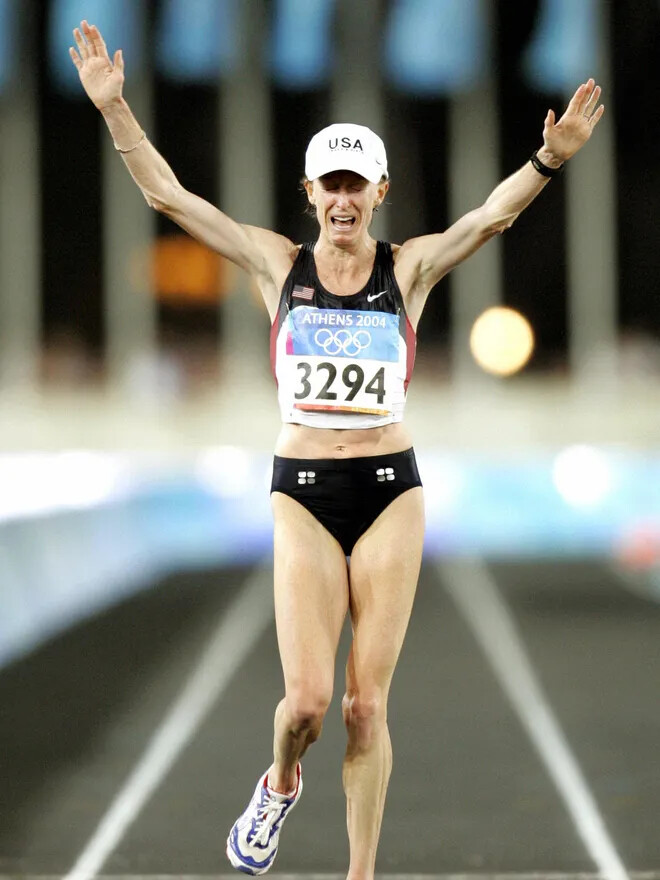
Also a previous US record-holder in the women’s half-marathon, 10,000 meters and 5,000 meters, Kastor still competes at a high level and is holds the US women’s masters marathon record of 2:27:47, which she achieved at the 2015 Chicago Marathon.
She also picked up the 2003 Jesse Owens Award as the top female track and field athlete in the US, the USATF Runner of the Year prize in 2001, 2003, 2004 and 2008, as well as the CC Jackson award in 2002, 2003 and 2004.
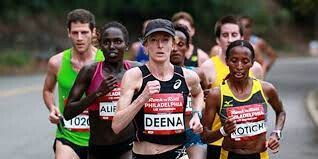
Kastor, 50, has also authored a New York Times bestselling book, Let Your Mind Run, in which she documents her journey to becoming a world-class Olympic runner, and is thrilled to be heading to the island.
“I am excited to have been selected as the ambassador and guest speaker for the 2024 Chubb Bermuda Triangle Challenge,” she said.
“I look forward to my first visit to the island, running the roads of Bermuda and meeting the event’s enthusiastic participants, spectators, sponsors and volunteers of Bermuda. I can’t think of a better way or a better place to spend a three-day weekend.”
Hazel Clark, Global Director of Sales and Business Development at the Bermuda Tourism Authority, and herself a three-times US Olympian, is pleased that her former team-mate is heading to Bermuda.
“It is with great pleasure that I welcome my Olympic team-mate Deena Kastor to Bermuda and to the 2024 Chubb Triangle Challenge,” Clark said.
“Allowing all of Bermuda the opportunity to meet and interact with another world-class athlete is what the Bermuda Tourism Authority has been working to develop and leverage through our Sports Tourism strategy, as part of the National Tourism Plan.
“During my track career, Deena was well known in the US track and field world as the foremost long-distance female runner in the early 2000s. Her drive and accomplishments inspired each of us to work harder and strive towards the continuous pursuit of our own personal goals.”
Samantha Froud, Chubb’s chief administration officer, Bermuda Operations, said: “Chubb is excited to welcome an athlete of such amazing talent and accomplishments of Deena Kastor to the 2024 Chubb Bermuda Triangle Challenge. As the title sponsor, we are pleased not only to host an Olympic athlete of this calibre at this international event but enable all the participants to meet and engage with Deena.
Next year’s Chubb Bermuda Triangle Challenge will begin on January 12, with the Butterfield Mile and continues on January 13 with the BF&M 10K Run/Walk. The event concludes on January 14 with the PwC Bermuda Marathon, Bermuda Half-Marathon and Bermuda Half-Marathon Relay.
(05/31/2023) ⚡AMPby Ross Clarke
Bermuda Triangle Challenge
Surrounded by crystal clear waters warmed by the Gulf Stream, Bermuda is the ideal winter time destination for the active minded traveler. With its lush foliage and pastel colored buildings, Bermuda is one of the most beautiful places on earth. A short flight of 2-hours or less from most US East Coast cities and Toronto, Bermuda only feels like it’s...
more...Five tips every first time marathon runner needs to know
So you’ve signed up for your first big marathon event. Now you need to think about training programme. Here is some good advice to make sure that you get your running preparation off to the right start.
1.- Identify Your Goals But Do Not Lock Them In
If you are a distance running beginner you may not understand your ability, your fitness and the impact your marathon training will have on you. That means that you may not have a specific goal to aim at – other than ‘I just want to finish!’

Put any predictions aside at the start and just focus on getting stuck into your training regime gradually. You will be able to reassess your goal as your training develops and you gain more experience and confidence.
If you’re a more experienced runner, possibly someone who’s run half-marathons before, it’s likely you’ll have some idea of what you can achieve. Try and identify what time you would like to complete your marathon in and ask yourself if that goal is attainable.
Look back at your previous best times for longer runs and break down your training into separate parts. Look at what mistakes you made and what worked well. Was your diet good? Did you do enough long training runs? How organised was your training week? Be harsh on your previous attempts and make it a resolution to improve your weak areas.

2.- Be Realistic But Also Commit
This is possibly the most important question - so ask yourself how much time can you realistically commit to your target? Being committed 100 per cent at the start of the project is great, but you have to remember the training itself is a marathon, not a sprint! So that means you need to be committed for the whole training programme and not dip in and out of it like it’s a gym membership you signed up to in the New Year.
Experienced coaches will tell you to run when you can run - because you will always have days when you cannot and wish you had! This includes still running when you 'just don’t feel like it', as you can never predict what might happen during the training. Bad weather is a perfect example. There are some nights when it is to hazardous to go out. Being on top of your training will mean that you have some flexibility when something comes up.
However, let’s not make out this is a complete life changing moment. You are being asked to make at least a 12-week commitment to your training and diet. That leaves another 40 or so other weeks free in your year.
3.- Share The Pain
Try and find someone you can go out and run with early on, someone to share your training campaign. Running on your own in horrible weather can be hell, so why not share this pain with someone else! Particularly if it’s someone who’s already run a marathon and knows what’s involved.
Find a running buddy or even better go out and discover a friendly running club. Running with other people can also be fun and it’s a great way of meeting new people.
4.- Plan Ahead With Your Events
This tip might be a bit too late for some events. But there are so many races and runs that you can take part in before you tackle the big one, including half marathons.
Entering another long-distance race a decent amount of time before your full marathon attempt is great because it will give you a mini-target that will boost your motivation. And completing the event can give you a big psychological boost. Self-belief and having a positive mental attitude are as important as your actual physical training routine.
5.- Watch Your Diet And Hydration
Do some basic research into your diet. This is not only important for performance, but also for your recovery! Try to eat some carbs before your long runs, have a protein filled meal afterwards and keep your breakfasts simple.
Keeping hydrated is also important throughout your training regime. Energy drinks have lots of calories, so drink them in moderation and look for an alternative. At this early moment in your training avoid the use of gels. It may be early days but make sure you start to learn about carbo-loading and fuelling your body correctly for the race.
(05/31/2023) ⚡AMPby Tim Rogers
From Bathurst to Budapest, Chebet is motivated for more
While winning a global gold medal might be the pinnacle of the year – if not career – for many athletes, Beatrice Chebet remains motivated for another title to add to her ever-expanding CV.
The world 5000m silver medallist became the world cross country champion in February, winning the senior women’s race and leading the Kenyan squad to the team title at the World Athletics Cross Country Championships Bathurst 23. Now the 23-year-old has turned her attention back to the track as she plots her path to the World Athletics Championships Budapest 23 in August.
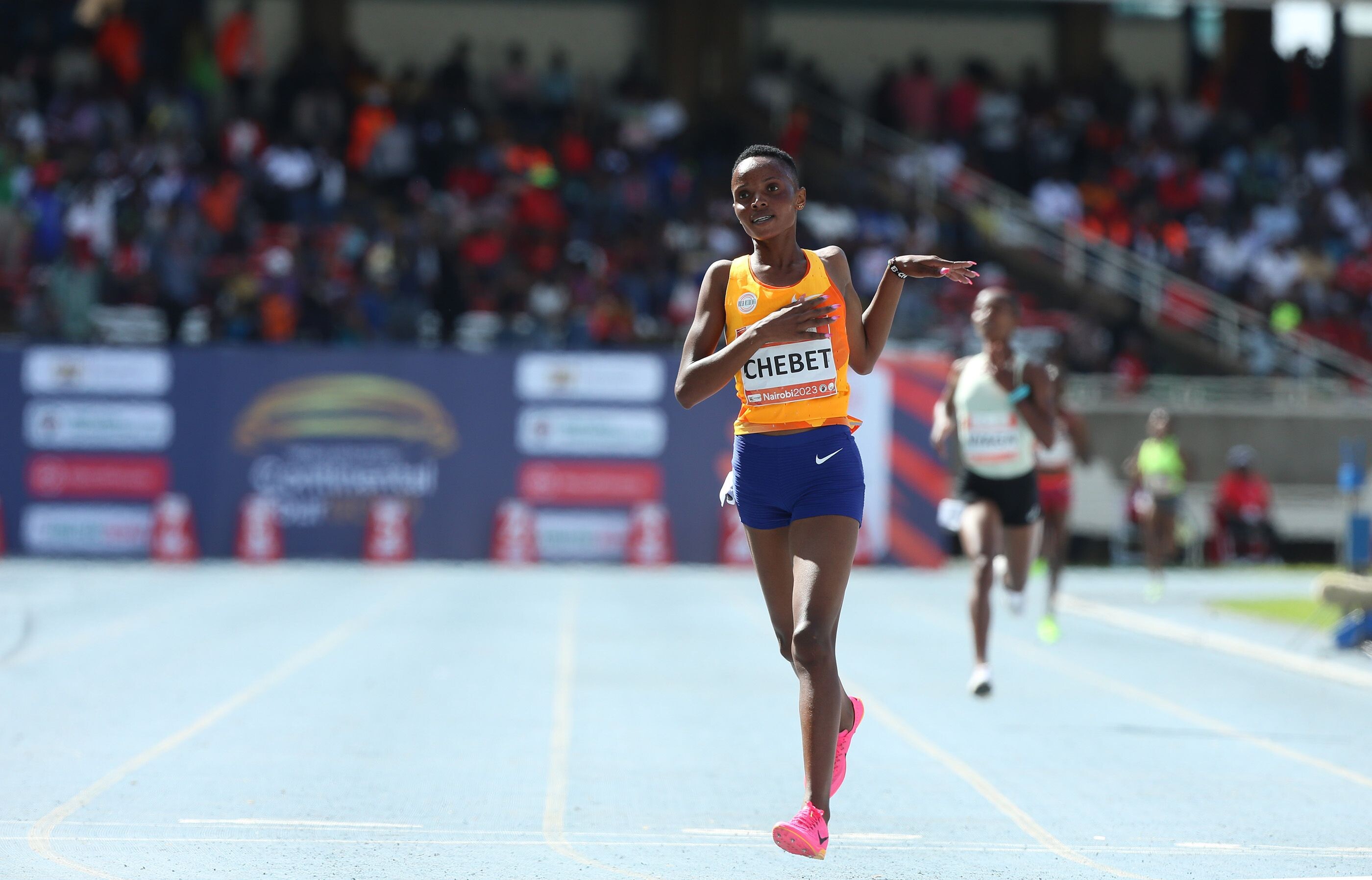
Chebet started her season on a high note, winning the 5000m at the Kip Keino Classic, a World Athletics Continental Tour Gold meeting, in Nairobi, Kenya, on 13 May.
Her victory in front of a home crowd at the Moi International Sports Centre in Kasarani was a good indication that her training is going well, and on the right course, for her next big goal: to win the world 5000m title in Budapest.
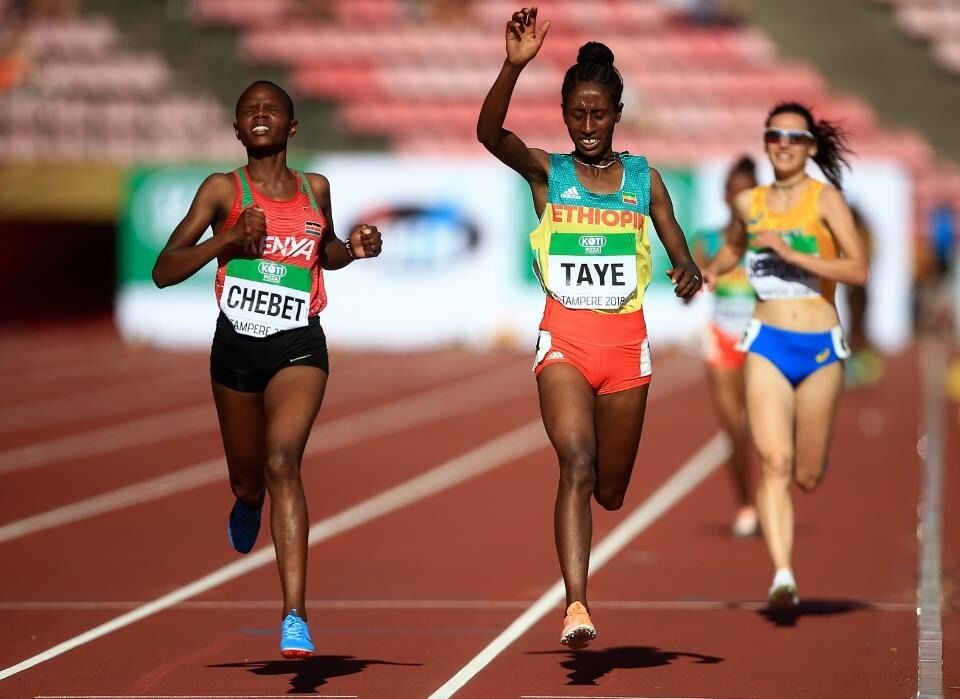
“I will be happy if I place on the podium this year in Budapest, although my main aim – which I know should be the same for all the runners who will be running at the World Championships – is the gold medal,” Chebet says. “However, I will be thankful for any medal I get there.”
On the morning of 23 August, Chebet – who already has a wild card place to run in Budapest after winning the 2022 Wanda Diamond League title, subject to selection by her national federation – will be standing at the start line for the heats of the women’s 5000m at the National Athletics Centre to begin her quest for the world title. But, with all the best runners in the world yearning for gold, she knows it won’t be easy.
From her experiences during past battles on the world stage, Chebet believes that the Ethiopian runners and some of her Kenyan compatriots are likely to be her main rivals. The defending champion, who won the 5000m title in a close race ahead of Chebet in Oregon, for example, is Ethiopia’s Gudaf Tsegay. Another Ethiopian athlete, Letesenbet Gidey, is the world record-holder who had looked on course to beat Chebet to the world cross country title in Bathurst before she fell in the closing stages.
Chebet had similar encounters when winning her world U20 5000m title and world U20 cross country gold in 2019. In the latter, she won in a photo finish ahead of Ethiopia’s Alemitu Tariku and Tsigie Gebreselama as they all clocked 20:50 for the 6km race.
“I talked with Gidey some time after the incident in Bathurst, and she was doing well, health wise, and looking forward to coming back strong,” Chebet says.
Their rivalry is a friendly one. When asked whether she thinks Gidey will be looking forward to revenge in their next competition, Chebet replies: “We didn’t talk about competing against each other. It was to check up on her.”
While the rest of her 2023 racing calendar is yet to be confirmed, Chebet – who has a 5000m PB of 14:34.55 that she ran at the Oslo Diamond League in 2021 – will be hoping to remain a strong presence in the 12-and-a-half lap discipline this year.
“My training is going on well,” she says. “I am working hard and praying to God for good health and that everything else goes well. In my races this year, I will watch and hope to see continuous progress. I know all will go well with good training.”
Chebet currently trains in Kericho, on the undulating and beautiful landscapes of Kenyan tea plantations, under coach Gabriel Kiptanui as part of the Kericho Athletics Club.
Being part of the same training group and working with the same coach that guided her during her great 2022 season seems to be a good forecast of what Chebet’s season could look like this year.
“I hope I have another good year, like last year,” she adds.
So far, her career highlight was when, at the age of 18, she won her first gold medal at the World Athletics U20 Championships in Tampere, Finland. It was a tough battle in the final 400m of the race between Chebet and Ethiopia’s Ejgayehu Taye, who Chebet edged at the finish line by a mere 0.10. Taye’s compatriot, Girmawit Gebrzihair, completed the podium.
“Of all the medals and titles that I have ever won, the one that I cherish the most is the world U20 gold medal that I won at the Ratina Stadium in Tampere in 2018,” Chebet says of the 5000m victory that ended a 10-year winning streak by Ethiopian athletes. “It was my first big victory, so I will not forget it.”
Since then, Chebet has remained a force to be reckoned with in the women’s 5000m event. She won the African U20 title in 2019 and the African senior title last year in Mauritius, before she claimed her silver medal at the World Championships in Oregon and gold at the Commonwealth Games in Birmingham.
Can she emulate her 2022 success this year? It looks good so far, and a world title in Budapest would be the icing on the cake.
(05/31/2023) ⚡AMPby World Athletics
World Athletics Championships Budapest 23
From August 19-27, 2023, Budapest will host the world's third largest sporting event, the World Athletics Championships. It is the largest sporting event in the history of Hungary, attended by athletes from more than 200 countries, whose news will reach more than one billion people. Athletics is the foundation of all sports. It represents strength, speed, dexterity and endurance, the...
more...Top Four Endurance Races for Amateurs in the World
Participating in the top leagues and renowned racing events might require professional training. Experience is also an added advantage as it gives contestants an edge in the competitions. Such requirements can frustrate amateurs from participating in races due to the fear of being outshined by the experts.
Fortunately, there are various races around the world that are suitable for amateurs. These amateur races allow inexperienced sportspersons to rate and build their skills. In this article, we explore the best four endurance races for amateurs.
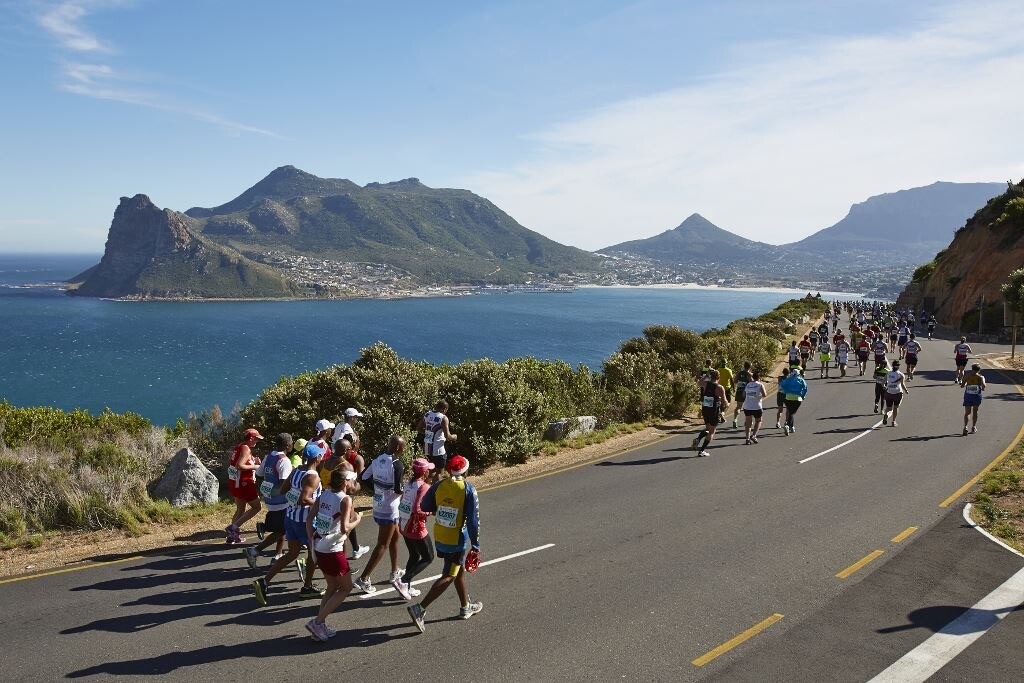
Amazon River International Raft Race
This race is hosted every September in Peru, in a city that is only accessible by water or air. The Amazon River International Raft Race isn’t known widely due to its non-operational Facebook page and poor-quality website. Because of this, it doesn’t appeal to professional paddlers. Despite its downsides, this race offers the perfect gruesome challenges for amateur contestants.
The race comprises teams of four participants that build balsa wood rafts and use them to paddle 180 kilometers down the Amazon River from Nauta Town to Peru City. The Amazon River International Raft Race has been recognized as the longest raft race in the Guinness Book of World Records. Participants are advised to carry mosquito repellants, A535s, and some sunscreen. If you join this race, expect to compete with more than 30 inexperienced contestants.
The Canadian Mini Indy
This race is more enjoyable and also challenging for contestants. The Canadian Mini Indy hosts over 100 amateurs and professionals. The contestants have to be aged between 8 to 65 years to participate. It is an arrive-and-drive rookie race, where contestants are provided with a go-kart that can reach a top speed of 80 km/hr. This 6-hour race poses a gruesome challenge where speed won’t guarantee success. Racers need patience, consistency, and strategy to finish it.
The thrill in this amateur race can also be enhanced by online wagering. Nothing beats the joy of predicting the success of your favorite contestant and getting it right. If you are in Alberta, with the guidance of reliable web sources, you can safely place your alberta bets OR alberta sports betting predictions on a trusted wagering platform. Through these top-rated platforms, you can also bet on all other popular sports.
Wulong Mountain Quest
This race always takes place in the beautiful Wulong County in Southern China. It is a prominent amateur adventure race that provides several obstacles for the participants. This entire race has 3 phases which last for 3 days. It also has around 20 to 25 participating teams, each with around 4 contestants. The first day is fast-paced as contestants will be engaged in much cycling, paddling, and running.
Navigation in this race is easier due to the properly marked roads. The scenery, including the limestone formations and a UNESCO World Heritage Site, also gives racers and spectators a great outdoor experience. The closing and opening ceremonies are unique and exciting, especially for visitors.
Two Oceans Marathon
This 45-year-old race provides a 56 km challenge for contestants in Cape Town, South Africa. Two Oceans Marathon is a globally reputable ultra-running race. It has the most appealing scenery because the competitors will be running on gorgeous roads, including Chapman’s Drive. Besides the massive elevation gain and loss, the heavy winds pose an enormous obstacle for the runners.
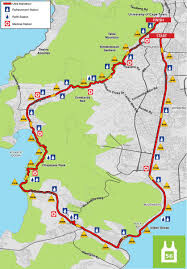
Since the Two Oceans Marathon is known worldwide, it typically attracts over 100,000 contestants. This race provides a perfect ground for amateurs to perfect their skills. (See photos)
Conclusion
You don’t have to get to the professional level before participating in races. There are many renowned races for amateurs. However, some allow both professionals and amateurs to compete in the same quest. Such races offer an opportunity for inexperienced contestants to match up their skills with professionals and learn from them. Participating in such races is a great way to develop your racing skills.
(05/30/2023) ⚡AMPLauren Paquette to make marathon debut at 2023 Grandma’s Marathon
Lauren Paquette, an athlete from HOKA Northern Arizona Elite, and former collegiate star, will be making her marathon debut at the 2023 Grandma’s Marathon, as announced earlier this month on her club’s official website.
Paquette, a Baylor University graduate from 2008, has participated in several Half Marathon races since her debut in the event in 2014, where she recorded a time of 1:15:57. Over the years, she has achieved a personal best of 1:09:46 and secured a fourth-place finish at the USATF Half Marathon Championships in 2021. However, she has yet to compete in a full marathon.
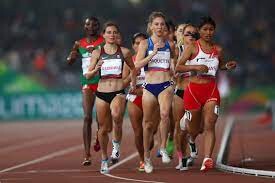
This will change in the upcoming summer schedule as Paquette has decided to make her marathon debut at the 2023 Grandma’s Marathon, scheduled for June 17 in Duluth, Minnesota.
She expressed her choice, stating, “I chose Grandma’s Marathon because it offers a great course and promises to be a fun race for my debut.”
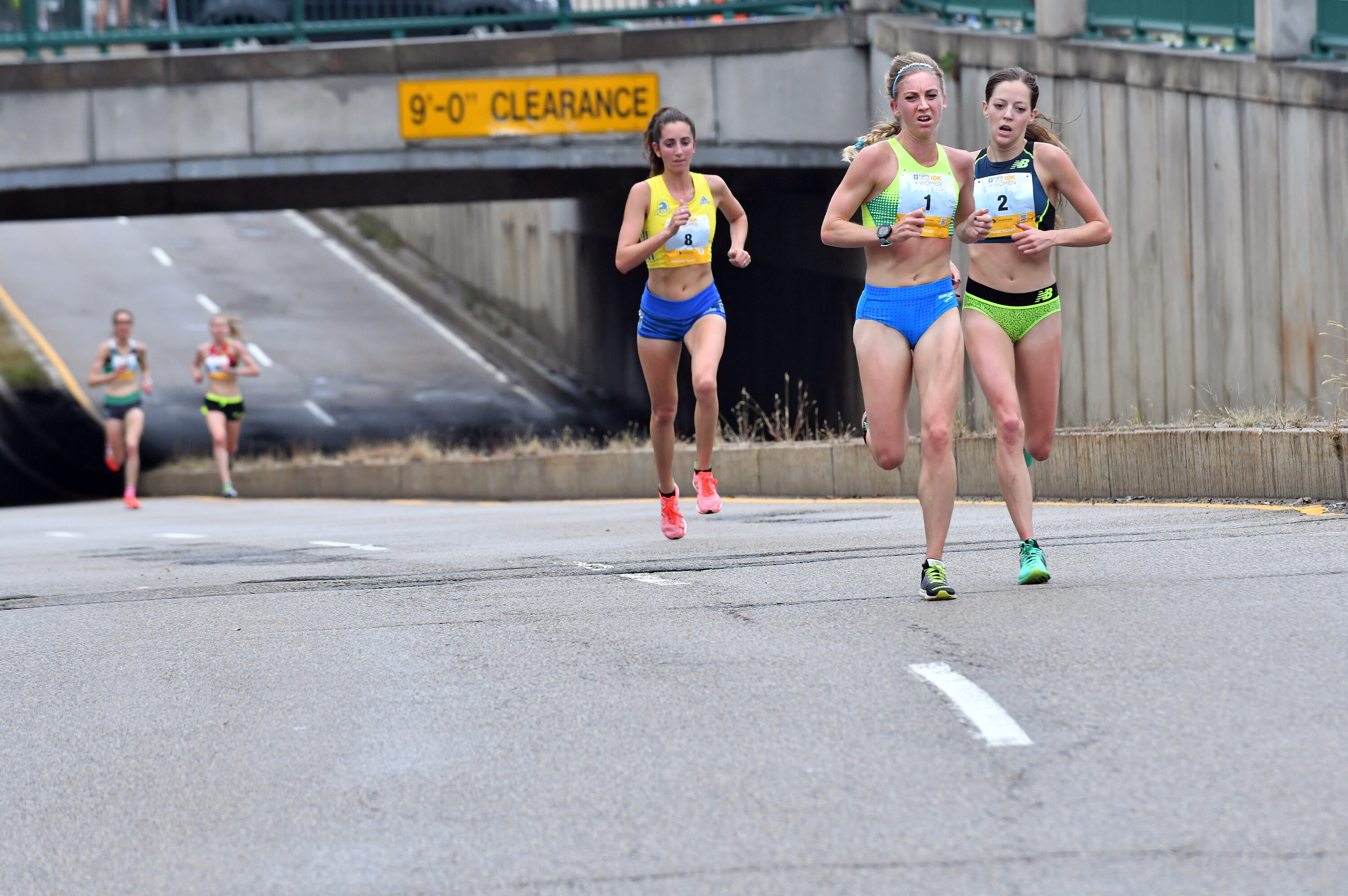
Recently, Paquette achieved a second-place finish at the USATF Half Marathon Championships in February, clocking a time of 1:09:51, which was close to her personal best. The 36-year-old athlete aims to carry over the momentum from her recent success and make a strong impression in her first marathon.
HOKA Northern Arizona Elite has had success at the Grandma’s Marathon in the past, and Paquette will be looking to contribute to that legacy.
Notably, Dakotah Lindwurm, the two-time defending champion, is among the already confirmed runners for this year’s event.
Lindwurm, who placed 33rd at the 2023 B.A.A. Boston Marathon in April, won last year’s Grandma’s Marathon with a personal best time of 2:25:01, and will aim for a three-peat in this year’s race.
(05/30/2023) ⚡AMPby Glen Andrews
Grandmas Marathon
Grandma's Marathon began in 1977 when a group of local runners planned a scenic road race from Two Harbors to Duluth, Minnesota. There were just 150 participants that year, but organizers knew they had discovered something special. The marathon received its name from the Duluth-based group of famous Grandma's restaurants, its first major sponsor. The level of sponsorship with the...
more...Hellen Obiri confirmed for New York Mini 10K
This year’s New York Mini 10K, the first women-only road race in the world, will feature Boston Marathon champion Hellen Obiri, New York City Marathon champion Sharon Lokedi, and defending champion Senbere Teferi of Ethiopia.
The trio will take on the tough Central Park course on Saturday, June 10 with the hope of displaying great results.
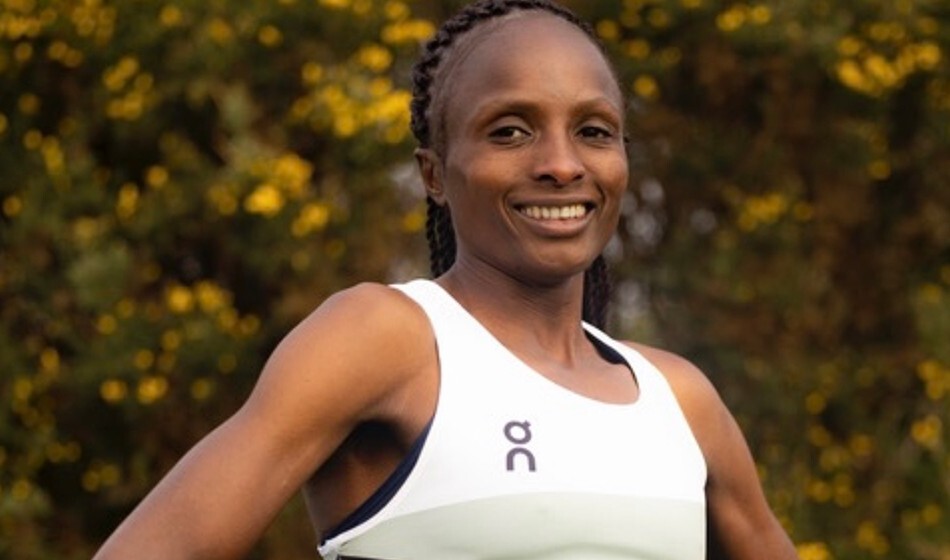
Obiri will be making her debut in the race after winning the New York City Half Marathon in March and the Boston Marathon in April. She opened her season with a win at the Ras Al Khaimah Half Marathon in February.
“There is no greater feeling than having my daughter watch me win races, and having her with me when I won the United Airlines NYC Half and Boston Marathon this year was truly special.

"Now, I’m looking forward to lining up for the women-only Mastercard Mini 10K for the first time, and having so many girls from the next generation watch me race, just like my daughter does,” said Obiri.
On her part, Lokedi could not make it to the Boston Marathon earlier this year after she got an injury during the last days of her training.
She will be returning to Central Park for the first time since winning the 2022 TCS New York City Marathon in her marathon debut in November. She was also the runner-up at last year’s Mastercard New York Mini 10K.
“The last time I was in New York, my entire life changed when I won the New York City Marathon. This iconic city will now always hold a special place in my heart and I’m eager to keep improving and show that I’m on top of the podium to stay,” Lokedi said.
Meanwhile, Teferi, the 2022 New York City Half Marathon champion, expressed her excitement towards winning last year’s event and was hopeful of winning another title.
(05/30/2023) ⚡AMPby Abigael Wafula
New York Mini 10K
Join us for the NYRR New York Mini 10K, a race just for women. This race was made for you! It’s the world’s original women-only road race, founded in 1972 and named for the miniskirt, and it empowers women of all ages and fitness levels to be active and to look and feel great on the run. Every woman who...
more...Edwin Kimaiyo to lead Kenyan trio at Stockholm Marathon
The 2011 Berlin Marathon bronze medalist Edwin Kimaiyo will be hoping to debut the 2023 season on a high with a win at the 44th edition of the Stockholm Marathon, Sweden on June 3.
Kimaiyo will be joined by fellow countrymen Robert Kipkemboi and Shadrack Kimining in the Scandinavian nation.

Kimaiyo last raced in October last year at the Munich Marathon where he finished fifth in 2:11:02 a race won by compatriot Philemon Kipchumba in 2:07:28.
The 37-year-old will be aiming to lower his personal best of 2:09:12 that he set at the Shanghai Marathon, China in November 2017.

The Kenyan trio will face stiff competition from an Ethiopian quintet led by the world junior record holder Tsegaye Mekonnen.
Mekonnen caused a major upset in the world of athletics when he won the Dubai Marathon in 2014 aged just 19 years old in a time of 2:04:32 to set the the unofficial world junior record.
Others who will pose a threat to the Kenyans include; Ethiopia's Ashenafi Moges, Zewdu Hailu, Derara Hurisa and Fikre Workneh, Eritrea's Berhane Tesfay and Mao Ako from Tanzania.
The course record is held by Ethiopia's Nigussie Sahlesilassie 2:10:10 a time he set in 2019.
(05/30/2023) ⚡AMPby Samuel Nganga
ADIDAS Stockholm Marathon
ASICS Stockholm Marathon is an exciting race in a beautiful city with runners from all over the world. This is one of the major sporting events in Sweden with hundreds of thousands of spectators along the route cheering the participants. The race takes you through Stockholm, one of the world’s most beautiful capitals. Built on 14 islands around one of...
more...Handcuffed couple lock in world record at Calgary Marathon
A Calgary couple toasted 20 years of marriage with a new world record Sunday after running the Servus Calgary Marathon handcuffed to one another. Megan and Rich MacDonald completed the 42.2-km distance in 3:18:28, setting the record for the fastest marathon run by a male-female duo tethered at the wrist.
The MacDonalds shaved 25 minutes off the previous record set at the 2019 London Marathon. In addition to hitting their target time, the couple also surpassed their fundraising target of $8,000 for MitoCanada, a charity that helps support and protect Canadians living with mitochondrial disease. The couple began training for their world-record attempt in February.
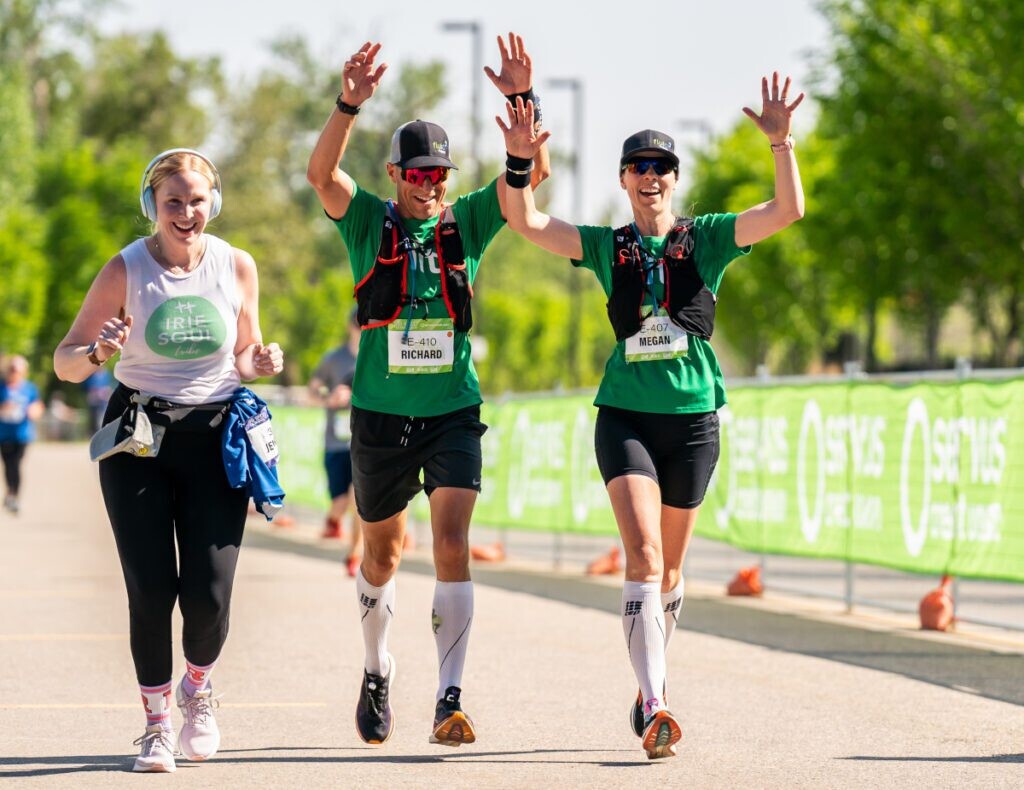
Sunday’s event wasn’t the first time the MacDonalds locked in a world record at the Calgary Marathon. In 2017, Megan was part of the 10-member Team MitoCanada who set the Guinness World Record for the fastest marathon run by a female team linked together (3:27:58). That same year, Rich was part of the 112-person team who set the record for the most people to finish a marathon linked together.
Sunday’s event wasn’t just a marathon to remember for the MacDonalds, but for a race day that continues to build its post-pandemic momentum, said John Bird, interim executive director with Run Calgary. “Today’s race went so well, and we were delighted to welcome more than 9,200 people to the finish line,” said Bird. “We had our highest attendance since the pandemic, raised more than $475,000 for charity, and brought together the running community in a great celebration of health and wellness. I’d like to thank the 1,100 plus volunteers who gave their time to help others achieve their goals today.”
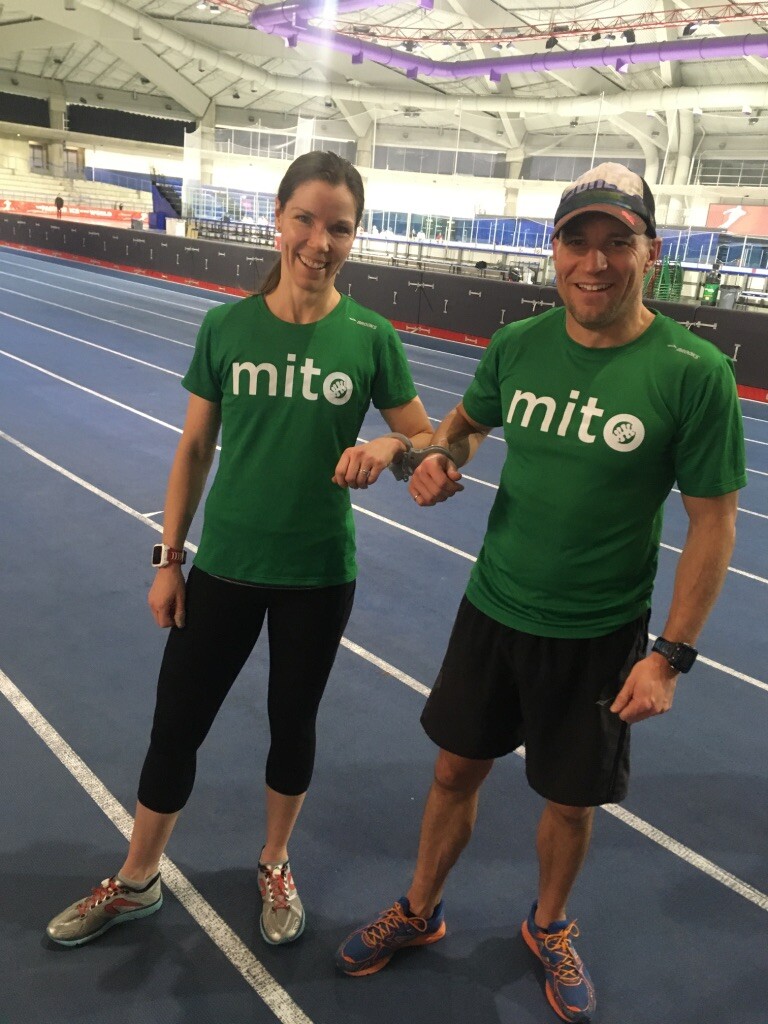
The men’s marathon was won by Lance Risseeuw in 2:36:04, and the women’s event by Maria Zambrano, in 2:48:02. Both winners are from Calgary.
In addition to the marathon, which drew close to 1,200 participants, the race day included 50-km, half-marathon, 10-km, and 5-km events, as well as a 1.2-km “kids marathon.”
In total, 93 charities benefited from donations collected through this year’s marathon, with $475,000 being collected as part of the Servus Charity Challenge. The event has raised $9.7 million for charities over the last 12 years.
(05/30/2023) ⚡AMPby Paul Baswick
Scotiabank Calgary Marathon
This is Canada's oldest marathon, Canadians and runners from around the world love this race, consistently voting in the Best Road Race in Alberta. There is a 50k, full-marathon, half-marathon, 10k, 5k family walk/run and kids races. You expect the route to be packed with participants and enthusiastic spectators. ...
more...400s for speed and endurance
You may assume that 400m repeats, 400s or ‘quarters’ as they are known in the US, are only for runners of the shorter distances, but that’s just not true, and whether you are a 5k or marathon runner the workouts can be tailored to your goals.
Your local track is 400m in length so doing one lap is an easy distance to utilise in training. What you need to understand whether a runner or coach is that this particular repetition distance can be used in multiple different ways and achieve multiple different stimuli.
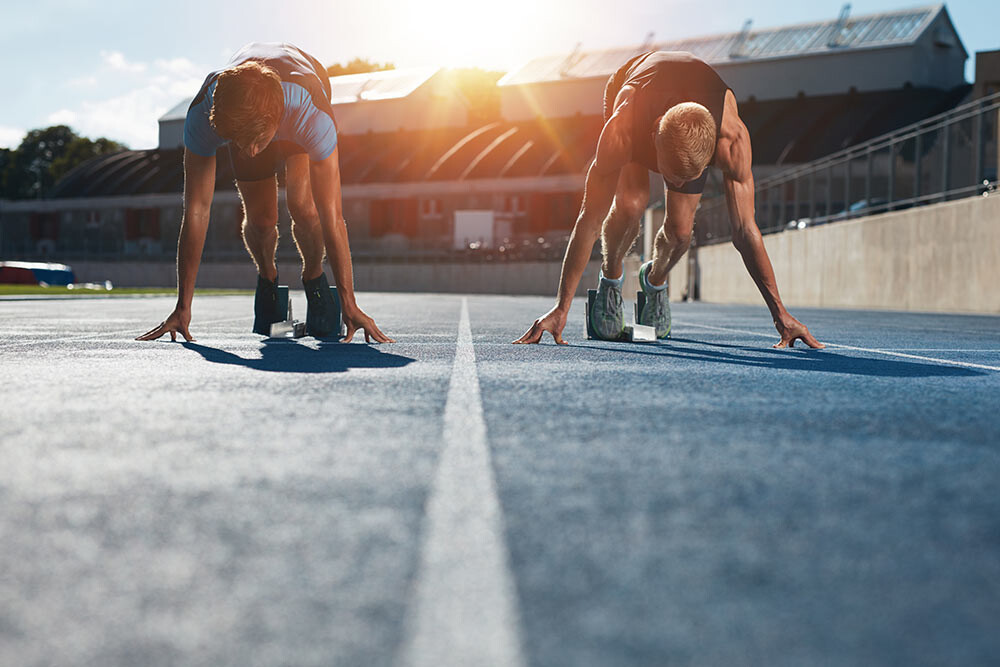
Many experienced runners will have the standard 400m repeats integrated into their training programmes and in this article, I will outline different variations that can be undertaken using this popular distance.
Please note all workouts below are samples and should always be tailored to the individual depending on their target race distance, physiological profile, training and injury history.

Samples workouts
800m pace: 4x400m with 5-6 mins walk recovery OR 2 sets of (2x400m) with 90 secs walk recovery between reps and 10 mins walk between sets.
1500m pace: 6-10x400m with 90 secs-2 mins walk/jog recovery OR 2-3 sets of 3x400m with 75 secs walk/jog recovery between reps and 3 mins walk/jog recovery between sets.
3000m pace: 8-12x400m with 75-90 secs walk/jog recovery OR 2-3 sets of (4x400m) with 45-60 secs jog recovery between reps and 3 mins jog recovery between sets.
5000m pace: 12-16x400m with 60 secs jog recovery between reps OR 3-5 sets of (4x400m) with 45 secs jog recovery between reps and 3 mins jog between sets.
10,000m pace: 20-25x400m with 45 secs jog recovery OR 2 sets of (10-14x400m) with 30-45 secs jog recovery between reps and 3 mins jog between sets
Half marathon pace: 30-35x400m with 30 secs jog recovery between reps OR 2 sets of (15-20x400m) with 15-30 secs jog recovery between reps and 2-3 mins jog between sets.
In the examples above you can see 400m intervals can be used with a variety of different paces from 800m pace all the way to half marathon pace.
What essentially changes along with pace is the volume of the workout and the recovery between reps and sets. By doing this you change the stimulus achieved from the given workout and this holds true for using any distances 400m/600m/800m/1000m/1200m/1600m/2000m etc.
Think about what you are trying to achieve from the workout, what stimulus you are looking for and then look at three main areas; pace, volume and recovery.
With regards to the recovery think about whether you would like this to be walking, shuffle jogging or a float jog recovery where we keep the recovery part steady.
Different ends of the scale
When we talk about achieving a certain stimulus lets look at two examples on the opposite end of the pace scale.
The 4x400m workout at 800m pace produces very high lactate levels and heart rates near max levels. It is very physically and mentally demanding and it produces an anaerobic stimulus.
The 400m workouts at half marathon pace, however, produce far lower lactate levels, heart rate is lower, but it helps improve lactate shuttling and it is a total aerobic stimulus.
Also, consider that 400m reps can be used in many other ways other than just as a stand-alone workout. They can be tagged on to the end of a workout or used within workouts.
There is no one way to use them and mixing them with other paces works quite well.
Example workouts for experienced runners
Tempo run and 400s: 10 min tempo effort, 4x400m @ 10km pace, 4 min tempo effort, 4x400m @ 10km pace, 10 min tempo effort
Uphill tempo and 400s: 5 min steady state uphill effort, 4x400m @ 5km-10km pace, 5 min steady state effort uphill, 4x400m @ 5km-10km pace
Power hills and 400s: 4-6x400m @ 10km pace, 4×10 secs short power hills, 4-6x400m @ 10km pace, 4×10 secs short power hills, 4-6x400m @ 10km pace
400s at descending paces: 4-5x400m @ HM Pace, 4-5x400m @ 10km pace, 4-5x400m @ 5km pace, 4-5x400m @ 3km pace
Continuous tempo and 400s: 20-30 minute continuous Tempo followed by 4x400m on a track descending paces from 10km down to 3km pace
Mile reps and 400s: 1 Mile @ 10km pace, 4x400m @ 5km pace x 2-4 sets.
The examples above are just a way of showing how you can incorporate the use of 400m intervals in a mixture of different workouts. The key message here is they are flexible and can be altered to suit your training distance and goals.
Runners and coaches just need to experiment, use their imagination and keep changing up their workout designs to find exactly what works for your desired targets.
A key message again to reinforce is that what you do with the volume of the workout, the pace of the rep and the recovery between reps/sets dictates the overall load and stimulus achieved.
It’s about trial and error sometimes, have fun with the design of your workouts and don’t be afraid to try something new.
(05/29/2023) ⚡AMPby Steven Macklin
Ben Schneiderman wins men’s citizen race title at 43rd Bolder Boulder
Leading up to the 43rd running of the Bolder Boulder, Ben Schneiderman didn’t feel great about a lot of his workouts.
He felt great on race day, however.
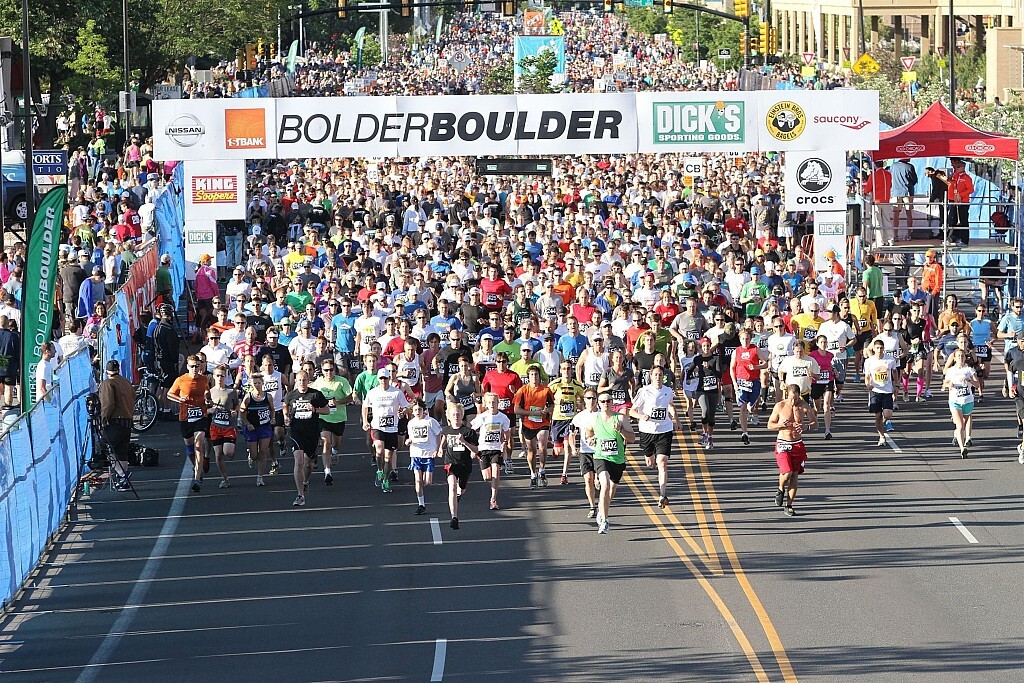
On Monday, Schneiderman won the men’s citizen’s race at the Bolder Boulder, using a strong final push to finish in 31 minutes, 1.88 seconds.
“It’s pretty exciting,” Schneiderman said. “I qualified for the Olympic trials in the marathon in December at the California International Marathon, so I kind of decided to take a break from the full marathon and run a couple of shorter races after that before the fall. So I kind of picked out Bolder Boulder because it’s local and it’s a great race. It feels good.”
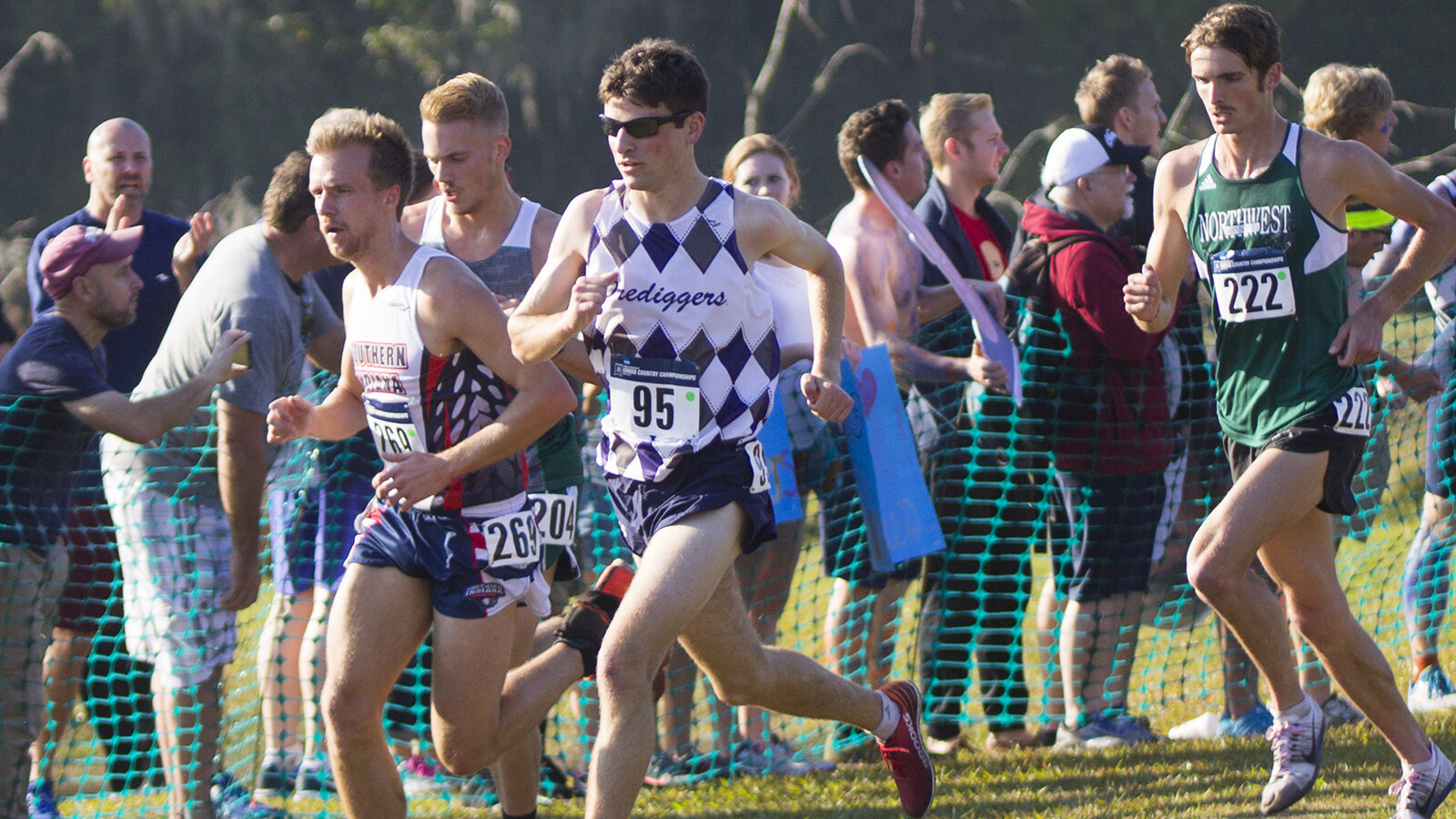
Josh Romine was second, in 31:06.98, while Max Sannes was third, in 31:17.50.
Schneiderman was in third for much of the race, but surged past Romine and Sannes on the final uphill stretch.
“I wanted to kind of go after those front two,” he said. “They were ahead of me for most of the race, but I thought I could maybe get them on the hill there at the end, which is how it played out.
“I’m strong on hills. The uphill final mile definitely helped me. Usually on those downhill stretches is where it seemed like they would pull away a little bit and then I would get back on the uphill a little bit.”
Schneiderman grew up in Colorado Springs and graduated from Liberty High School in 2014, lettering all four years in track and cross country. He then ran at Colorado School of Mines, where he earned several All-RMAC honors.
Schneiderman, who graduated from Mines with his PhD in December, had run in the Bolder Boulder a couple of times before, but this was his first time since 2015.
“It was fun,” he said. “I never finished that far up before. When I was in high school, I was (around 40th place) usually. It was a good race. Good day for it.”
Also running Monday was Schneiderman’s brother, Noah, who finished in 35:23, as well as former Mines teammate Jake Mitchem, who was fourth (31:20.16).
“He just told me he was going to do it like a couple weeks ago, so I was like it would be cool to work together, which we did for like the first half of the race or so,” Schneiderman said.
In the second half, his training paid off as he claimed his first win.
“This is encouraging,” said Schneiderman, who will compete in the Olympic trials in February. “I wasn’t really sure how fit I was coming into this because I just had a lot of sort of flat-feeling workouts during this training block, but it felt really nice to come out here and feel good and feel like I could put myself in it.”
(05/29/2023) ⚡AMPby Brian Howell
BOLDER BOULDER
In 1979 we dreamt of attracting a few hundred of our friends to race though the streets of Boulder, Colorado to celebrate Memorial Day with our families. Fast forward almost 40 years and the Bolder BOULDER has grown to become one of the largest and most highly acclaimed 10K’s in the world. Almost 1.2 million runners, joggers, walkers and spectators...
more...Eilish McColgan says her recent injury makes World Championship gold less likely
Eilish McColgan says winning gold at this summer's World Championships is a "pipe dream" and she is instead focusing on breaking the 30-minute barrier in the 10,000m.
The 32-year-old Scot is recovering from the knee injury that forced her to pull out of the London Marathon last month.
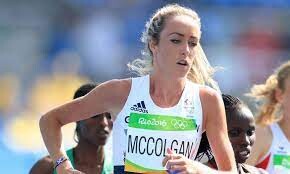
She returned to light training at the weekend and thinks gold in Budapest in August is now less likely.
"That would exceed my goals right now because of the setbacks," she said.
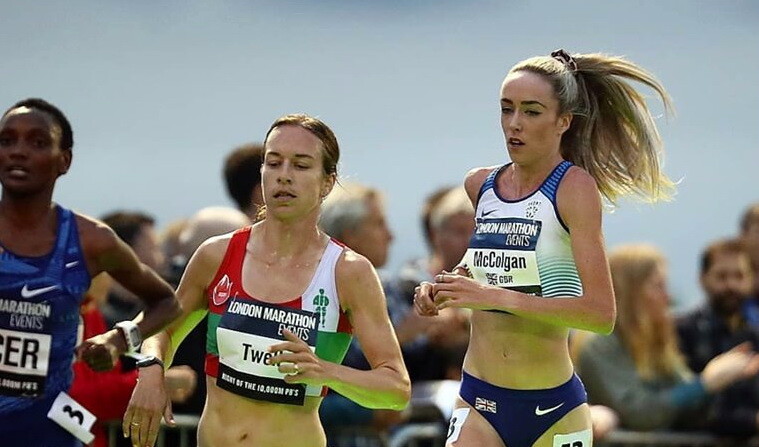
"I think it would be a pipe dream right now, but I am not going to set myself any real limits.
"To be in Budapest and be at the start and healthy would be a big achievement to be honest.
McColgan won 10,000m gold in the European Championships in 2021 and then at the Commonwealth Games 12 months later, before creating history in March of this year by setting a new British record of 30:00.86.
"My big thing this year would be to break the 30 minutes in the 10k," she added.
"I think there are only 12 women in the world who have done that - it would be a big achievement for me.
"Earlier in the year, I had no doubt I could break 30 minutes. Now there is a little bit of a doubt because I haven't been able to train for the last so many weeks."
The one bonus for McColgan is that her knee problem did not require surgery and now she can concentrate on completing her rehab and improving her best ever time.
"To be in the top six fastest women in the world - that would be a great achievement," she said.
(05/29/2023) ⚡AMPby BBC Sport
World Athletics Championships Budapest 23
From August 19-27, 2023, Budapest will host the world's third largest sporting event, the World Athletics Championships. It is the largest sporting event in the history of Hungary, attended by athletes from more than 200 countries, whose news will reach more than one billion people. Athletics is the foundation of all sports. It represents strength, speed, dexterity and endurance, the...
more...Eliud Kipchoge routes for girl-child career and education
Double Olympic marathon champion Eliud Kipchoge is rooting for the empowerment of girl-child both in sports and education.
This, he said, will equip the girls with more knowledge, sensitize them on the developments within their bodies as they grow and make them develop self-respect.
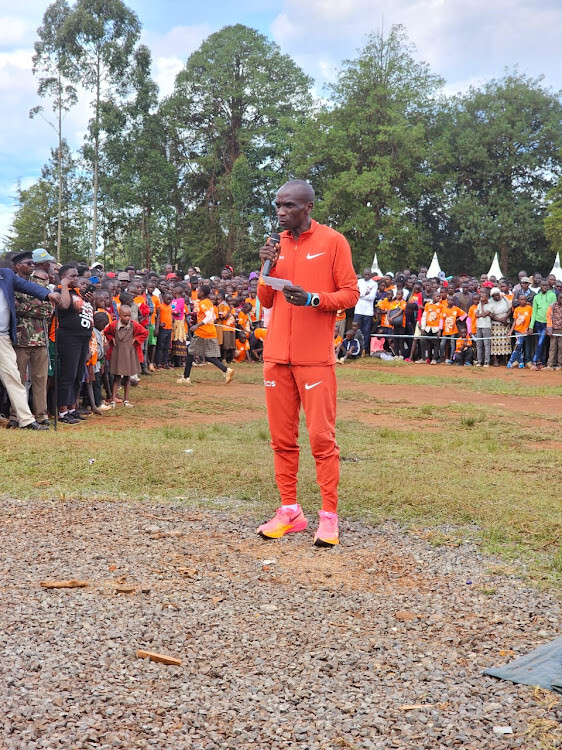
The world marathon record holder added that fitness is key to establishing talent.
“It is proper to establish their (girl) talent, whether in athletics or other fields to allow them to thrive. Fitness is paramount. The fittest girl is always bright," Kipchoge, a four-time London marathon champion, was speaking in Kapsisiywa, Nandi County during the first edition of Kapsisiywa Girl Run on Saturday.
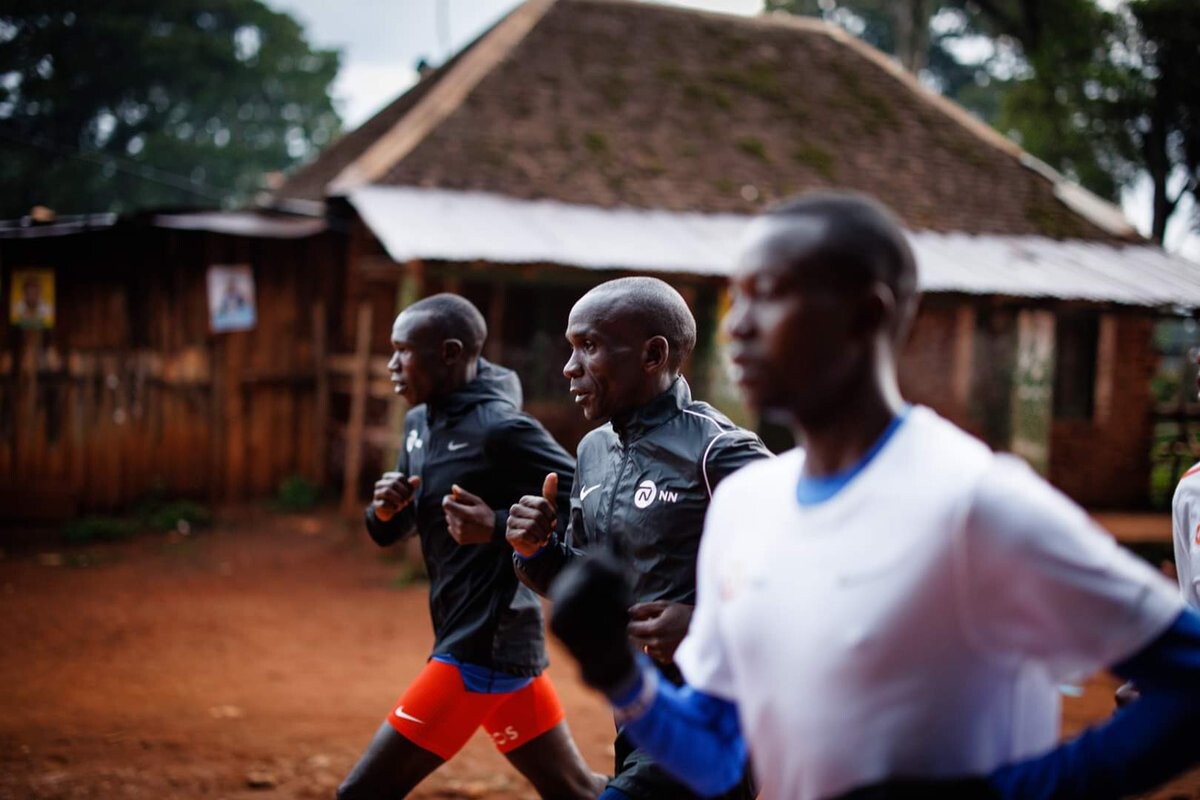
"It doesn't mean the boy-child has been overlooked, we are dedicated to girls because they are vulnerable due to the menstrual cycle. Sanitary pads are rarely used in villages. People are still using mattresses, clothes among others and we want to sensitize them and tell them to use the clean method," he added.
The next phase, he said, will target the boys who equally need to be informed.
“Our main aim is passing education to everybody. We want people to develop self-awareness”.
He urged parents and guardians to give an opportunity to the girls who have shown interest in sports especially athletics which has helped improve the living standards of many families.
“Parents and guardians must play a leading role in ensuring that the girls get much-needed education and develop their careers. We have to set a good example and that will ensure that all girls finish high school before making the right choice in their lives,” said Kipchoge, the three-time Berlin marathon champion.
(05/29/2023) ⚡AMPby Emmanuel Sabuni
Rejeanne Fairhead sets new 5k record for 95 plus
Canada’s Rejeanne Fairhead can now call herself the fastest 95+ woman in the world. On Saturday afternoon in 30 C weather, the 96-year-old unofficially destroyed the women’s 95+ world record, running 51:09 for five kilometres at the Ottawa 5K.
At Friday’s press conference, she said her secret to running fast is keeping busy. “I try to be active in all sports, and take care of myself and be happy,” said Fairhead.
Fairhead received honours from the race announcers before and after the race for her attempt and new accomplishment. She is the eldest participant of the Ottawa Race Weekend for the second consecutive year.
The women’s 95+ world record Fairhead beat was that of American Betty Lindberg, who ran 55:48 at the 2022 Atlanta Peachtree 5K.
(05/28/2023) ⚡AMPGerman sprinter runs 9.51 seconds, discovers clock was broken
Those in attendance at the Puma Fast Arms, Fast Legs track meet on Wednesday in Wetzlar, Germany, were in shock when German sprinter Milo Skupin-Alfa stopped the clock at 9.51 seconds in heat two of the 100m qualifying round. The timing clock showed Skupin-Alfa ran the fastest 100m time in history, but moments later it was discovered to be broken.
Germany is well known for its fast tracks–it’s where the great Usain Bolt set his 100m world record of 9.58 seconds at the 2009 World Championships in Berlin. But Skupin-Alfa will have to go back to the drawing board to run 9.51 seconds.
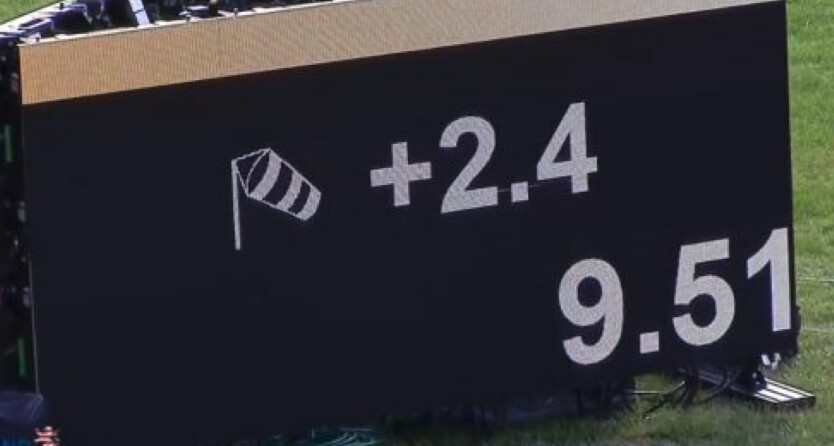
The time would have been a massive result for the 24-year-old, Skupin-Alfa, who held a personal best of 10.23 seconds heading into the race. Meet officials managed to get the clock fixed shortly after and credited him with the heat win and a time of 10.36 seconds (+2.4 m/s).
Only one sprinter in history has, unofficially, run faster than Bolt’s world record. In 2011 on a Japanese TV show, U.S. sprinter Justin Gatlin ran 9.45 seconds for 100m with the help of several massive wind fans gusting +20.0 m/s tailwinds. The 2004 Olympic 100m champion had a large industrial fan behind his starting blocks and four wind fans strategically placed in the lanes beside him.
Even though Skupin-Alfa did not run a personal best or world record in Wetzlar, he has a promising career ahead of him.
(05/28/2023) ⚡AMPby Running Magazine
10 Reasons to Start Following Track and Field This Year
The 2023 season should be full of record-breaking performances from the sport’s biggest stars. Here are the most important things to know.
Track is back, and if the results from the indoor season and early outdoor meets are any indication, it should be another year of eye-popping results around 400-meter ovals this summer.
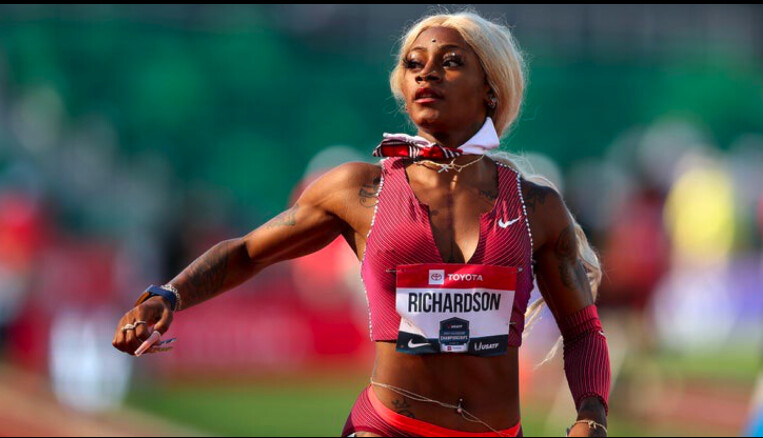

Why is track and field relevant to the average recreational runner?
Perhaps you’re running some of the same distances in your training and racing. Or maybe you have a connection to some of the events from your youth, days in gym class or on the playground. From a human performance perspective, no sport showcases the all-out speed, red-line endurance, max power, dynamic agility, and meticulous bodily control as track and field does.
Here’s a primer on the most awe-inspiring athletes and events of this summer’s track season. Because, come on: with a sport that includes events as multifaceted as the pole vault, as primal as the shot put, and as wild as the 3,000-meter steeplechase—a 1.8-mile race with 28 fixed barriers to hurdle and seven water pits to jump—what’s not to like?
One of the many things that makes track and field so special is that it’s one of the most diverse sports on the planet, both culturally and athletically.
Last summer, athletes from a record 29 different countries earned medals in the 25 different running, jumping, and throwing events at the World Athletics Championships in Eugene, Oregon.
At the highest level, there are athletes of all shapes and sizes from every culture and socioeconomic background. While there certainly are racial and cultural stereotypes that need dissolving and vast inequality among competing countries, from a performance point of view the sport is largely meritocratic, based on the time or distance achieved in a given competition.
Watching American Sydney McLaughlin-Levrone masterfully win the 400-meter hurdles in a world-record time last summer in front of a deafening crowd at Hayward Field in Eugene was a riveting experience. It was vastly different than watching Grenada’s Anderson Peters win the javelin world title with a career-best throw of 90.54 meters on his final attempt to beat India’s Neeraj Chopra, but both had edge-of-your-seat excitement, athletic excellence, and cultural significance.
One of the knocks against track and field in recent years is that it hasn’t done enough to attract casual fans the way professional football, basketball, hockey, and soccer have. Following the On Track Fest, the USATF Los Angeles Grand Prix on May 26-27 in Los Angeles is trying to up the ante by combining a mix of elite-level competition, an interactive fan festival, and top-tier musical performances.
Billed as the one of the deepest track meets ever held on U.S. soil, it will feature a star-studded 400-meter face-off featuring Americans Michael Norman, the reigning world champion, and Kirani James, a three-time Olympic medalist from Grenada, and a women’s 100-meter hurdles clash with world champion Tobi Amusan of Nigeria, Olympic silver medalist Keni Harrison of the U.S., and Olympic gold medalist Jasmine Camacho-Quinn of Puerto Rico.
Saturday’s action will be broadcast live on NBC Sports from 4:30 P.M. to 6 P.M. ET and be followed by a concert event called the Legends Jam, which will include appearances from some legendary athletes and be headlined by Grammy-winning singer Judith Hill.
American sprint sensation Sha’Carri Richardson will be racing the 100-meter dash at the USATF Los Angeles Grand Prix. You probably remember her for her perceived failures more than the astounding times she’s actually achieved on the track.
Two years ago, the sprinter from Dallas blew away the field in the 100-meter dash at the U.S. Olympic Trials with a 10.86 effort, but then she was famously suspended after testing positive for cannabis (which is on the World Anti-Doping Agency’s list of banned substances) and missed the Tokyo Olympics as a result. (She admitted using the drug to cope with the pressure of qualifying for the Olympics while also mourning the recent death of her biological mother.)
Then last year, despite strong early season performances, Richardson failed to make the finals of the 100-meter or 200-meter at the U.S. championships, so she missed out on running in the first world championships held on American soil.
This year, the 23-year-old sprinter appears to be locked in and better than ever, posting a world-leading 10.76 100-meter time on May 5 in Doha (she also ran an eye-popping 10.57 with an over-the-limit tailwind on April 9 in Florida) and posted the second-fastest time in the 200-meter (22.07) on May 13 at a meet in Kenya.
If she keeps it all together, expect Richardson to finally contend with elite Jamaican sprinters Shericka Jackson and Shelly-Ann Fraser-Pryce in the 100 and 4×100-meter relay in August at the World Athletics Championships in Budapest, Hungary.
A few years ago, American sprinter Fred Kerley was on his way to becoming one of the world’s best 400-meter runners. But he wanted more than that. What he really had his heart set on was becoming the world’s fastest man, a moniker that goes with the most dominant sprinter in the 100-meter dash.
Ignoring doubters, Kerley retooled his training and earned the silver medal in the 100-meter at the Tokyo Olympics (.04 seconds behind Italy’s Marcell Jacobs) and then continued his ascent last year by winning the U.S. championships (in 9.76, the sixth-fastest time in history) and world championships (9.86).
The 28-year-old from San Antonio, Texas, also became one of just two other runners (along with American Michael Norman and South African Wayde van Niekerk) to ever run sub-10 seconds in the 100-meter, sub-20 seconds in the 200-meter, and sub-44 seconds in the 400-meter. So far this year, Kerley has two of the four fastest 100-meter times of the season, including a speedy 9.88 on May 21 in Japan.
After trading barbs on social media this spring, Kerley and Jacobs are expected to face off in an epic 100-meter showdown on May 28 at a Diamond League meet in Rabat, Morocco, marking the first time the Olympic gold medalist and the world champion in the men’s 100m face off since the 2012 Olympic final, when Jamaican Usain Bolt beat countryman Yohan Blake. American Trayvon Bromell, the silver medalist at last year’s world championships, is also in the field, so it should be an extraordinary tilt.
If you’re a gambler, bet on Kerley to win that one and eventually get close to Bolt’s 9.58 world record. (To do so, he’ll be running faster than 26 miles per hour!) But don’t count out Kenya’s Ferdinand Omanyala, the early world leader (9.84), or fellow American sub-9.9 guys Bromell, Norman, Christian Coleman, and Noah Lyles at the 2023 World Athletics Championships on August 20, in Budapest. Depending on which three Americans join Kerley (who has an automatic qualifier) at the world championships, it’s actually quite likely the U.S. could sweep the top four spots in the 100 in Budapest.
If you’ve ever wanted to see the world’s top track and field stars competing live in the U.S., this is the year to do it. The May 26-27 USATF Los Angeles Grand Prix meet and June 3-4 Portland Track Festival are part of what might be the mosst compelling outdoor track season ever held on U.S. soil.
If you’re looking for an athlete to marvel at, start with Sydney McLaughlin-Levrone, the gold medalist in the 400-meter hurdles at the Olympics in 2021 and World Athletics Championships last summer. She’s been one of the sport’s rising stars since she was a teenager and yet she’s only 23. Her trajectory is still rising—especially since she moved to Los Angeles to train under coach Bob Kersee. Driven by her strong faith, McLaughlin-Levrone is the personification of hard work, grace and competitiveness.
This year she’ll temporarily step away from her primary event to show off her pure sprinting prowess when she opens her season in a “flat” 400-meter race at the Diamond League meet in Paris on June 9. Her personal best in the 400-meter is 50.07 seconds, set when she was a freshman at the University of Kentucky, but she clocked a speedy 50.68 while running over hurdles, en route to a world-record setting win at last summer’s world championships.
Her best 400-meter split as part of a 4×400-meter relay is 47.91, so it’s within reason to think she could be one of several runners to challenge the long-standing world record of 47.60 set in 1985 by East German Marita Koch. Because McLaughlin-Levrone has an automatic qualifier to the world championships in the 400-meter hurdles, she will likely run the open 400-meter at the U.S. championships and decide after the meet which one she’ll focus on.
American 800-meter ace Athing Mu has looked unbeatable for the past several years as she won Olympic gold in the event at the Tokyo Olympics and last year’s world championships. In fact, she has been unbeatable, having won 13 straight races since she dropped out of a mile race at the Millrose Games in January 2022. Going back to 2020 (when she was a senior in high school) and 2021 (during her one season at Texas A&M), she’s finished first in 51 of her past 53 races (relays included), with her only loss being a narrow runner-up finish to Kaelin Roberts in the 400-meter at the 2021 NCAA indoor championships.
Mu, who is also coached by Kersee and trains with McLaughlin-Levrone, seems to be the most likely athlete to challenge the women’s 800-meter world record of 1:53.28, set in 1983 by the Czech Republic’s Jarmila Kratochvílová. It’s the longest standing record in track and field, and only two runners have come within a second of it in the past 15 years. Her personal best of 1:55.04 is an American record and the eighth-fastest time in history. She’s still only 20 years old, so she has many years to keep improving and other historic opportunities ahead of her.
Mu said earlier this year she’d like to try a 400-800-meter double at an Olympics or world championships if the schedule permits—it’s only been done once successfully by Cuba’s Alberto Juantorena at the 1976 Games—but her coach has said she might attempt a 800-1,500-meter double next year at the Paris Olympics.
This year, Mu will run the 1,500 meters at the USATF Championships in July, but will likely defend her 800-meter title at the world championships in Budapest, as well as potentially running on the U.S. women’s 4×400-meter relay and the mixed-gender 4×400-meter relay (with McLaughlin-Levrone) for an opportunity to win three gold medals in a single championships.
With apologies to quarterback extraordinaire Patrick Mahomes, gymnastics all-arounder Simone Biles, and skiing superstar Mikela Shiffrin, pole vaulter Armand Duplantis just might be the most dynamically talented athlete in the world. That’s because he’s the world’s most dominant athlete (and has set six world records) in arguably the most demanding discipline, not only in track and field but quite possibly in any sport. No sport discipline involves such a dynamic combination of speed, power, precision and agility, and Duplantis, who is only 23, is already the greatest of all-time.
Prove me wrong or watch him set his latest world record (6.22 meters or 20 feet, 5 inches) at an indoor meet on February 25 in Clermont-Ferrand, France. That’s the equivalent of vaulting onto the roof of a two-story building, and in his case, often with room to spare.
Duplantis, who grew up in Lafayette, Louisiana, to athletic parents with Swedish and Finnish heritage, represents Sweden in international competitions. He started pole vaulting at age three, set his first of 11 age-group world-best marks at age seven, and won an NCAA title in 2019 as a freshman competing for LSU before turning pro.
All indications are that North Carolina State junior Katelyn Tuohy could become the next American running star. All she has done since she was young is win races and break records.
After winning the NCAA outdoor 5,000-meter a year ago, she won the NCAA cross country title in November. During the indoor track season this past winter, she set a new collegiate mile record (4:24.26) and won both the 3,000-meter and 5,000-meter title at the NCAA indoor championships in March. On May 7, the 21-year-old from Thiells, New York, broke the NCAA outdoor 5,000-meter record by 17 seconds, clocking 15:03.12 at the Sound Running On Track Fest.
Tuohy will be running both the 1,500-meter and 5,000-meter at the NCAA East Regional May 24-27 in Jacksonville, Florida, with the hopes of eventually advancing to the finals of both events at the June 7-10 NCAA Division I championship meet in Austin, Texas.
University of Arkansas junior Britton Wilson is a top collegiate star who is ready for prime time at the pro level. She won the 400-meter in a world-leading and collegiate record time of 49.13 in mid-May at the SEC Championships, where she also won the 400-meter hurdles (53.23) in a world-leading time. The 22-year-old from Richmond, Virginia, was the runner-up in the 400-meter hurdles at last year’s U.S. championships and fifth in the world championships, and could contend for a spot on Team USA in either event at the July 6-9 U.S. championships.
Kerley and Lyles are expected to square off in a 200-meter race at the USATF New York Grand Prix meet on June 24 at Icahn Stadium on Randall’s Island in New York City. There are also two high-level Puma American Track League meets in Tennessee—the Music City Track Carnival June 2 in Nashville and the Ed Murphey Classic August 4-5 in Memphis—and two Under Armour Sunset Tour meets organized by Sound Running on July 22 in Los Angeles and July 29 in Baltimore.
The best U.S. meet of the year, though, will be the USATF Outdoor Championships held July 6-9 in Eugene, Oregon, where American athletes will be vying for top-three finishes to earn a chance to compete for Team USA at the 2023 World Athletics Championships August 19-27 in Budapest.
The U.S. season will culminate with the September 16-17 Pre Classic in Eugene, Oregon, a two two-day meet that will double as the finals of the international Diamond League circuit and should include many of the top athletes who will be representing their countries in next summer’s Paris Olympics. (And if you want to see the country’s top high school athletes run unfathomable times for teenagers, check out the Brooks PR Invitational on June 14 in Seattle, Washington.)
At the June 2 Diamond League meet in Rome, Italy, the men’s field in the 5,000-meter run will have what might be the fastest field ever assembled, with 13 runners who have personal best times of 12:59 or faster.
The field will be headlined by Joshua Cheptegei of Uganda, who lowered the world record to 12:35.36 in Monaco three years ago. (That’s a pace of 4:03 per mile!). But it will also include Kenya’s Jacob Krop (12:45.71) and Nicholas Kipkorir (12:46.33), Ethiopia’s Yomif Kejelcha (12:46.79), American Grant Fisher (12:46.79), Canadian Mohammed Ahmed (12:47.20), and Guatemalan-American Luis Grijalva (13:02.94), among others. With a big prize purse at stake and pacesetters ramping up the speed from the start, it should be a race for the ages.
(05/28/2023) ⚡AMPby Outside Online
Natasha Wodak and Moh Ahmed win top spots at Canadian 10K Championships
More than 6,400 runners took part in the 2023 Ottawa 10K, presented by Otto’s Ottawa. The race attracted some of the best professional runners in Canada as well as thousands of participants from across the National Capital Region and the country. Once again this year, Ottawa played host to the Canadian 10K Championships.
In the women’s category, 41-year-old Natasha Wodak of Vancouver completed the 10K in 32:51, winning the Canadian Championship for the third year in a row. Wodak took an early lead, leaving Leslie Sexton to take 2nd place, in 33:13. Montreal’s Caroline Pomerleau captured 3rd in 33:16.
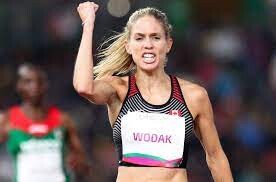
Mohammed Ahmed took first place in the men’s category, with a time of 28:21. For most of the race, the St. Catherine’s runner ran neck and neck with Cam Levins, of Black Creek, British Columbia. But Ahmed was able to pull away in the final stretch, leaving Levins to take second in a time of 28:39. Jeremy Coughler, of London, Ontario, took third place in 29:31.
Starting at Ottawa City Hall, the 10K course took runners along the famous Rideau Canal before heading across the Pretoria Bridge to an exciting finish in front of thousands of cheering spectators on Queen Elizabeth Drive. But the heat posed a challenge for many runners, as it was 28 degrees Celsius when the race started.
(05/28/2023) ⚡AMP
Galen Rupp’s high school 5000m record (13:37.91) stood for 18 years, 9 months, 6 days Connor Burns’ high school 5000m record (13:37.30) stood for 20 days. Lex Young went 13:34.96 last night in Los Angeles
It’s not every day that the 18th place finisher in a race steals the headlines but Newbury Park High School senior (CA) Lex Young highlighted the first night of the LA Grand Prix by breaking the U.S. high school 5000m record in 13:34.96. U.S. road 5K champion Abdihamid Nur won the race in a personal best of 13:05.17 and locked up his World Championship qualifying standard.
What you need to know:
– The previous high school record of 13:37.30 was set just three weeks ago by Connor Burns at Sound Running’s Track Fest. He broke Galen Rupp’s record of 13:37.91, which had stood since 2004.
– This should not come as much of a surprise after Young ran 13:43.95 last year. He didn’t have the best start to the year after finishing the 2022 cross-country season injured and then finishing third in the 5000m at New Balance Nationals Indoor in 14:00.64. Young has raced sparingly this outdoor season but took a big step forward with a 13:44.83 at the Bryan Clay Invitational on April 14. He called his shot and publicly announced he was going after Burns’ record in the leadup to Friday night’s race.
What told him in training that this was possible:
“The times kept on getting faster and the effort kept on feeling easier, where I knew with the training progressing in the same way, I’d be ready by now.”
On racing a majority of the race solo:
“I knew it would be pretty darn fast but I thought there would be more people in that 13:30-13:40 range. So when everyone was still together at a mile and I was dropping off, I had to take a couple of breaths and think, ‘I’m falling off the back but it’s not because I’m dying but if I keep on going with them, I don’t want to dig myself down into a deeper hole.’ They were going really fast. They went like 4:17, which is faster than I need to go for the record. I wanted to be a bit more conservative.”
On what it’s like being a high school star in the social media era, where performances are under a bigger microscope and open to more criticism:
“When I produce the content, it motivates other people to try and do what I’m doing. Ultimately that is so worth it. People come up to me and they tell me how much it’s inspired them and that means so much. No matter how much people will hate or people who comment and doubt, I will always keep producing the content because I know how much it can help people as other people’s content has helped me.”
Other highlights from the LA Grand Prix:
– Emily Lipari won the women’s 5000m in 15:08.87 for her second-best career performance. She closed with a 69.34-second final lap.
– Team New Balance Boston’s Emily Mackay won the women’s 1500m in a personal best of 4:07.03. She spoke about what she’s learned in her first full year as a pro.
– Kieran Lumb notched a personal best of 3:35.99 to outkick NACAC champion Eric Holt in the men’s 1500m. He discussed his decision to turn professional and sign with On.
– Under Armour Mission Run Baltimore’s Ahmed Jaziri won the men’s 3000m steeplechase in 8:17.64 – just barely missing the World Championships qualifying standard.
– Former Colorado Buff Madie Boreman took 10 seconds off her personal best to win the women’s steeplechase in 9:22.99. She is now being coached by Julie Benson and could be a contender for the U.S. team.
– Craig Engels won his first race of the year with a 1:47.32 in the men’s 800m. He took three months off due to a torn calf and Achilles injury.
– Laurie Barton of the Brooks Beasts won the women’s 800m in 2:02.54.
----
Chris Chavez launched CITIUS MAG in 2016 as a passion project while working full-time for Sports Illustrated. He covered the 2016 Olympics in Rio de Janeiro and grew his humble blog into a multi-pronged media company. He completed all six World Marathon Majors and is an aspiring sub-five-minute miler.
(05/27/2023) ⚡AMPby Citius Magazine
Kenyan athlete killed in hit and run accident in Kapsabet
Kenyan athletics lovers woke up on Saturday morning to shocking news following the death of youthful athlete Sammy Kosgei which happened on Friday night in Nandi County.
Kosgei, who comes from Kamonjil village in Nandi County, was involved in a road accident along the Kapsabet-Lessos road at around 7:30 pm when he was knocked down by a hit-and-run passenger vehicle.
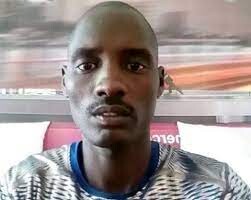
Nandi Police Commissioner Joseph Kavoo said that the accident at the Emaki Trading Centre killed him on the spot.
“The said athlete was walking along the road at the trading center before he was hit by a public service vehicle. However, we cannot ascertain where the athlete was going or coming from,” said Kavoo.
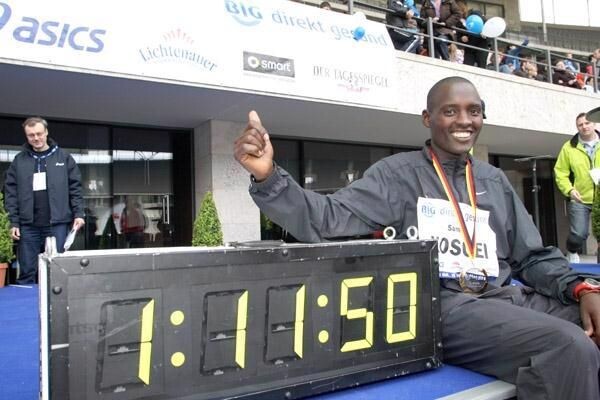
He added that the body of the deceased was taken to Kapsabet mortuary as the investigation into the incident commences.
According to the family spokesman, Hosea Saina, the family has lost a youthful athlete who had the potential to become the shining light of the community and nation at large.
“The accident has terminated the good career of a very young athlete. As a family, we have lost a young man who was to be the light of the family,” said Saina.
“As a family we shall sit and plan for his burial dates later,” he added.
(05/27/2023) ⚡AMPby Emmanuel Sabuni
96-year-old eyes world record at Ottawa Race Weekend
Last May, Réjeanne Fairhead laced her Keds and started walking.
Fifty-eight minutes and 52 seconds later, she crossed the 5k finish line at the Ottawa Race Weekend.
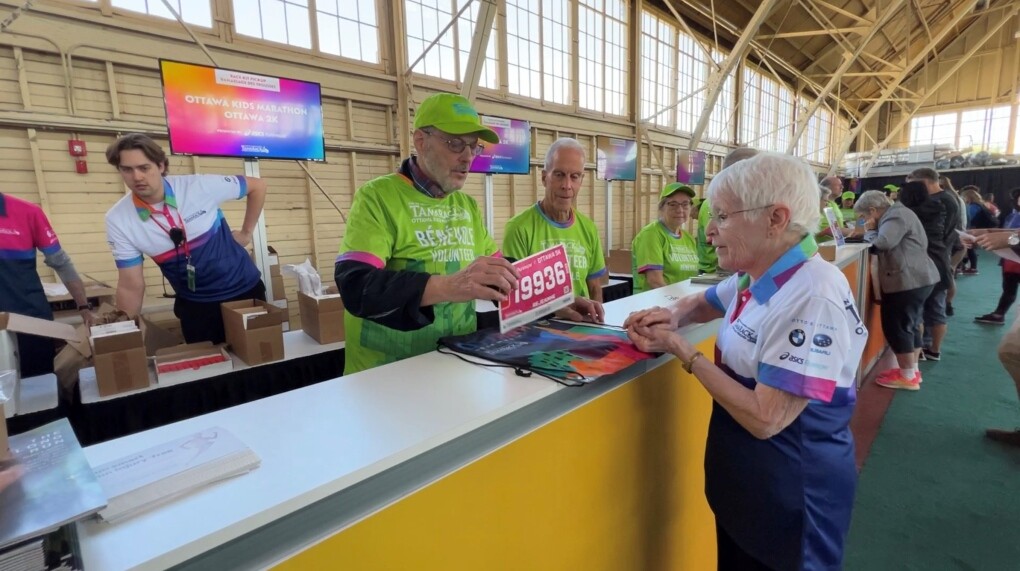
Despite entering her first-ever road race without any training, Fairhead set a new Canadian record in the event's 95-99 age category.
Now 96, Fairhead is targeting the world record for women in that age group. To do so, she'll have to shave about three minutes from last year's time.
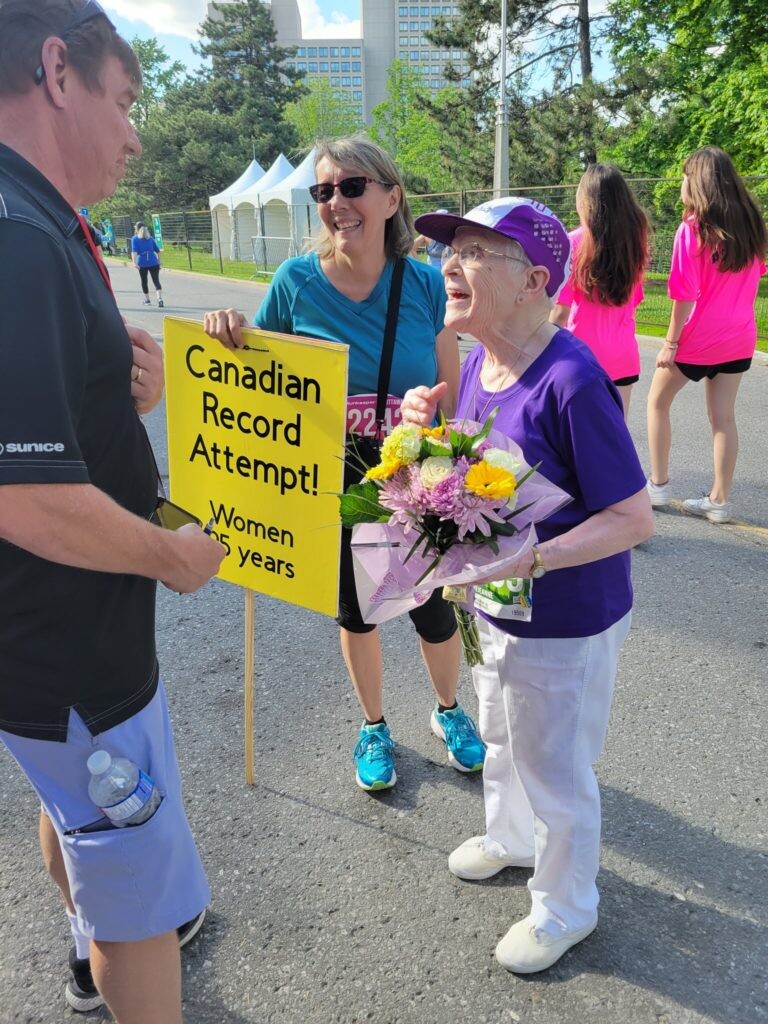
"I'll do my best," she said. "If it doesn't rain, I have a better chance."
Rain or shine, Fairhead said the record isn't her top priority.
Her main goal is to raise money for Ottawa's Perley Health long-term care home, where she's volunteered for the last 27 years. Her second is to inspire other older adults to stay active.
"A lot of people, when they get older, they don't want to do anything," she said. "If you're able — not saying if you're sick, that's different — but if you're able to, do something."
Moves 'effortlessly'
Unlike last year, when she entered the race cold, Fairhead has been training with Ottawa-based physiotherapist Richelle Weeks since February.
Weeks said she's worked with seniors in the past, but Fairhead's fitness is "far above and beyond" most of her former clients.
"She moves around like she's in her 40s or 30s," Weeks said. "She just moves around very effortlessly."
Weeks said Fairhead grew up on a farm and has stayed active her whole life while raising six children. As a result, she's managed to stay spry into her 90s, Weeks added.
Fairhead's training regimen started light and gently ramped up in difficulty. She started by walking at her projected race pace — first two kilometres at a time, then building toward the full distance.
Weeks also prescribed some simple strength training exercises, such as sit-to-stands and weighted glute bridges.
To break the record, Fairhead will have to hold a pace of just over 11 minutes per kilometre — a speed Weeks said is "bordering on breaking into a trot."
"She's kind of speed walking," Weeks said. "Now, with formalized training, I think we could definitely take those three minutes off."
The Ottawa Race Weekend 5k kicks off at 4 p.m Saturday.
By about 4:55 p.m., Fairhead will know whether she's captured the record.
"I'm anxious for it to be over," she said. "There's been so much commotion."
(05/27/2023) ⚡AMPOttawa Marathon
As one of two IAAF Gold Label marathon events in Canada, the race attracts Canada’s largest marathon field (7,000 participants) as well as a world-class contingent of elite athletes every year. Featuring the beautiful scenery of Canada’s capital, the top-notch organization of an IAAF event, the atmosphere of hundreds of thousands of spectators, and a fast course perfect both...
more...ALS Hasn’t Stopped This Woman from Running a Marathon in All 50 States
“The powers of hope and community propelled me forward and got me across every single finish line.”
Reason for Running: ALS takes away my ability to use my muscles, so I will be out there as long as possible to celebrate what my muscles can still do.
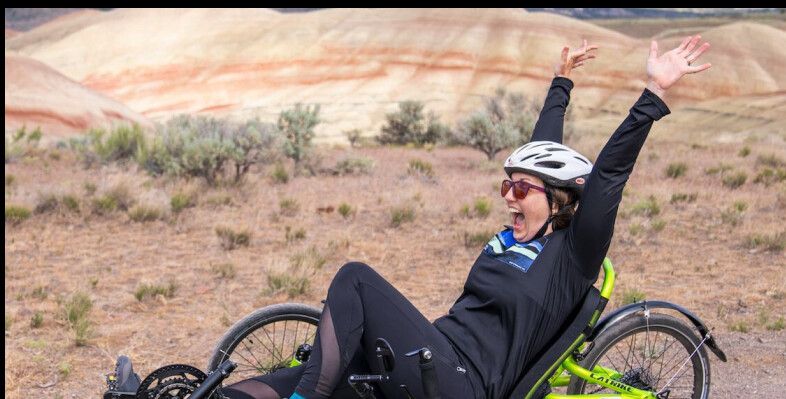
“Don’t worry,” my new husband, David, said in 2009 when I moved from Atlanta to Washington, D.C., to begin our married life. “It never snows here.” But then we were hit by three blizzards in six weeks! I got tired of being cooped up in our tiny apartment, so I found the treadmill in the basement. Fifteen minutes later, sweating and gasping for air, I felt awake and alive in a way I never had before. Add in the goal of training for a race just a bit outside my comfort zone and I was hooked.
My first race was the St. Patty’s Day 8K in downtown D.C. in 2010. I was so distracted by the scenery—running down Pennsylvania Avenue, crossing the National Mall in front of the Capitol—that I forgot to be nervous! After that, I used running as a way to explore my newly-adopted city, which was also useful for my job as an urban planner for the federal government.
In two years, I worked up to my first marathon: the 2012 Yuengling Shamrock Marathon in Virginia Beach. By then, I’d gotten into triathlons too and my first 70.3 (a.k.a. a half Ironman) was the 2013 Carolina Half at my alma mater in Davidson, North Carolina.
However, while training for the 70.3, my run and bike times were slowing down, and my hamstrings were incredibly tight. During the race, I had to walk a lot of the downhills because I felt like I was going to trip over my toes. I assumed I was overtraining or had a weird race injury, but the physical therapist I went to said, “your muscles just don’t seem strong enough for someone who just did that long of a race.” She referred me to a neurologist.
My blood tests, MRIs, spinal tap, CT, and first electromyography (EMG) all came back normal, but my symptoms kept getting worse. In just six months, I went from finishing the 70.3 to walking with a cane after falling in the middle of a D.C. intersection. My fifth neurologist re-did the EMG and diagnosed me with probable ALS in May 2014, which was confirmed in August. I was 33 at the time.
ALS is a death sentence—the average life expectancy is only two to five years. In that time, the person loses the ability to walk, talk, eat, move, and eventually breathe. The only approved drugs extend life expectancy by less than a year.
But everyone is different. My “brand” of ALS seems to respond positively to low-impact, gradual, strength building. I am convinced that swimming, Pilates, weight machines, and riding a trike have all helped me live more than nine years with this disease.
When I reached the fifth anniversary of my ALS diagnosis (a milestone that only 20 percent of people live to see), I realized that I was still waiting for the disease to catch up with me—which isn’t truly living. Living means making long-term plans, striving toward future goals, and believing that tomorrow will be better than today if you’re willing to put in the effort.
So I decided to set the craziest goal I could think of: a marathon on a trike in all 50 states. Through our foundation, the Team Drea Foundation, we decided to film a documentary to raise awareness and funds for ALS research. To date, we’ve raised $1 million!
We began filming in May 2019, and I was at state number seven on my marathon list. Our plan was to film for a year, through Alaska (state 21), and get the film out as quickly as possible so people could actually run with me in some of the remaining states. Then of course, the pandemic hit. No one knew how long races would be canceled or if I would be strong enough to continue. So we decided to keep filming.
I hate to spoil the ending of the film, but yes, I made it! Go On, Be Brave follows my journey to become the first person with ALS to do a marathon in all 50 states. The documentary turned out more beautiful and inspiring than I could have ever imagined—and I was there! The powers of hope and community propelled me forward and got me across every single finish line.
As grateful as I am for the 50-state marathon journey, I am also enjoying the pressure of being off.
Over the next year, my husband David and I will be traveling to more than 50 planned film screenings and book events for my soon-to-be published (September 2023) memoir, Hope Fights Back, with co-author, Meredith Atwood. That doesn’t leave a ton of time for training, but we hope to partner with races along the way. I love exploring new places on the trike so I will be out there as long as I have the strength.
I never knew how truly magnificent the human body was until mine started failing me. When you think “I want to take a step,” there’s instantaneous signaling through your motor neurons and your muscles respond. It’s miraculous. When you are running, take a moment to appreciate what your body can do.
Because I move frustratingly slowly through the world on a walker, freedom is the best word to describe how I feel on the trike. When I’m training or in a race, I travel at a runner’s pace and it reminds me that I am an athlete. Breathing hard, working my muscles, these are all things I should no longer be able to do with ALS, but I can! I will never take for granted what my body is still able to do.
These three tips have made my running journey a success:
1. Live your life
Time will pass either way, whatever your mood. When I was diagnosed with a terminal illness, of course I went through a grieving process. But I realized that all I could control was my attitude.
2. Remember that tomorrow is not promised
Every day that I am out there is a good day. Whenever I start getting in my head about the weather or my knees hurting, I remember that, one day, I will no longer be able to do this. So many of my friends have died or no longer have the ability to move—that snaps things back into perspective really quickly.
3. Keep putting one foot in front of the other
When that’s too much—stop, rest, reset, and find the right motivation to keep fighting. Any forward progress is enough. One hard day, hope will fight its way right into becoming belief.
Andrea’s Must-Have Gear
→ Catrike Folding Trail: I couldn’t get anywhere without my Catrike recumbent trike. It’s great for people with back problems, balance issues, or other medical issues. Even runners must have other folks in their lives who could use some exercise but can’t run. It’s like Mario Kart for adults!
→ Rabbit EZ Tights in Gibraltar Sea Mountain: I may have a teeny obsession with fun, colorful leggings and rabbit’s buttery soft EZ Tights are absolutely the softest around. Also, my husband and I have to negotiate which color of their Jogalongs we’re going to wear—otherwise we’re liable to be twinning!
→ CLIF BLOKS Energy Chews Tropical Punch: My go-to fuel during a race. Six chews times 50 marathons equals 300 of these addictive little suckers I have consumed!
(05/27/2023) ⚡AMPby Runner’s World
Candice Burt tapering off after 200 ultras in 200 days
Candice Burt completed her 200th ultramarathon in 200 days earlier this week and says her body is holding up well after the staggering feat.
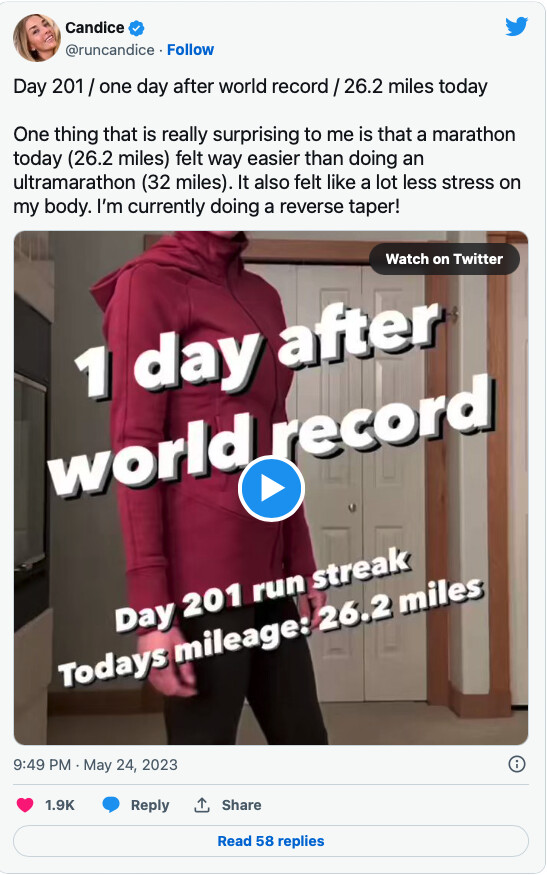
The American is set to claim the Guinness World Record once her endeavour is verified, with the previous best for consecutive days running an ultra marathon standing at 22.
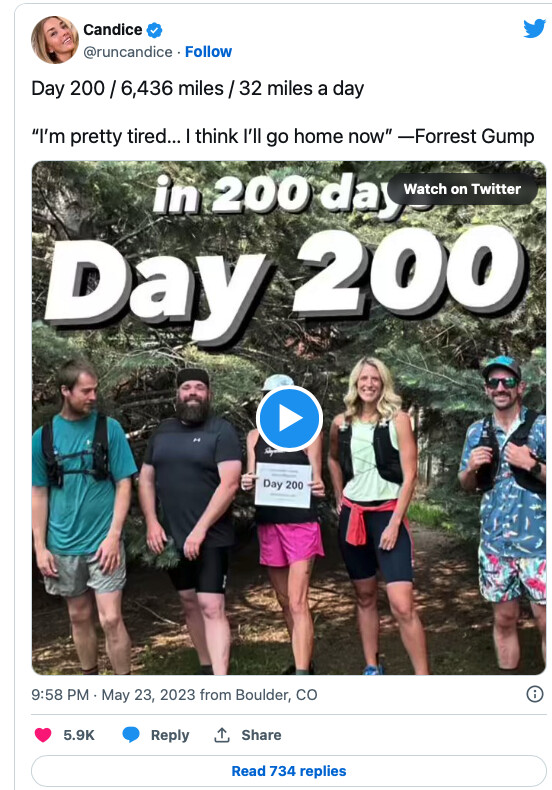
Burt, whose company Destination Trail is behind the Triple Crown of 200s – Tahoe 200, Bigfoot 200 and Moab 240 – covered over 6,400 miles after setting off on November 5, 2022.
She even ran the HURT 100 in Hawaii to continue her streak on days 71 and 72, a brutal race David Goggins has taken on four times, failing to finish in 2012.
Mental resilience
“Every morning I woke up and got it done no matter what,” she wrote on Instagram after finishing her final ultramarathon. “Thank you to the men and women who set the bar before me!”
“Records inspire us to find within ourselves courage and discipline to advance humanity
“This run has been about me trusting my body & adapting to every demand I encountered along the way. It is a personal quest, one in which I looked to satiate my curiosity about endurance, my body, running and the mind.
“That fire has only grown.
“My heart is content and I’m excited about my future adventures and spending the summer with my kids exploring Colorado.
“It’s truly incredible how good my body feels, although I’ll be the first to admit it’s changed a lot of the past 200 days. Some changes are good, some are not.”
Easy marathon
Burt is now in the process of winding down after her eye-watering schedule, but still ran a typical marathon – 26.2 miles – the day after her 200th ultra, undeterred by an “epic” thunderstorm in the latter stages.
“One thing that is really surprising to me is that a marathon today felt way easier than doing an ultramarathon,” she wrote in another Instagram post.
“I don’t have much fatigue running even 20 miles, but as I taper off the world record, part of me seems to be allowing myself to think, ‘my legs feel tried today’ instead of having to box that up and file it away.
“When you’re running a 50k a day no matter what, your feelings don’t really matter. Pain or tension in the body is used to indicate where to focus on any rehab/PT rather than to feel sorry for myself or shorten the run.
“This allowed me to grow, adapt and achieve a higher level, but it came at some cost.
“What’s the cost? There’s a bit of a disconnect between my feelings and sensations and the run. Those sensations — at least the pain or immobility ones—are saved for after the run and only for the context of treatment. My feelings, when negative, were filed away completely because they weren’t needed or helpful.
“I think learning to do this is very helpful in many endeavours. But to live in the world outside the runs I sometimes need to access these things more readily. Just an observation – one that I hope to delve into a bit more at some point.”
Flexibility decrease
Burt reiterated that her physical condition is remarkably solid, aside from some understandable stiffness following her relentless running effort.
“Let’s talk about my body: physically I feel great. There are times I’m not sure if its as great as I think or if I just got used to a high level of tension. I will get up and I can tell my muscles are sharp and ready.
“My flexibility has been significantly reduced in favor of stability and propulsion. This serves me well when running, but can make other daily tasks harder.
“For example, I cannot sit on my heels with my toes under me stretching the bottom of my feet. My feet simply don’t stretch like that anymore.”
Burt is eyeing more record-breaking runs in the future, but for now, she is enjoying a return to normality and spending time at home with her children.
(05/27/2023) ⚡AMP
Kara Goucher’s Book Offers Rare Insight Into Elite Athlete Contracts
Confidentiality clauses usually stop runners from talking about their endorsement deals.Kara Goucher’s memoir about her career in professional running, The Longest Race, alleges shocking behavior by her longtime coach, Alberto Salazar, and how she overcame it. But a subplot throughout the book is how much money she was earning in the sport along the way.
Goucher is open about her contract with Nike and appearance fees at races, including the New York City Marathon, the Boston Marathon, and the Great North Run in the U.K. (Nike did not respond to an email from Runner’s World seeking comment.) Even though the deals are from 10 to 20 years ago, they provide an interesting look at the business side of professional running. It’s a rare peek, too, because sponsor contracts are bound by confidentiality clauses and, in many cases, those clauses extend beyond the term of the contract.

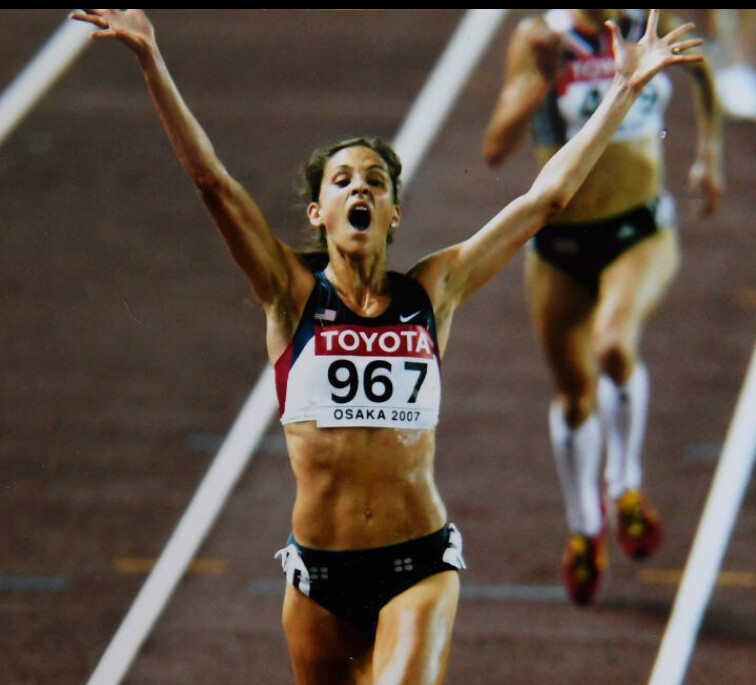
Goucher’s did, but she decided to reveal the information anyway—to be helpful to other athletes. “I just felt like it was very important to have those numbers in there,” she said in a phone call with Runner’s World. “How do you know what to ask for if you have no idea what anyone else is getting paid?” Here’s what we learned about Goucher’s pay and that of her husband, Adam Goucher, from the book:
In 2000, Adam Goucher was making a base payment of $50,000 from Fila, his first sponsor. In his first year, he ran so well that he earned $185,000 with bonuses. Goucher writes that the pay was a “welcome windfall that helped him pay off student loans.”
In 2001, Kara Goucher signed a four-year deal with Nike for $35,000 per year. This was her first professional contract after she graduated from the University of Colorado.
In 2003, Adam Goucher signed with Nike with a base pay of $90,000 per year. The Longest Race: Inside the Secret World of Abuse, Doping, and Deception on Nike's Elite Running TeamIn the fall of 2007, she ran the Great North Run, a half marathon in Newcastle, England. The race director paid her an appearance fee of $13,000 and made a deal with Goucher’s agent at the time, Peter Stubbs, to pay her $30,000 if she won. The money was “not far off the annual salary I had lived on for years,” Goucher wrote. She won the race.
In February 2008, Goucher signed a new Nike deal that paid her $325,000 per year for four years, with an option for Nike to extend to a fifth year. The contract included performance bonuses ranging from $10,000 to $500,000 for an Olympic gold medal. There were also reductions, which could cut her pay. She had to race 10 USATF-sanctioned events per year, and if she ended the year ranked lower than third in her event in the U.S. or out of the top 10 in the world, Nike could dock her pay.
Goucher told Runner’s World that, for her second shoe deal, she asked her agent to accept a commission of 8 percent for each year of the deal. The industry standard is 15 percent. He agreed. She continued to pay him 15 percent on her appearance fees and prize money. She also made sure that she was paid directly by Nike and then she paid her agent. (In most cases these days, the shoe company pays the agent, who then pays the athletes, because it’s less paperwork for the shoe company, having to deal with individual athletes.)
In November 2008, Goucher made her marathon debut at the New York City Marathon. She earned an appearance fee of $175,000. Nike also paid her bonuses paid on based on her place and time, but Goucher didn’t disclose those. She wrote, “One good marathon and I could easily walk away with more than my yearly contract salary.” In April 2009, Goucher ran the Boston Marathon, which, at the time, traditionally paid less in appearance fees to athletes than New York. (It is also the only major marathon in the U.S. in the spring.) Her appearance fee was $80,000, but when she learned another American, a male runner, was making $85,000, she asked the BAA to match that. Race organizers agreed.
In early 2010, Goucher learned she was pregnant with her son, Colt. Salazar confirmed with Nike executive John Capriotti on Goucher’s behalf that Goucher wouldn’t suffer a reduction in her pay as long as she remained “relevant,” she wrote. Her first of four quarterly payments from Nike arrived on time in January, as did her second in April. But in July, her accountant told her that her payment hadn’t arrived. Nor did her October payment.
This set off a lengthy battle between Goucher and Nike over money during her pregnancy. Ultimately, Nike docked her pay for six months and extended her contract to the end of 2013.
At the end of 2010, Adam Goucher’s contract with Nike ended.
In 2011, USA Track & Field (USATF) said it would be dropping the Gouchers’ health insurance, because her marathon ranking had dropped while she was pregnant. She appealed the decision, and the U.S. Olympic Committee stepped in and reinstated the health insurance. This rule has subsequently been changed—pregnant athletes can keep their health insurance—and today’s runners laud that change.
At the end of September 2011, Goucher left the Nike Oregon Project. She remained under contract with Nike and stayed in Portland, Oregon. Jerry Schumacher coached her, and she trained with Shalane Flanagan.
At the end of 2013, Goucher scrambled to race 10 times so Nike wouldn’t suspend her pay again. She ran a turkey trot to fulfill her obligations (and won a pie). Her contract with Nike ended at the end of the year, and she and Adam sold their house in Portland and moved to Boulder, Colorado.
In 2014, Goucher entertained contract offers from other companies, although Nike still had the option to match any offers. Saucony offered her $1 million total over 5 years, with bonuses and no reductions. Ultimately, she chose to sign with women’s clothing brand Oiselle for $20,000 per year, and a 2 percent stake in the company. She signed a separate deal for footwear with Skechers.
Today, Goucher encourages athletes to speak up and not be afraid to rock the boat, especially those who are lower-paid. She faults the secrecy around pay in track and field with creating difficult situations. It’s required to agree to the confidentiality clause in contracts in order to secure the deal, she said, and in some cases, that gives cover to companies that underpay talented athletes. The confidentiality clause “only harms the athlete and protects the brand,” she said. “Because then they can continue to pay you the least amount possible.”
Agent Hawi Keflezighi, who has never worked with Goucher, agreed with her assessment. “I think there are a lot of very bad contracts out there that footwear brands would probably be embarrassed to admit to,” he said. “There are some really bad deals out there that would probably create a backlash.”
(05/27/2023) ⚡AMP
by Runner’s World
Canfranc to host 2025 World Mountain and Trail Running Championships
The third edition of the World Mountain and Trail Running Championships (WMTRC) will take place in Canfranc-Pirineos, Spain, between 25-28 September 2025.
The awarding of the event to Canfranc in the Pyrenees follows a successful bid by the Government of Aragon, the Canfranc Town Council, the Huesca Provincial Council, the Higher Sports Council and the Royal Spanish Athletics Federation (RFEA) to event partners the International Association of Ultrarunners (IAU), the International Trail Running Association (ITRA) and the World Mountain Running Association (WMRA), alongside World Athletics.
As well as the four-day elite race programme, the event will include a summer-long cultural and leisure festival to promote the Pyrenees Mountain Range.
Around 1700 athletes from 70 countries are expected to meet in September 2025 in Canfranc-Pirineos, which takes over from Innsbruck in Austria – host of the next edition of the championships, taking place this year between 6-10 June.
The race programme will feature uphill mountain running, classic up and down mountain running, short trail, long trail and U20 classic up and down mountain events.
“On behalf of the LOC, we are thrilled to be hosting the 2025 World Mountain and Trail Running Championships in our country and look forward to welcoming the best mountain and trail runners from all corners of the globe,” said RFEA President Raul Chapado.
“As a team, we express our deep satisfaction and appreciation to World Athletics and its partners WMRA, IAU and ITRA for choosing our beautiful region of Canfranc and the stunning Aragonese Pyrenees as the venue for this world-class event.
“The championships offer a unique opportunity for fans to witness the best mountain and trail runners from around the world compete in an unparalleled natural environment. We are excited to collaborate with the public administrations, sponsors and volunteers to leave a permanent legacy and create an unforgettable experience for all participants.”
The Aragonese proposal was backed by great experience in the organisation of sporting events such as the Canfranc-Canfranc, an annual event that features two Gold level Valsir Mountain Running World Cup races.
Canfranc-Pirineos offers a superb sporting environment, which will allow each athlete to perform to the best of their ability and create a complete competitive experience for athletes, teams, federations and international associations. That is proven by the list of world champions who have run and won at the Canfranc-Canfranc: from Kenya’s Joyce Muthoni Njeru to USA’s Grayson Murphy and Britain’s Charlotte Morgan, as well as Spain’s Oihana Kortazar, Manuel Merillas, Luis Alberto Hernando and Daniel Osanz.
In 2024, the Canfranc-Canfranc will host the World Masters Championships, before the region welcomes athletes for the World Mountain and Trail Running Championships in 2025.
Events due to take place as part of the associated festival include a series of awareness days, with emphasis on respectful use of the environment, and a natural running congress on the technical history and future convergence between the disciplines of athletics in nature: cross country, mountain running and trail running.
“It is our great pleasure to see the joint initiative to organise the World Mountain and Trail Running Championships continue its great momentum and we are excited that the third WMTRC will take place in Canfranc, Spain, in 2025 in the beautiful Pyrenees – a paradise for mountain and trail running,” said ITRA President Janet Ng, IAU President Nadeem Khan and WMRA President Tomo Sarf in a joint statement.
“It will be the second time that the championships have been held in Europe. The initial event took place in Chiang Mai, Thailand, and was a huge success. We are confident that the second edition in Innsbruck and Stubai will build on that in the coming days and that the third edition in Canfranc will reach even greater heights.
“We would like to thank the bidding committee, the Spanish athletics federation and World Athletics for all the cooperation and support during the application process to host the championships. The bidding committee worked extremely hard to prepare a compelling and impressive bid and we are all very much looking forward to being in Canfranc with the world’s best athletes in 2025.”
Innsbruck-Stubai entries confirmed
A total of 1122 athletes from 67 member federations are entered to compete in the next edition of the World Mountain and Trail Running Championships, taking place in Innsbruck-Stubai in Austria between 6-10 June.
That number includes 506 athletes entered into 574 women’s events and 616 athletes entered into 710 men’s events, with the programme featuring uphill mountain running, classic up and down mountain running, short trail and long trail. U20 men and women will compete in classic up and down mountain running.
USA’s Allie McLaughlin and Adam Peterman, Kenya’s Patrick Kipngeno, Norway’s Stian Angermund, Romania’s Denisa Dragomir and Blandine L'Hirondel of France were among the winners at the inaugural World Mountain and Trail Running Championships, held in Chiang Mai, Thailand, in November.
(05/27/2023) ⚡AMPby World Athletics
Four tips for clearing mental hurdles on tough trail runs
A tough trail run can be even more of a grind on the brain than it is on the body. While running offers a mental challenge whether you’re doing intervals on the track or sweating bullets on a treadmill, hitting the trail can present unique psychological hurdles, particularly for those who are new to this kind of running. Consider these tips for staying level-headed on uneven terrain during your next trail run.
1.- Build confidence through preparedness

Getting in the right frame of mind for a challenging trail run starts well before you take your first steps. Reduce anxiety and doubt by going into your run confident and prepared. For trail runners, confidence begins with having the information you need to navigate your route safely. Familiarizing yourself with a section of the trail beforehand by checking an online map or following a well-worn route that others have already laid out using an app, such as Strava, can spare you from uncertainty and mental stress on your run.
For those runners who embrace the trails as a chance to explore and lose themselves in the woods, having a map—digital or otherwise—handy in the event of a very wrong turn can strike a good compromise between being adventurous and being prepared. If planning a run at a park or conservation area, it never hurts to check the site’s website before heading out for any trail closures or conditions that might otherwise throw you for a loop.
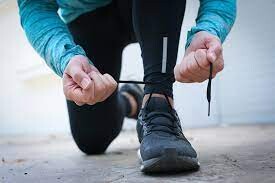
2.- Find a partner
Partnering up with a runner familiar with the area can help you conserve your mental strength in several ways. In addition to offering added peace of mind that you’ll be able to navigate the trails safely—and have someone there to help in case of a serious injury or other medical emergency—an experienced partner can offer insights that simply can’t be gleaned from a map. Getting a heads-up about easy-to-overlook tree roots, patches of poison ivy and other hidden hazards of the trail can keep your creeping uncertainty at bay. More than that, a buddy who knows the area can offer tips to maximize your effort and make your outing more fun. These might include sharing the most strategic areas for walking, upping the pace or taking in nutrition, as well as points of interest like the best places for snapping a photo or spotting wildlife. Those benefits aside, just engaging in conversation can help a tough trail run seem less taxing,
3.- Ask yourself helpful questions
Self-talk can promote a positive mindset on challenging runs, but this type of tool often isn’t used to its potential. Some runners may find comfort in repeating mantras like “I’m stronger than I think” or “pain is temporary,” while others may find the technique monotonous and mentally draining. Instead of limiting your self-talk to statements, try switching to questions. A helpful question to ask yourself when struggling on your run is: “What’s the easiest thing I can do right now that can help me feel more relaxed while staying at the same effort?” This kind of question not only asserts your ability to improve how you perceive your run, but also invites you to scan your body and see where you might be holding stress. Are you clenching your fists? Could your shoulders be looser, or your breathing just a bit slower or deeper? Exploring these questions can do wonders to shift your mental focus from discomfort to ease.
4.- Let your environment work for you
Similar to the way asking yourself the right questions can promote greater ease through mindfulness, being aware of your immediate environment can help keep you grounded mentally. One of the appeals of trail running is the sensory experience it can provide, not just through sights but through the sounds, smells and even the feel of your surroundings. Making a conscious effort to pay attention to all your senses on your run can help you cut through negative mental chatter and make your experience richer and more rewarding.
(05/26/2023) ⚡AMP
by Paul Baswick
Deputy Governor of Edo State, Comrade Philip Shaibu flags off 9th Okpekpe 10km road race
Dare Esan, the media and activation director for the historic, first 10km road race in Nigeria says Shaibu will play a dual role at the race.
“His Excellency the Deputy Governor of Edo State, Comrade Philip Shaibu will participate in the celebrity race,’ said Esan.

Shaibu was presented with his bib in a colourful ceremony on Wednesday at an impressive ceremony in Benin after he registered via online for the race.
“The deputy governor filled his form via the online platform like all others because he is still an active sportsman who has taken Edo state sports to greater heights.

“All eyes will be on the 53 years old to see if he will break his lifetime best in the 10km event,” added Esan
Meanwhile, Dan Oil and Petrochemicals have joined the list of corporate partners for the race.
One of the leading indigenous oil and gas companies, Dan Oil has always been associated with the race.
“We are delighted that one of the leading indigenous oil and gas companies in Nigeria whose services are tailored to meet and deliver the energy demands needed to move equipment and machinery needed to drive the Nigerian economy is partnering with us again to deliver another world class event,’ said Esan.
The media and activation director is thrilled with the way the race has been receiving support for corporate Nigeria and believes getting the Platinum label the Deputy Governor spoke about on Wednesday will be released sooner rather than later.
“We are the first road race in Nigeria to get a World Athletics label status and this was in 2015. We are also the first to have its race course measured and the first 10km race in Nigeria to be granted a gold label status.’
The ninth edition of the race will be held this Saturday in Okpekpe, Etsako East Local Government area of Edo state.
(05/26/2023) ⚡AMPby Dare Kuti
Okpekpe Road Race 10km
The Okpekpe Road Race invites world-class runners from around the world in a tradition tointermix local recreational and up and coming runnerswith the best of the best. Invitation extended to all CAA Member Federations, all military and para-military have sent in entries. Okpekpe is more than just a collection of fertilefarmlands or a window into the past, it is a...
more...Kiptoo, Masai seeking big performances at Bolder Boulder
It's time to be bold for NAZ Elite.
The running team is sending Wesley Kiptoo and Alex Masai to the BOLDERBoulder 10K road race in Colorado set for Monday with the hopes of making some noise on the men's side of the prestigious event after producing some solid outings on the women's side the last few years.
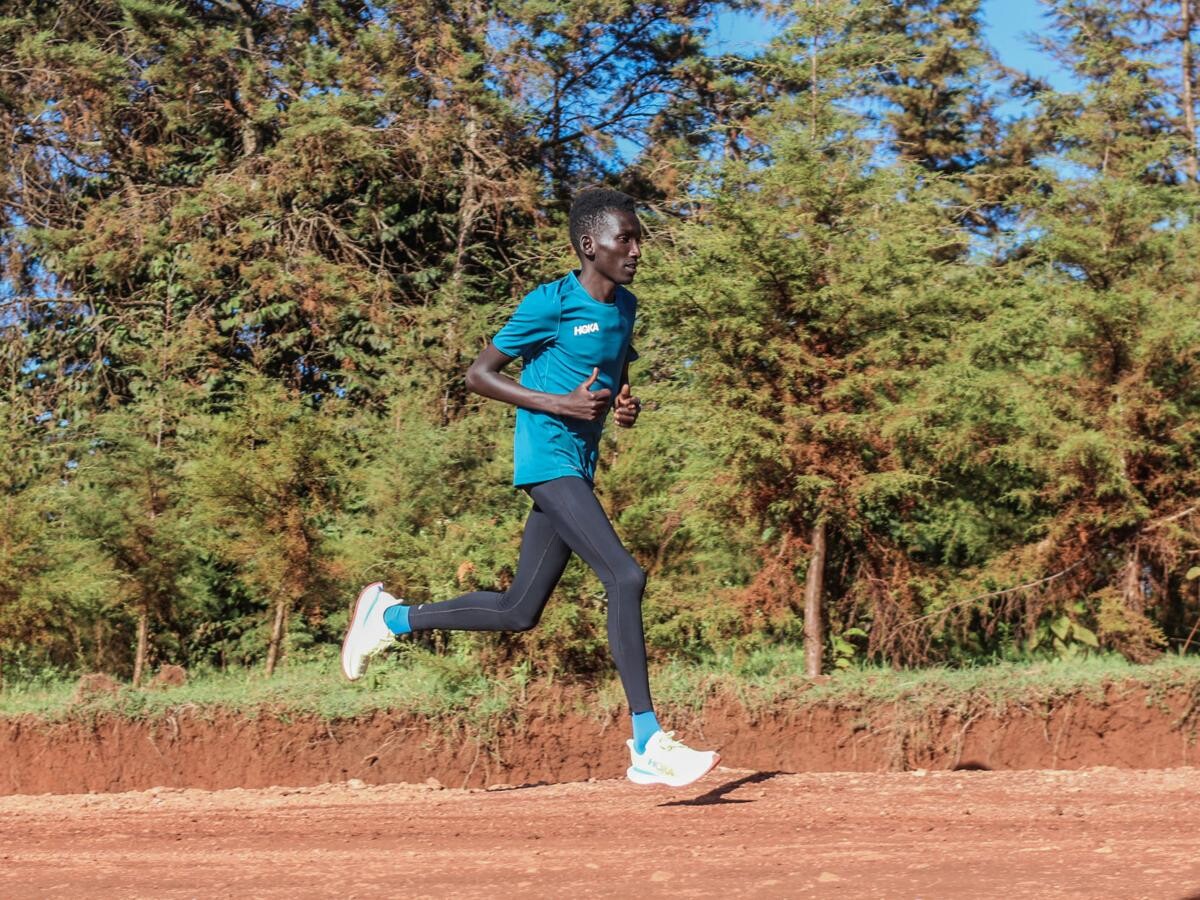
Last year's BOLDERBoulder champion, in fact, was NAZ Elite's Aliphine Tuliamuk, who finished in third place at the 2019 edition of the race and was runner-up in 2018.
“We would love to win on the men’s side, but it’s really, really hard," NAZ Elite Executive Director Ben Rosario said Wednesday.
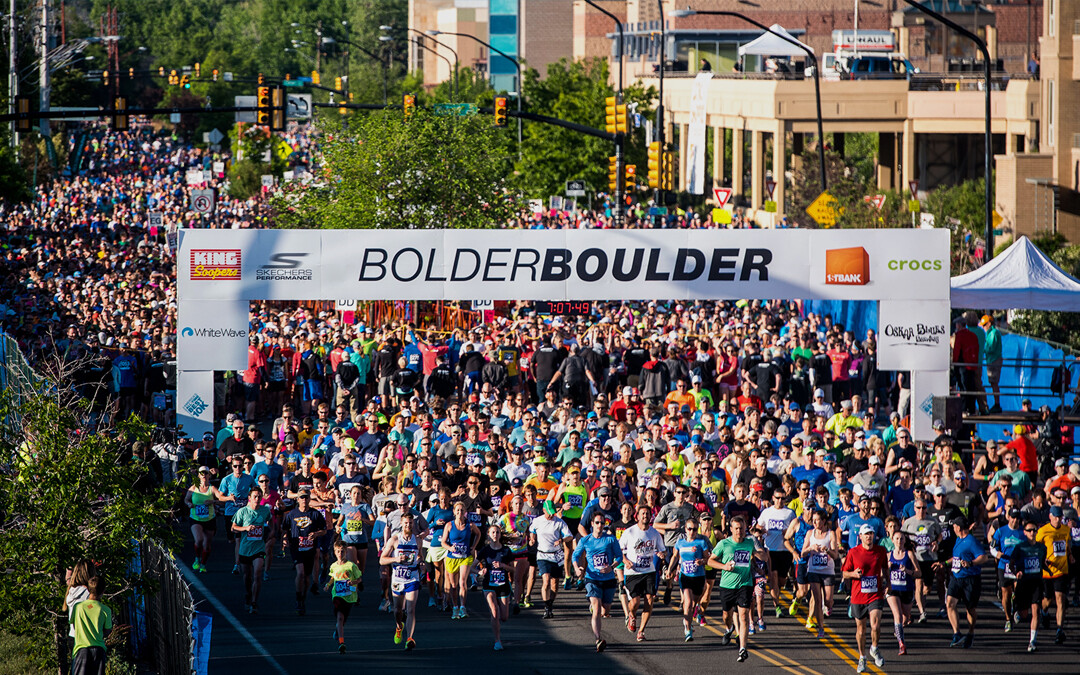
Only former member Scott Fauble has produced a top-10 finish in the men's race for NAZ Elite, taking sixth in 29:54 in 2016. This will be the eighth year that NAZ Elite has sent at least one athlete to the event since the team started racing in 2014.
The nature of the team-focused event typically leads to a loaded pack running up front, according to Rosario.
“When you have got three athletes from Kenya, three from Ethiopia, three from the U.S., et cetera, et cetera -- and they are all distance-running powerhouses -- it’s going to be hard to win the race because all these teams have somebody who could win.”
Rosario thinks that altitude also has something to do with how athletes perform at the race, which starts at 5,275 feet of elevation, peaks at 5,377 and ends at around 5,360 feet.
Fauble was born at altitude in Colorado, as was Tuliamuk, who is a Kenyan-born American. Both Kiptoo and Masai were born and raised in Kenya at an elevation higher than Flagstaff.
“It’s not a guarantee that they will run well, but I think they have a better chance to run well and race well at altitude than an athlete who was born and raised at sea level," Rosario said.
And both Kiptoo and Masai are in shape and coming off good performances.
Kiptoo won his last time out, repeating as the champion at the Pittsburgh Half Marathon on May 7. Meanwhile, Masai placed second in a 10,000-meter track event earlier this month and was fourth at the BAA 5K road race in mid-April with a time of 13:27.
“He’s look quite good in training over the last month," Rosario said of Masai, "and I would just say that he’s ready to go.”
Kiptoo normally draws energy from races that feature such strong talent up front, as the second-year pro likes competing with athletes who can produce the sort of times and results he hopes as his career unfolds.
“He’s certainly excited about the race. He’s shown so far in his young career that he enjoys these big road races, and when he is fresh and ready to go, he runs very, very well," Rosario said.
Before Monday's BOLDERBoulder, NAZ Elite will have two athletes in Krissy Gear and Katie Wasserman at Friday's USATF Distance Classic 1500m on the UCLA campus.
Rosario said there will be 17 athletes packed on the track for the "regular-season" race that will provided a chance for Wasserman to get some racing rust off her legs after a pause in racing due to illness and Gear to keep the momentum going and experience building.
Wasserman has not raced since mid-February at the USATF Indoor Championships, where she produced a 12th-place result in the 3000m.
(05/26/2023) ⚡AMPby Mike Hartman
BOLDER BOULDER
In 1979 we dreamt of attracting a few hundred of our friends to race though the streets of Boulder, Colorado to celebrate Memorial Day with our families. Fast forward almost 40 years and the Bolder BOULDER has grown to become one of the largest and most highly acclaimed 10K’s in the world. Almost 1.2 million runners, joggers, walkers and spectators...
more...Florence Jebet Kiplagat is set to run in Gold Coast after four year break
Double Berlin Marathon champion Florence Jebet Kiplagat returns to action in July after four years out of competition due to an injury and prolonged illness.
The former World Half Marathon record holder will compete at the Gold Coast Marathon on July 2 and she can't wait.
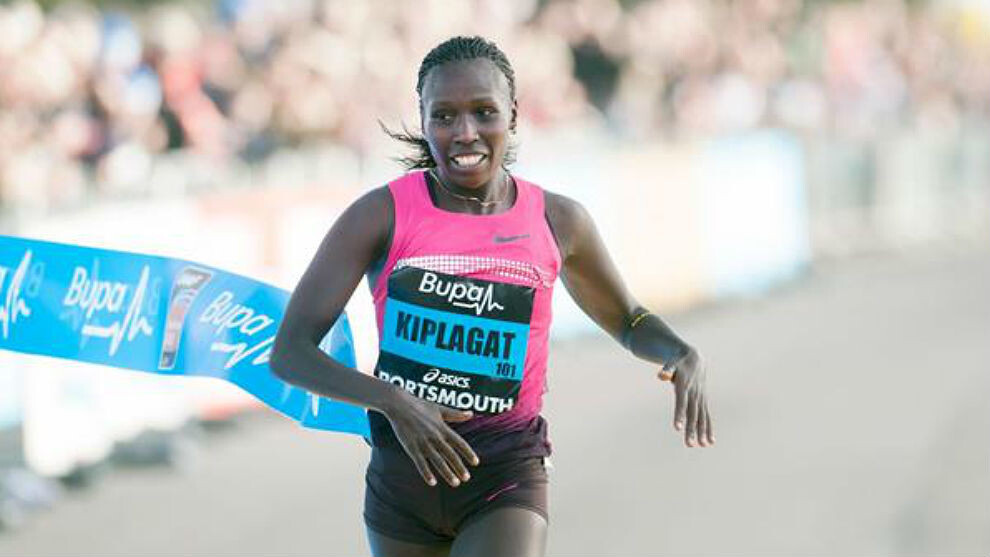
“It has been long since I completed and my return into action after four years in the cold is a sign that God loves me. I want my return to be better than before,” said Kiplagat.
Kiplagat was initially entered to compete at the Stockholm Marathon on June 2 but changed her plans after failing to secure vital travel documents on time.
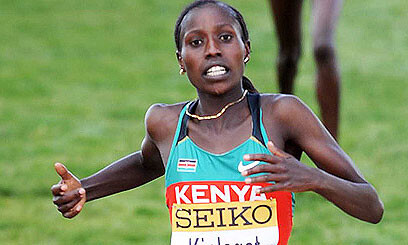
She will be hoping to lower the course record currently held by Lindsay Flanagan at 2:24.43. Kiplagat’s best time stands at 2:19.44 set in 2011 at the Berlin Marathon on her second victory.
“I entered the Stockholm Marathon late and failed to secure a visa. That made me change my mind to compete at the Gold Coast Marathon in Australia,” she said.
The Iten-based runner had three incidents that kept her from running. First, the nagging injury, followed by the coronavirus then sickness. She says after the injury in 2019, she was to return to action but the world was hit by the Coronavirus pandemic. "When the pandemic was over and planning to return, I fell sick," she explained.
The mother of two has sweet memories of her World Half Marathon record feat, which she lowered twice; posting a new high of 1:05:12 in 2014 and 1:05:09 in 2015 during the Barcelona Half Marathon.
Under the tutelage of Italian marathon coach Renato Canova, Kiplagat says she is on top of her game and optimistic her performance in Gold Coast will be good despite the long period on the sidelines.
“Right now, I am coaching myself because my coach is currently unwell. However, he has been sending me a training programme, which I follow religiously in a bid to make a successful return," she says.
She is well remembered to have ended Kenya’s 16-year-old gold drought at the 2009 World Cross-Country Championships in Amman, Jordan before winning the World Half Marathon title in Nanning, China in 2011. Kiplagat is a former footballer, who played at the national school games.
(05/26/2023) ⚡AMPby Emmanuel Sabuni
Gold Coast Airport Marathon
The Gold Coast Airport Marathon is held annually in one of the most popular holiday destinations in the world. It is Australia’s premier road race and was the first marathon in the country to hold an International Association of Athletics Federations (IAAF) Road Race Gold Label. The event is held on the first weekend of July and attracts more than...
more...Four reasons all runners should consider racing an 800m
Alright marathoners, listen up. The 800m is widely regarded as one of the toughest distances to race. It demands a combination of speed, endurance and mental toughness. Without both physical and mental strength, it can be an incredibly challenging experience. While many runners lean towards longer distances like marathons or half marathons, the 800m offers a valuable learning experience that can benefit athletes from various backgrounds, from sprinters to distance runners.
Here are four reasons why every runner should consider racing an 800m.
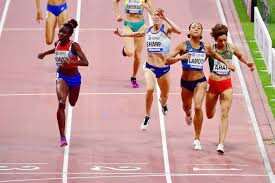
1.- Speed development
The 800m is a unique distance that combines speed and endurance. It requires a perfect balance of raw speed, aerobic capacity and mental fortitude. By incorporating 800m training into your regimen, you will quickly develop both your speed and endurance. The race will also challenge your body to perform at a high intensity for a relatively short duration, tapping into your VO2 max, which can benefit your speed over longer distances.
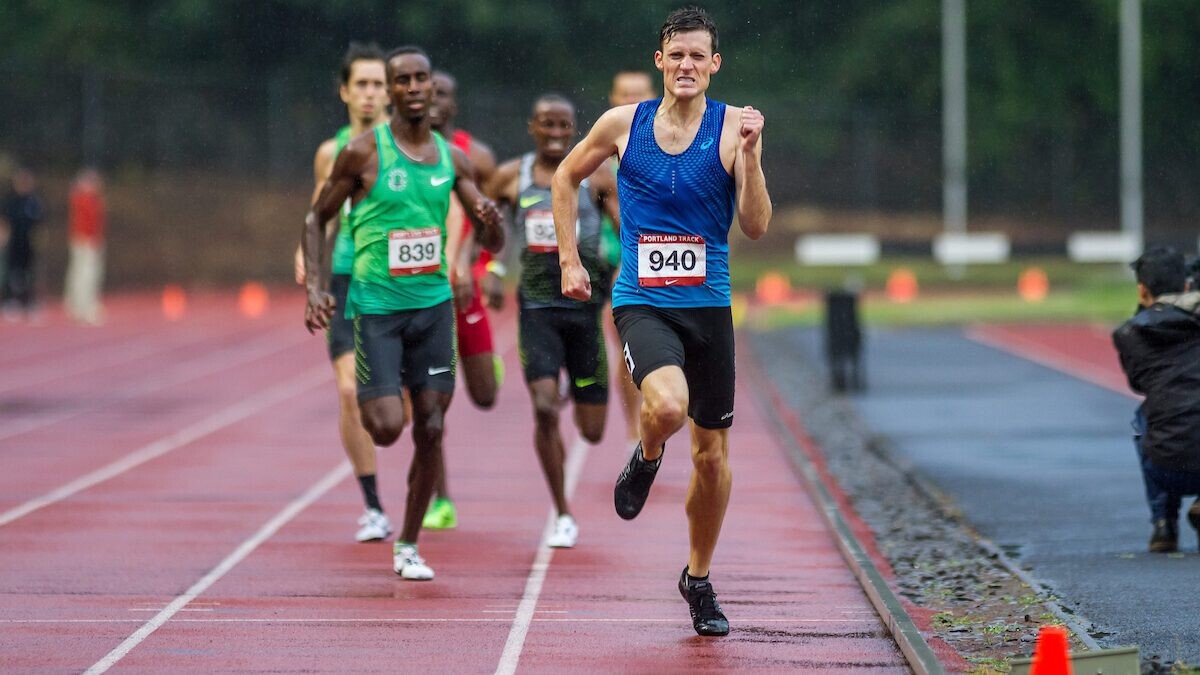
2.- Improve your mental toughness
The 800m is not only a test of your physical strength but also a great way to improve your mental resilience. The race requires strategic decision-making and split-second adjustments, from pacing strategies to positioning on the track. The distance demands mental toughness and adaptability, especially when your body is tired. By racing the 800m, runners can develop a resilient mindset, sharpen their race instincts, and ultimately learn to embrace extreme discomfort.
3.- It’s versatile
By adding the 800m to your race repertoire, you increase your versatility as an athlete. Engaging in different race distances is essential for becoming a well-rounded runner, and the demands of the 800m can complement your training for longer distances, such as the marathon or half-marathon. The anaerobic conditioning and muscle movements required in the 800m can improve your overall running economy and enhance your efficiency to sustain faster speeds for longer.
4.- Untapped potential
Racing an 800m can often uncover hidden potential and help you push your goals or boundaries further as a runner. Even if you don’t think you’re good at it, the mental side of the 800m can lead to surprising breakthroughs in performance. Who knows? You may discover you have untapped speed and determination that can positively impact your upcoming marathon training.
(05/25/2023) ⚡AMPby Running Magazine
Paul Poce, legendary Canadian running coach, dies at 98
On Monday, May 22, the Toronto and Canadian running community lost a historic coach with the passing of Paul Poce. In 1954, Poce founded the well-known Toronto Olympic Club, which still stands as the city’s oldest running club.
Born in Toronto in 1924, Poce began running after participating in boxing during his teens, believing that running was a better sport. His athletic career started under legendary coach Lloyd Percival, who coached him while training with the Toronto Red Devils.
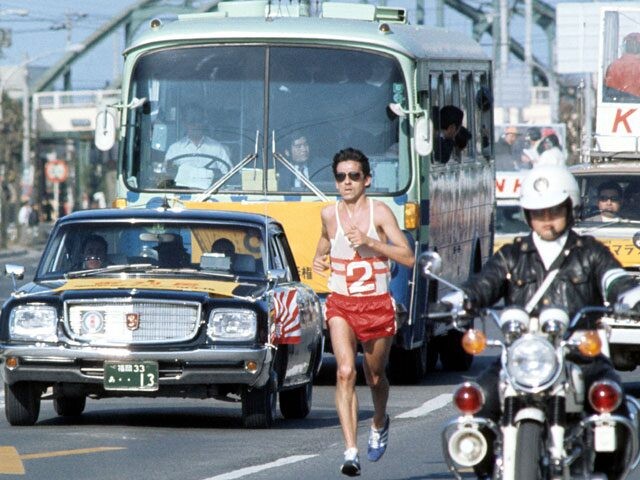
Poce went on to coach 13 Olympians, including former Canadian marathon record holder Jerome Drayton; and held the role of head athletics coach for Team Canada at the 1992 Olympic Games in Barcelona and distance coach for the 1972 Olympic Games in Munich and the 1976 Olympic Games in Montreal.
Under Poce, Drayton set a Canadian marathon record of 2:10:09 in 1975, which stood for over 40 years until Cam Levins broke the record in 2018. He also set a world record in the 1970s in the 10-mile race and was sixth in the marathon at the 1976 Olympics. Before Drayton’s accolades, Poce recruited him into distance running and the Toronto Olympic Club.
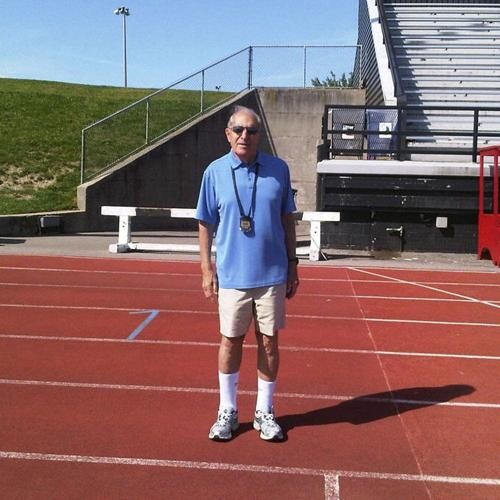
Poce coached with Toronto Olympic Club into his 90s and was inducted into the Canadian Road Runners Hall of Fame in 1991 and the Canadian Olympic Hall of Fame in 2010.
“Poce had a long and full life, living into his late nineties, and was coaching and mentoring right up until the end. I’m sure many will agree that he was universally respected and admired within our Canadian Running community and beyond. He was loved by so many, as he gave so much to everyone within his scope of influence.” – Harvey Mitro (sub-four-minute miler, former national team runner and author).
“I was deeply saddened to learn of the passing of Paul Poce, not only a former coach of mine, but also a true legend in the world of coaching. His remarkable 60-year tenure with the Toronto Olympic Club is a testament to his unwavering dedication and passion for the sport. I have no doubt that his impact will endure through the countless athletes whose lives he has influenced, both on and off the field of play. Paul’s commitment to his craft, along with his ability to inspire and mentor athletes, will forever be remembered. He was a truly exceptional coach and an extraordinary individual. His legacy will continue to shine brightly, serving as a guiding light for generations to come.” – Paul Osland (Athletics Ontario CEO, former national team member and Olympian)
“In a testament to how good a Paul was, when I joined the TOC junior program to coach in 1975, TOC runners owned all of the senior men’s Canadian records from the 800m to the marathon. Although I was never formally coached by Paul, he was omnipresent if not physically, but in spirit. When you were in his presence, he always was there with a quick pick-you-up quip after a bad race and just as quick with the praise when a good race was run or a PB set. Thank you Paul for all you did for running and Track & Field in Canada. RIP!” – Jerry Kooymans (Canadian Masters Athletics Hall of Fame Member and Former Toronto Olympic Club coach).
(05/25/2023) ⚡AMPby Marley Dickinson
Boston champions and U.S. record holders return for 2023 B.A.A. 10K
The Boston Athletic Association (B.A.A.) has announced professional fields for the 2023 B.A.A. 10K presented by Brigham and Women’s Hospital, to be run on Sunday, June 25 through Back Bay. Among the challengers set to compete are Boston Marathon champions Hellen Obiri (2023) and Benson Kipruto (2021), defending B.A.A. 10K winner Leonard Korir, as well as national record holder Emily Sisson. Complete field lists can be found below.
The B.A.A. 10K presented by Brigham and Women’s Hospital will be the second event of the 2023 B.A.A. Distance Medley, a year-long series featuring the B.A.A. 5K (April), B.A.A. 10K (June), and B.A.A. Half Marathon (November). Registration remains open with limited spots remaining.
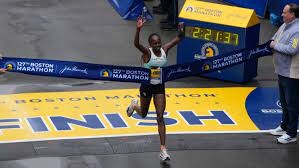
“Many fan favorites and global stars return to Boston for this year’s B.A.A. 10K, including Boston Marathoners, American record holders, Olympians and Paralympians,” said Mary Kate Shea, Director of Professional Athletes for the B.A.A. “The B.A.A. 10K course is flat, fast, and –most importantly—fun for our top contenders. We look forward to kicking off summer with a memorable competition on June 25.”
Obiri, a two-time Olympic silver medalist, won April’s Boston Marathon in her Boston debut, and will return to the roads hoping to extend her winning streak. Her 30:15 personal best at 10K is fourth fastest among the field, only trailing Sheila Chepkirui (Kenya, 29:46), Vicoty Chepngeno (Kenya, 30:14), and Joan Chelimo Melly (Romania, 30:14). Chelimo Melly won the B.A.A. 10K in 2017, while Chepkirui placed fourth at last month’s TCS London Marathon.
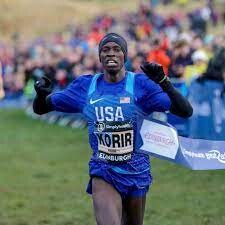
Korir, the reigning B.A.A. 10K champion, is fresh off a win at the USA 25K National Championships on May 13, and looks to become the fourth man to win back-to-back B.A.A. 10Ks. Sisson, the current American record holder in the marathon and half marathon also will return, joined by Olympic Marathon bronze medalist and former Boston resident Molly Seidel.
Among the international field squaring off are Boston Marathon winners Kipruto (2021), Edna Kiplagat (2017 and 2021), and Caroline Rotich (2015), all of Kenya. Gabriel Geay (Tanzania) will return after a runner-up finish at April’s Boston Marathon, and previously won the B.A.A. 10K in 2018.
Geoffrey Koech, winner of last year’s B.A.A. Half Marathon, will compete, as will Callum Hawkins of Great Britain, twice the fourth-place finisher at the World Championships marathon, plus decorated road racers Edward Cheserek (Kenya), a 17-time NCAA champion, and Zouhair Talbi (Morocco), most recently fifth at the Boston Marathon. From Team B.A.A. are Matt McDonald, Paul Hogan, Jonas Hampton, and Eric Hamer.
Mary Ngugi of Kenya, a two-time B.A.A. 10K winner and two-time Boston Marathon podium finisher, will aim for title number three, as fellow Kenyan Sharon Lokedi, the 2022 TCS New York City Marathon champion, looks for her first B.A.A. event victory. Team B.A.A.’s Annie Rodenfels, third place and top American at the 2023 B.A.A. 5K, will make her debut at the 10K distance leading a full contingent of Boston-based B.A.A. teammates including Bethany Hasz, Megan Hasz, and Jenna Magness.
Hermin Garic, the 2022 B.A.A. 10K winner, returns in the men’s wheelchair division, while Yen Hoang, third place at the 2021 Boston Marathon, leads the women’s wheelchair division. Brian Reynolds and Liz Willis will compete in the T61-64 (lower-limb impairment) division having already earned podium placings at the Boston Marathon in April. Reynolds, a Massachusetts native, set a world best 1:25:46 at the 2022 B.A.A. Half Marathon. Local Para athlete and last year’s T61-64 women’s winner, Adrianne Haslet, will also compete. Additional 2023 Boston Marathon Para division winners Andrew Thorson (T11-T13 vision impairment) and Atsbha Gebre (T45/T46 upper-limb impairment) are racing. The B.A.A. 10K presented by Brigham and Women’s Hospital has been certified by World Para Athletics as a record-eligible competition, paving the way for Para Athletes to set world and national records this year.
Media members interested in covering the B.A.A. 10K, presented by Brigham and Women’s Hospital, may apply for credentials here.
Registration for the 2023 B.A.A. 10K presented by Brigham and Women’s Hospital, is currently open through the B.A.A.’s online platform Athletes’ Village. All participants who enter will receive an adidas participant shirt, unique bib number, and finisher medal. Additional participant information can be found on baa.org. The race will start at 8:00 a.m. ET on Sunday, June 25 on Charles Street adjacent to Boston Common and Boston Public Garden.
Brigham and Women's Hospital, the B.A.A. 10K’s presenting sponsor and exclusive fundraising partner, will again field a team of fundraising runners. Since 2016, more than 2,100 runners and 180 teams have raised $1.2 million to fuel life-giving breakthroughs at Brigham and Women’s Hospital. Learn more and register at www.runbwh.org/10k.
(05/25/2023) ⚡AMPB.A.A. 10K
The 6.2-mile course is a scenic tour through Boston's Back Bay. Notable neighborhoods and attractions include the legendary Bull and Finch Pub, after which the television series "Cheers" was developed, the campus of Boston University, and trendy Kenmore Square. ...
more...Julie-Anne Staehli: Run Your Way
Julie-Anne Staehli’s passion for running has propelled the 29-year-old Canadian track star a long way since her introduction to cross-country racing at age 10.
In her international debut for Canada at the 2014 U23 NACAC championships, the pride of Lucknow, Ont., took bronze in the 3,000m steeplechase and claimed a silver and two bronze medals in the 3,000m steeplechase at the Canadian championships between 2013 and 2015. In 2020, she recorded the second-fastest indoor 3,000m by a Canadian woman, breaking the nine-minute mark for the first time.In 2021, she realized her dream of representing Canada after qualifying for the Tokyo Games with a time of 14:57.50.
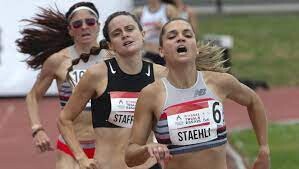
Staehli, who is now training stateside as a member of the New Balance Boston team in preparation for the 2023 World Athletics Championships in Budapest in August, says that while running continues to present exciting new professional opportunities, that is only one aspect of what the sport means to her.“Honestly, running has been everything to me,” says Staehli.
“There’s the competition side–the focus on running fast and the competition, and all of that is exciting and fun. But it goes beyond that. Running has shaped my world in every possible way.”
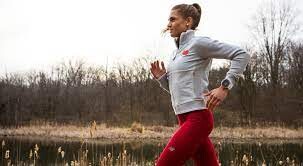
One of the greatest aspects of running, Staehli says, is its power to connect, such as connecting her to her small-town roots. “I would have to say, my favourite place to run is back in my hometown of Lucknow. Anytime I go back home for the holidays, I always love running on those same roads, and just reflecting on the time I spent there growing up.”
Running on those familiar roads, she says, also helps keep her connected to the core values that running imparts. “With everything else that has gone on in life, running has always been the one constant,” says Staehli. “As an athlete, you get to go to new places and work with new people, and often, the places you go and the teams you make are temporary. But what stays with you, I think, are the values you get from the sport, in terms of teamwork and the importance of living a healthy, active lifestyle.”
Perhaps most vital, says Staehli, is running’s power to connect people to one another. She says that running has the ability to bring together people of all backgrounds and abilities from all over the world, and notes how important it is to share that message of inclusivity with the broader running community. Crucial to spreading that message, she says, is dispelling lingering stereotypes about running that may be keeping potential newcomers from lacing up a pair of running shoes for the first time.
“If there was one myth about runners or running that I would like to help dispel, it would be that you have to be fast,” she says. “Speed is just a measurement, and I think a lot of people might be shying away from running because they think they’re not fast enough. But that’s just not true. The truth is, you don’t have to be fast to be a great runner.”
That point was brought home for Staehli recently as she watched participants cross the finish line of the Boston Marathon. “Watching the Boston Marathon this weekend was impressive. It was almost more impressive to see the runners who might be considered ‘average’ cross the finish line. For these runners, their effort is no less than the elites trying to hit their pace.
“Time is irrelevant. I hope we can continue to move away from putting such a focus on time, in terms of the wider running community, and instead look at the people behind the performances.”
She adds that running offers many opportunities for connection beyond running events themselves. One that Staehli is particularly proud to be a part of is the ReRUN Shoe Project, an initiative Staehli co-founded in June 2016 to collect and donate lightly used running shoes to local communities in five cities across Canada.
“It’s another example of building these connections, and it keeps me pretty busy outside of training.”
(05/25/2023) ⚡AMPby Paul Baswick
127th Boston Marathon Raised $40.2 Million For Non-Profit Organizations
The Boston Athletic Association (B.A.A.) has announced that $40.2 million was raised for more than 200 non-profit organizations through this year’s 127th Boston Marathon, held on Patriots’ Day, Monday, April 17.
The fundraising total marks the highest amount raised surrounding a single Boston Marathon, breaking the previous mark of $38.7 million set in 2019. Combined, the B.A.A. Official Charity Program and John Hancock Non-Profit Program have raised $500.2 million since the charity program’s inception at the 1989 Boston Marathon.
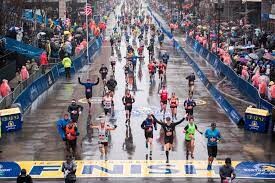
“Philanthropic and fundraising efforts surrounding this year’s Boston Marathon hit record highs in 2023, a testament to the hard work and dedication of all participants running for greater causes,” said Nicole Juri, B.A.A. Director of Development. “More than 200 charities and non-profit organizations will benefit thanks to the efforts of our fundraising participants.”
The $40.2 million raised this year includes donations raised through the B.A.A.’s Official Charity Program, the John Hancock Non-Profit Program, and from other qualified and invitational runners. 2,537 participants ran as fundraising athletes at the 127th Boston Marathon. Further details can be found on the Boston Marathon’s fundraising page through GivenGain.
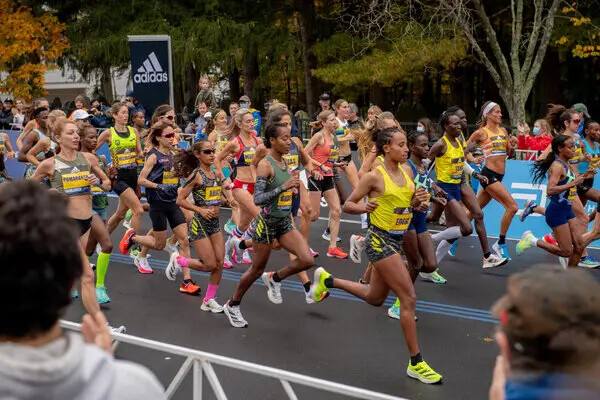
“We are proud to cap our 38-year principal sponsorship by setting a new fundraising milestone this year,” said Tom Crohan, VP & Counsel, Global Head of Community Investment at John Hancock and Manulife. “Thank you to every runner, volunteer, donor, and non-profit partner who contributed to these record-setting results. It’s an honor to have helped build a legacy of impact, and we are proud of our collective efforts to help make lives better for those served by our community partners.”
Leading up to Boston Marathon race day, the B.A.A. and John Hancock hosted a variety of fundraising giving initiatives to support athletes running for causes, including Boston Marathon Giving Day on March 15. Through Boston Marathon Giving Day, $1,041,766 in donations was raised over a 24-hour period.
The B.A.A. has annually provided non-profits associated with the B.A.A. Official Charity Program and John Hancock Non-Profit Program with invitational entries into the Boston Marathon. Each non-profit organization directly manages its own application process, athlete selection, and fundraising minimums, deadlines, and requirements.
The B.A.A. will notify non-profit organizations who have been selected to participate in the 128th Boston Marathon as part of the B.A.A. Official Charity Program this Summer. More information can be found on the B.A.A. Official Charity Program.
The next B.A.A. event is the B.A.A. 10K presented by Brigham and Women’s Hospital on Sunday, June 25. Registration is currently open.
(05/24/2023) ⚡AMPBoston Marathon
Among the nation’s oldest athletic clubs, the B.A.A. was established in 1887, and, in 1896, more than half of the U.S. Olympic Team at the first modern games was composed of B.A.A. club members. The Olympic Games provided the inspiration for the first Boston Marathon, which culminated the B.A.A. Games on April 19, 1897. John J. McDermott emerged from a...
more...





